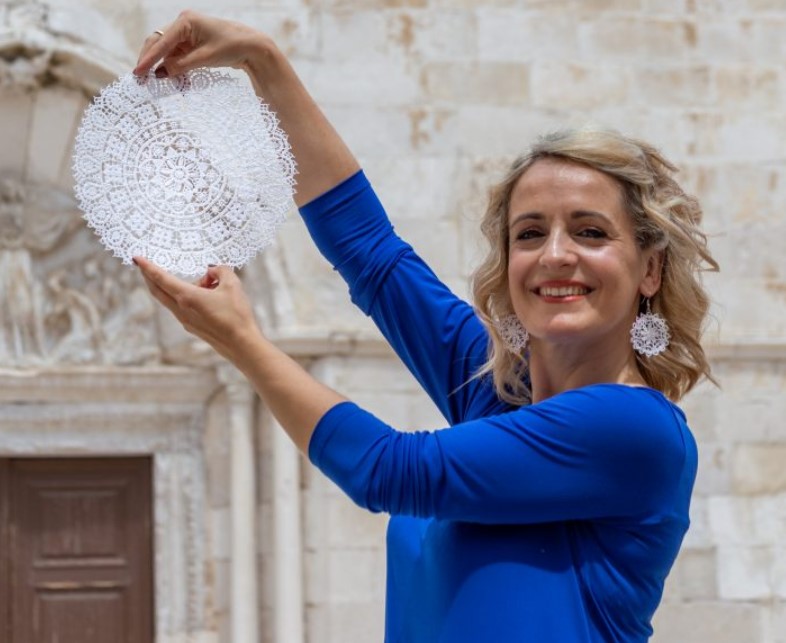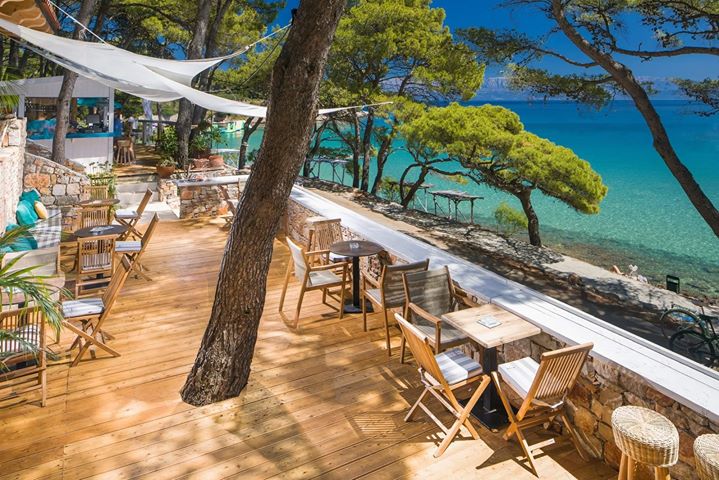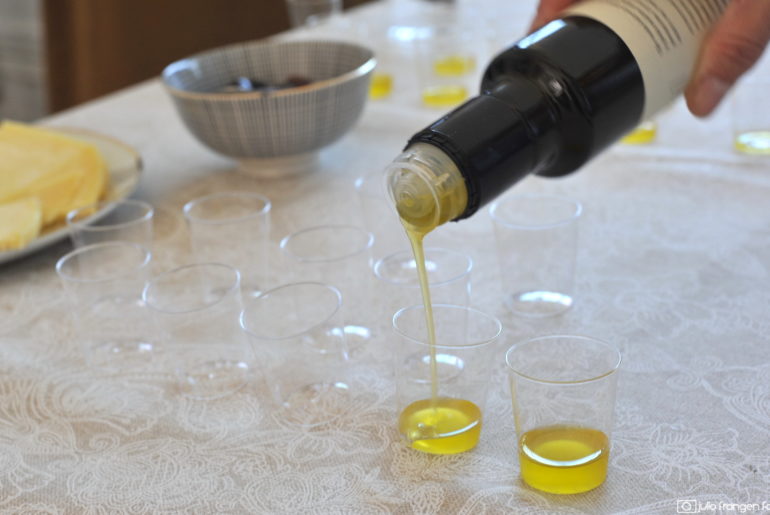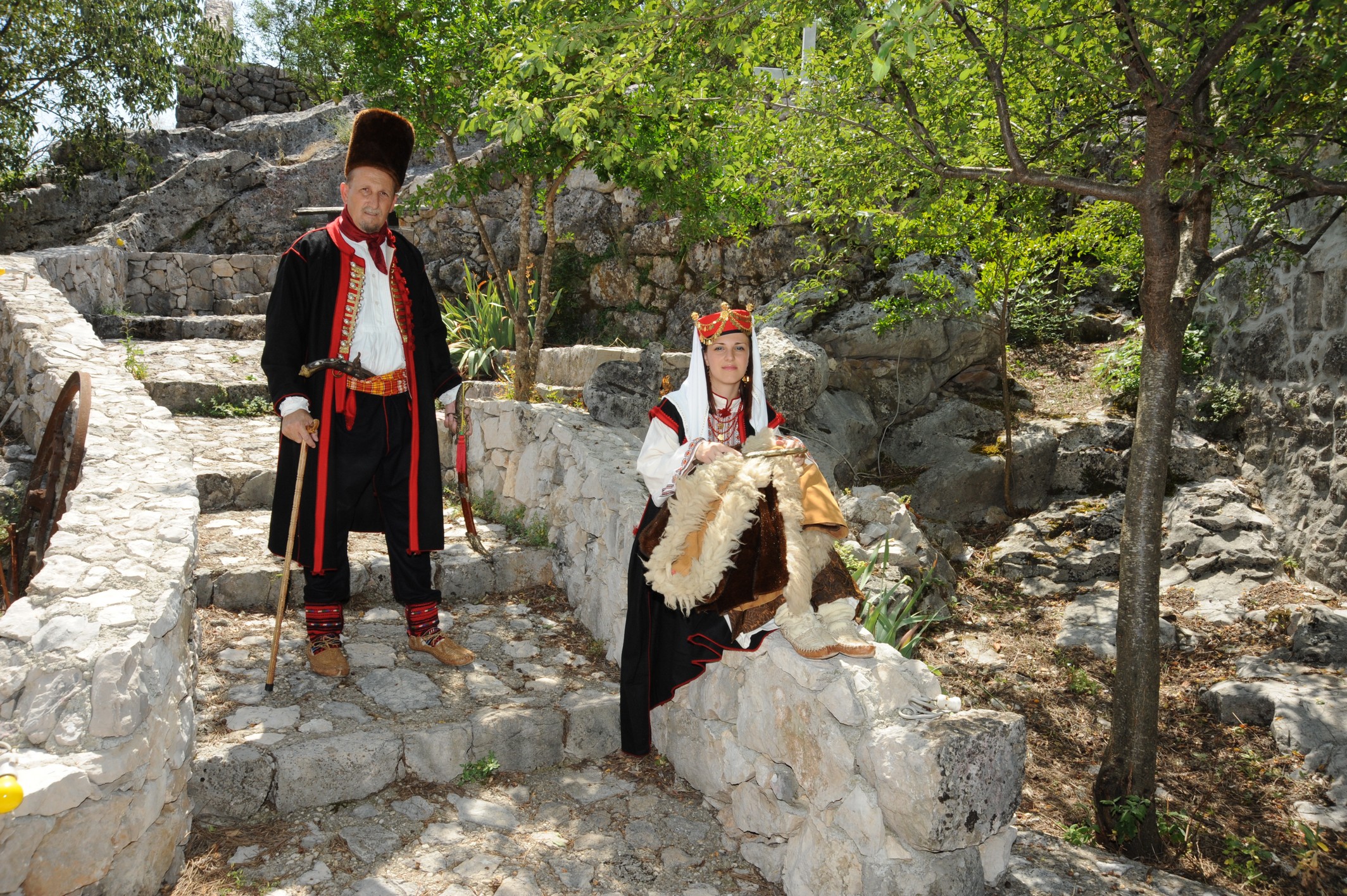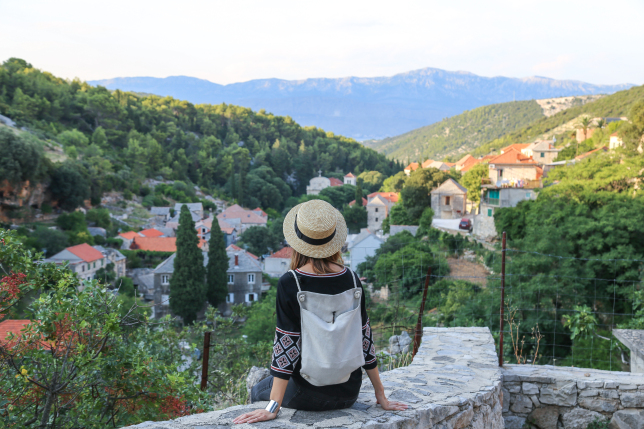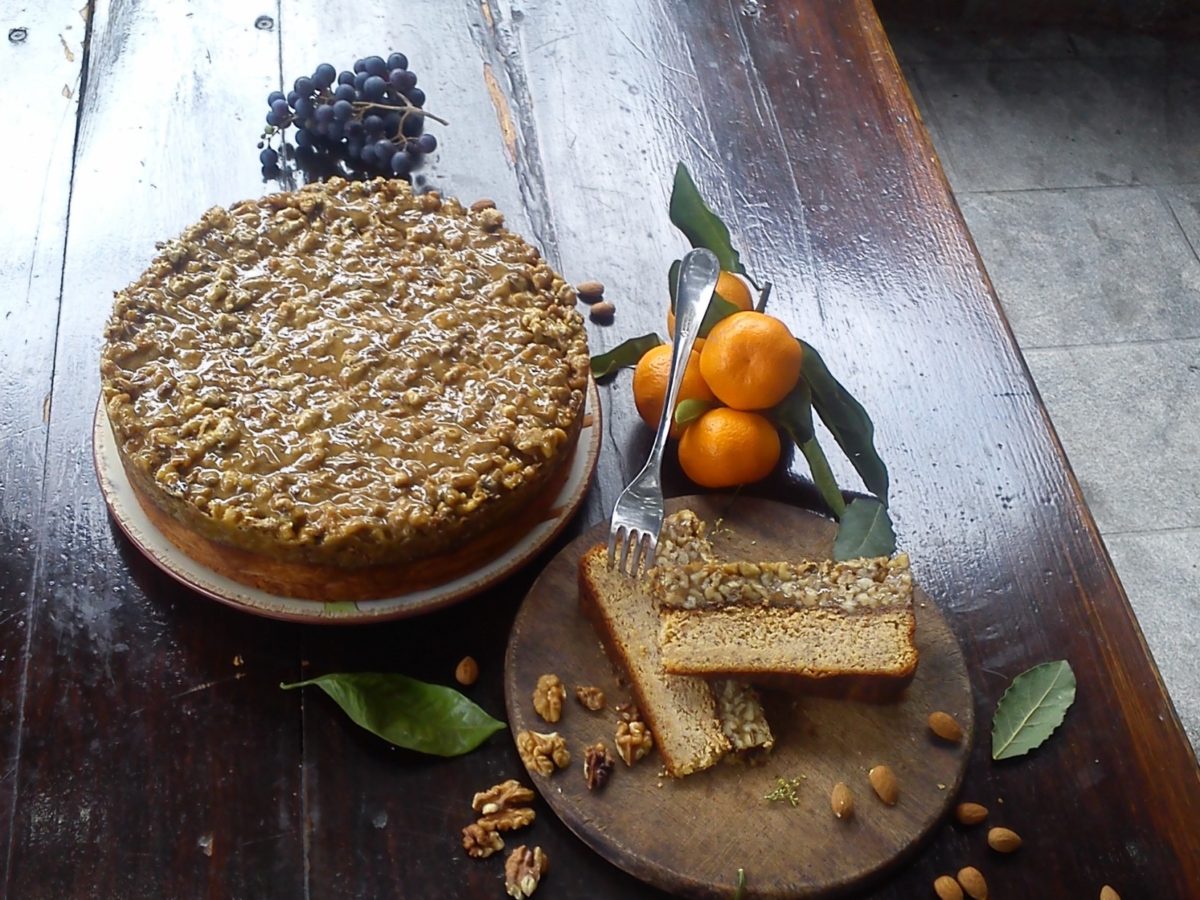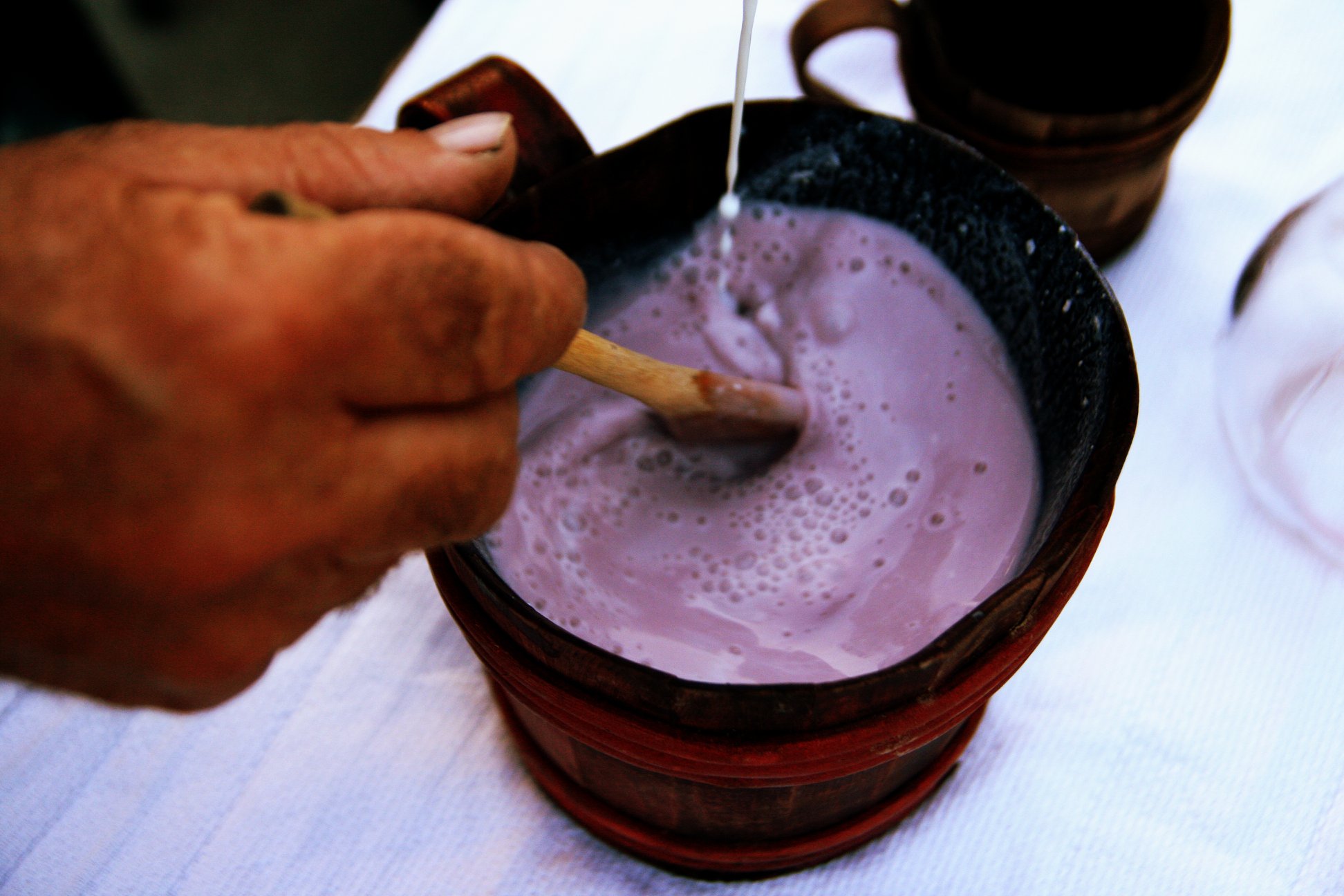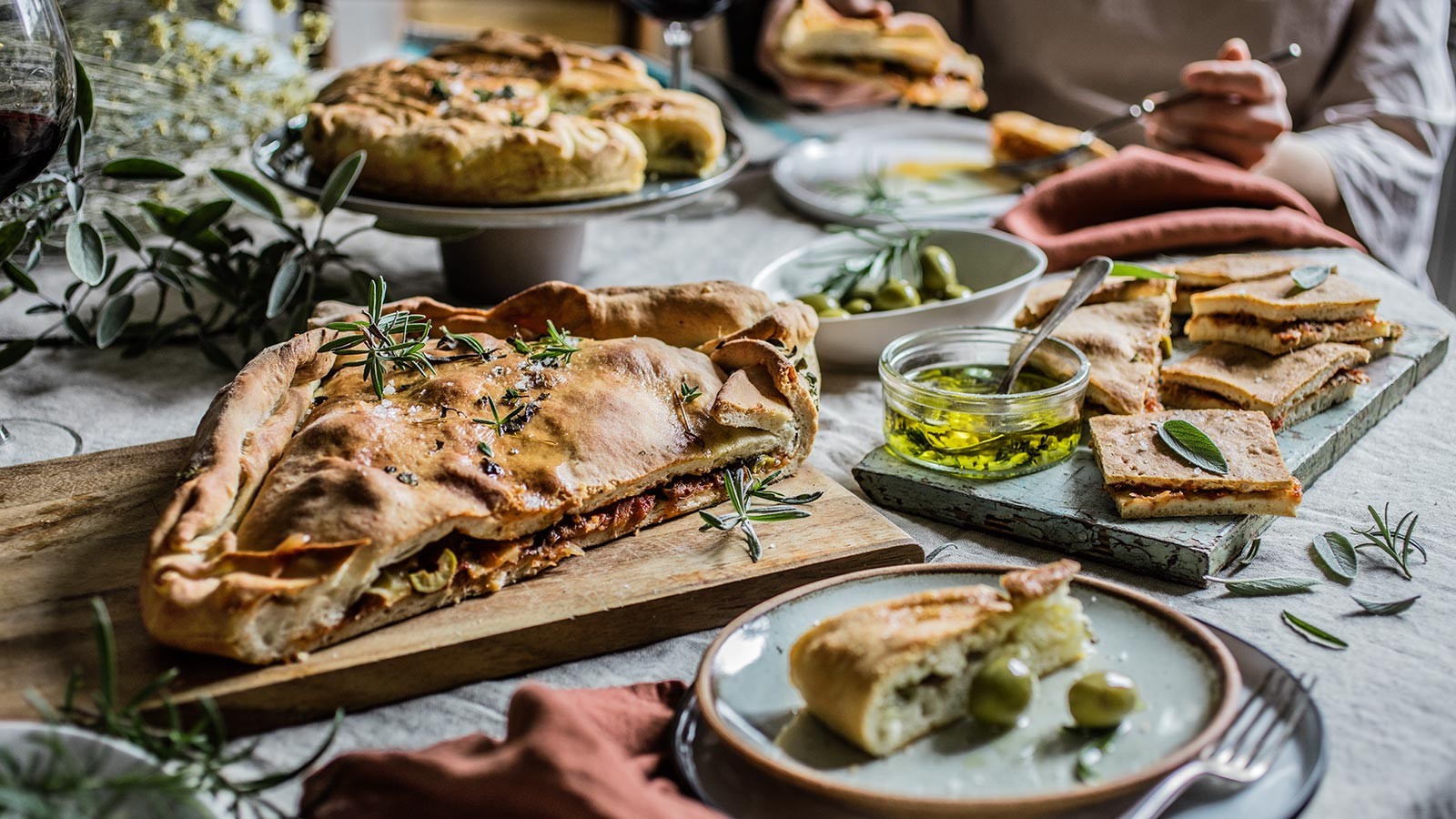Five stories from the island of Pag for a magical experience of the town of lace, salt, cheese and stone
The very first associations most people have when Pag Town is mentioned, are more than likely lace, salt, locally produced cheese and of course - the fact that this special island looks just like the surface of the moon. Pag is all of that, and much, much more.
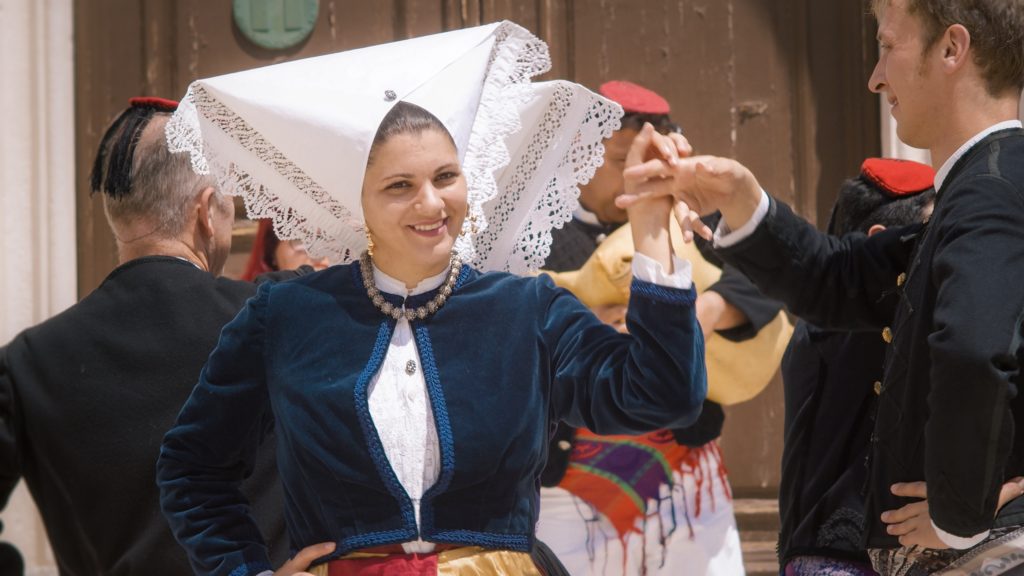
There’s a true wealth of gifts provided by nature, even if at first glance it seems as if the bizarre, otherworldly looking appearance of Pag makes it seem barren. The geological makeup of this island makes it appear harsh and unforgiving, battered by merciless storms. It is precisely because of those sometimes difficult conditions that has seen Pag able to withstand the elements and all possible adversities. That alone has rendered Pag strong and resilient.
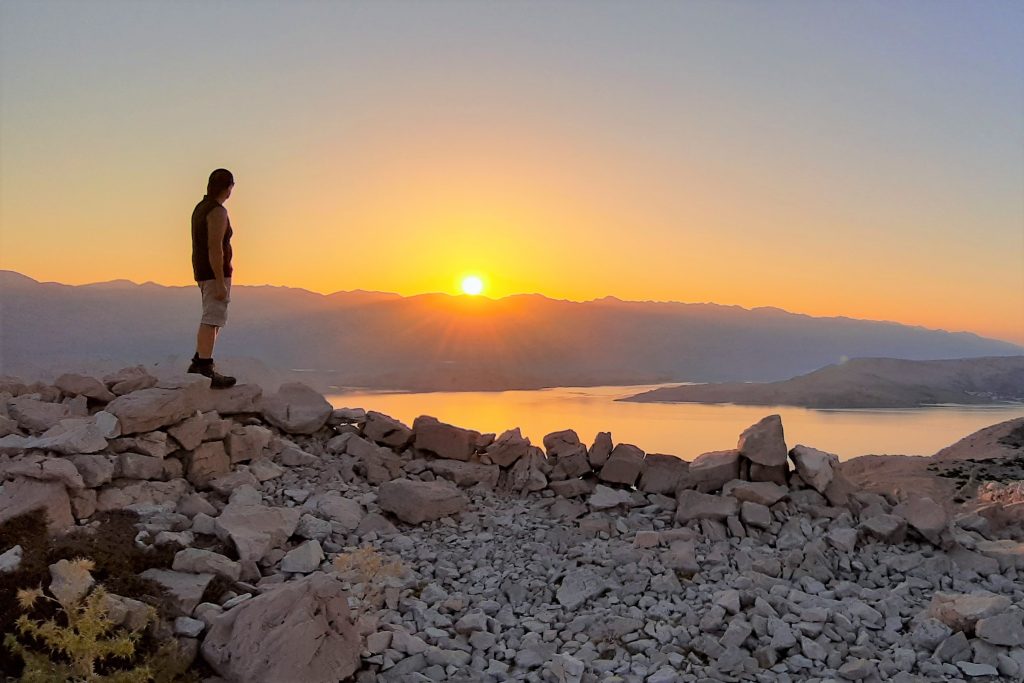
Pag Town emerged from those often pitiless conditions, much like precious pearls emerge from hard, impenetrable shells. This is a town with a truly special atmosphere, impregnated with the aromas of its rich cultural history. That long history shows in all of its stone streets, as well as in its impressive former palaces where the spirit of Mediterranean life comes alive.
In this idyllic stone town, architectural wonders like old churches, palaces and other cultural and historical monuments transport us directly back to ancient times, and they tell stories of their own…

- The permanent salt exhibition
Pag provided the world one of the most valuable things it has, and over which countless battles were fought for centuries - salt - or as many call it; white gold. The centuries of local salt production are presented to the public through a unique exhibition in the 1st Salt Magazine. This is an interesting setting where objects used to extract this precious salt over the centuries are displayed in a unique way, as is the way of life of the inhabitants of Pag Town, most of whom are very closely connected with salt production.
The exhibition can be seen in two parts: the first part involves a stroll through the museum accompanied by a guide, while the second part allows you to watch a short film about salt production throughout history.
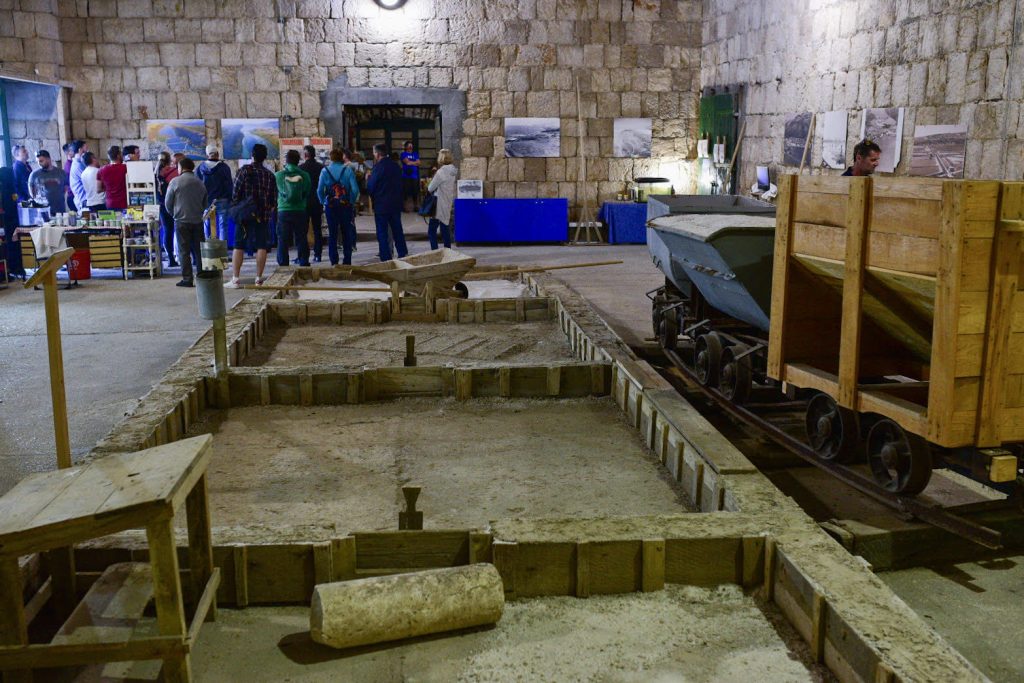
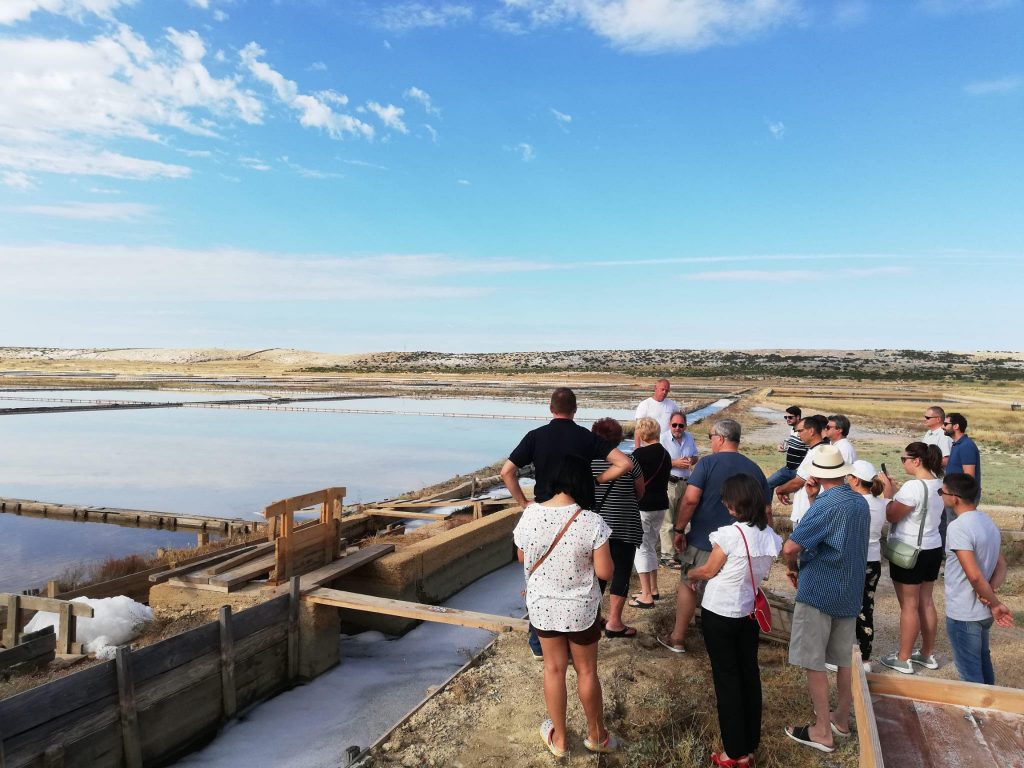
2) Mornings spent out in the salt flats
We use it every single day, but how much do we really know about it? Have you ever found yourself curious about how salt is actually made? Ever wondered what the difference between salt and a salt flower (fleur de del) is? The answers to all of the above (and more) are offered by open-air workshops, accompanied by an expert guide from Solana Pag. Spend the morning in an original way and learn everything about Pag salt production’s past and present. You will learn about its composition, you’ll be able to look at the salt basins and their accompanying sluices and canals, and get better acquainted with the ecological network that includes Solana Pag. You can even try your hand at collecting the precious salt yourself!
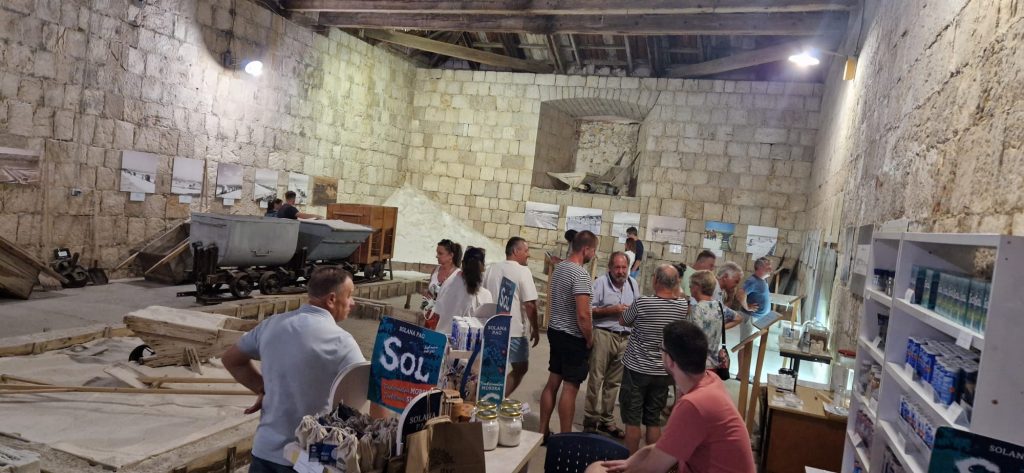
3) The Gallery of Pag Lace
Lace is an extremely important part of the very long history of Pag. Throughout the lives of those born on Pag, one unbroken, delicate thread of lace symbolises all of the beauty, but also the difficulty of living in Pag Town, and on the island of stone and salt in general. The centuries-old tradition of making Pag lace gained additional value when it was rightfully entered into the UNESCO register of intangible cultural heritage back in 2009. Since 1998, the Pag Lace Gallery has been operating in the Duke's Palace in Pag Town, organised by the “Frane Budak” Society of Pag Lacemakers.
In the gallery itself, you’ll be able to watch the process of just how Pag lace is made and see the creations of various lace techniques, which are incredible works of art made by the diligent, talented hands of Pag’s traditional lacemakers.
There is beautiful lace dating from different historical periods in the gallery's rich collection. There are replicas of Pag lace based on old designs, various textile items which were integral to the typical interior of the homes built on Pag, as well as part of the clothing items worn throughout history by Pag Town’s residents. As well as exploring how lace was made and used throughout the centuries, you’ll also get to see plenty of creations from far more recent times.
The International Lace Festival has been being organised on Pag each June for thirteen years now, which highlights just how important Pag lace is in the lives of the local residents. The festival successfully brings together a large number of lacemakers from across the country and the rest of the world. When admiring the old photographs of Pag lacemakers from long ago (which are interwoven with lace themselves) in the stone building of the Duke's Palace, notions of the transience of life and the cultural values that make Pag Town so special will overtake you.

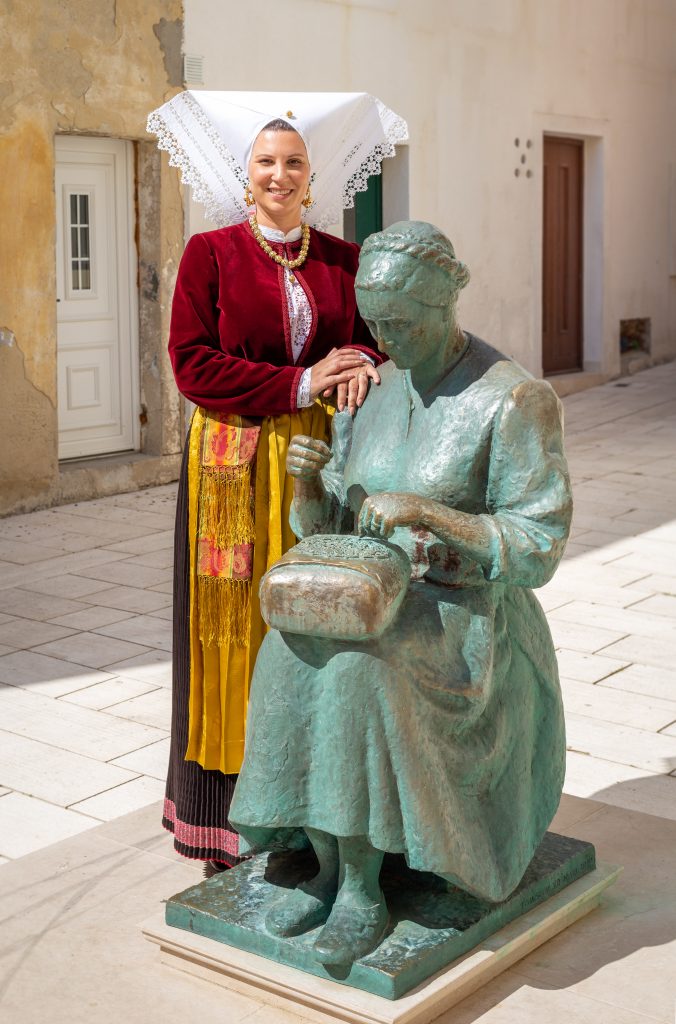
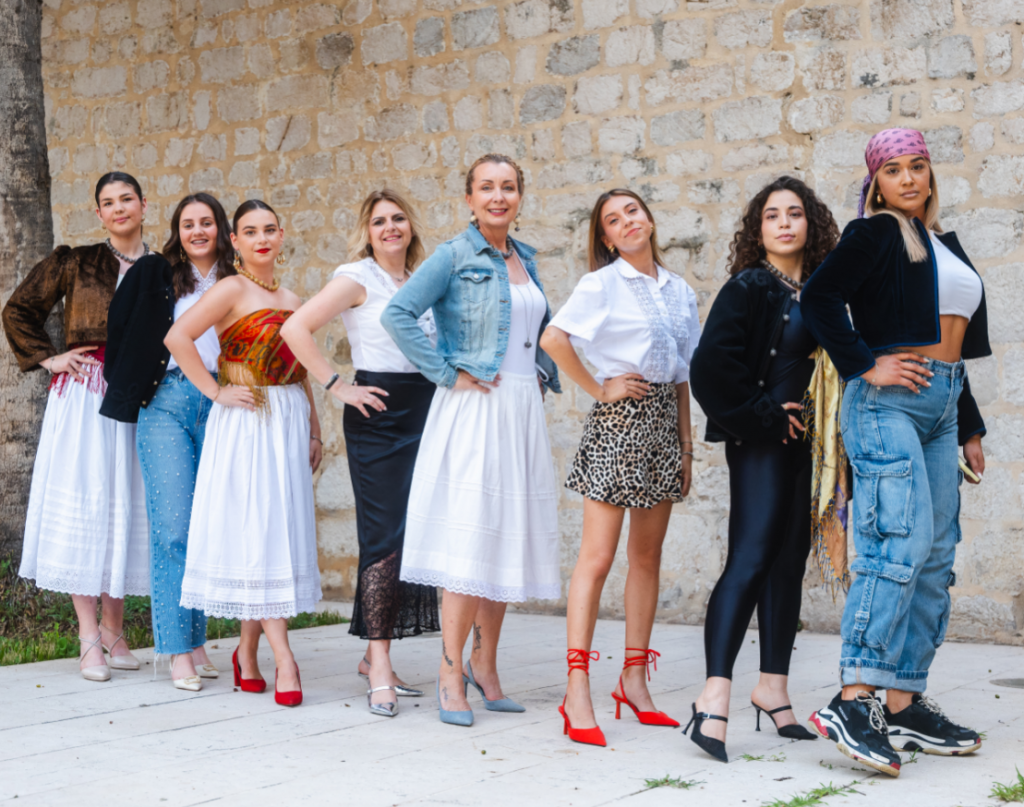


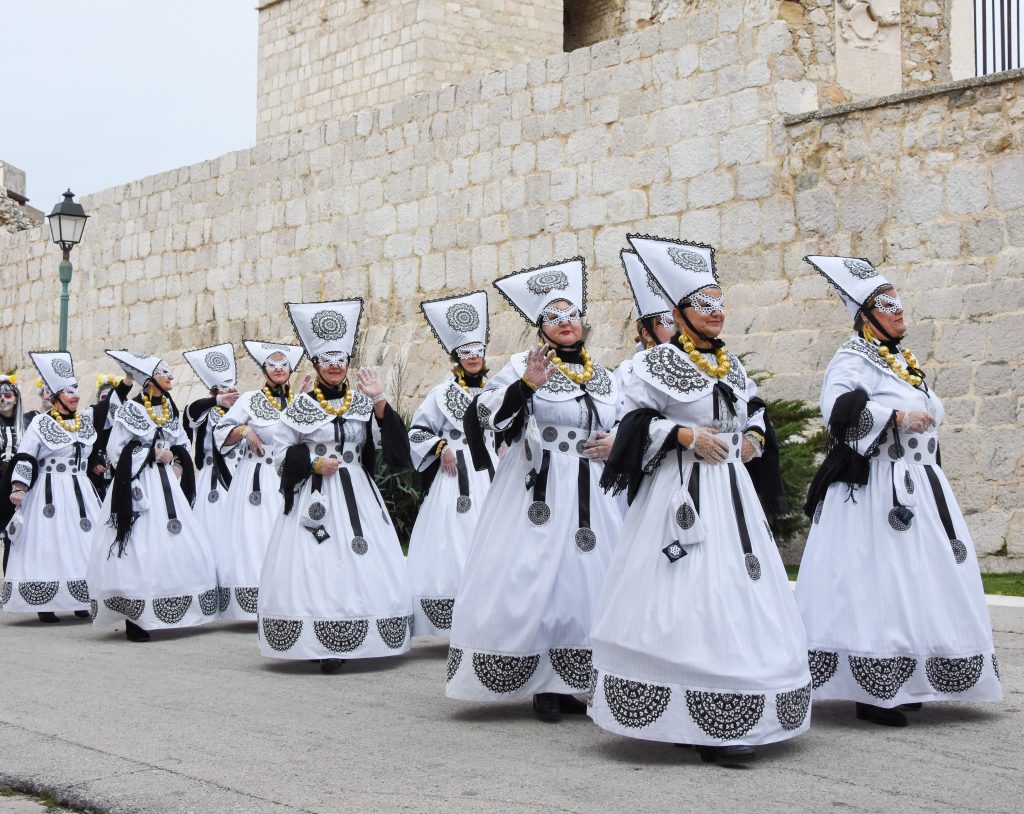
4) The exhibition of sacred art at the Benedictine Convent of St. Margaret
You’ll be able to enjoy numerous beautiful exhibits in this renovated and extremely beautiful space, among which the Reliquary of the Thorn of the Crown of Christ stands out. It is a fascinating authentic thorn from the Crown of Christ that was entrusted to the Benedictine sisters from Pag Town for safekeeping all the way back in 1443! It is the only Holy Thorn in the entire world, along with the Crown of Thorns kept in the Cathedral of Notre-Dame in Paris, which has had the Vatican's confirmation of its authenticity.
There is a small but invaluable painting of the Madonna and Child among the other valuable exhibits. This rather remarkable image is associated with the circle of no less than the world famous Renaissance painter from Padua, Andrea Mantegna.
The beauty of Pag lace comes to the fore once again when you visit the ground floor of the building. You’ll also be able to sew some of your own, in a modern digital way.
The symbol of the formerly powerful Venetian Empire will be the one to greet you a little later on. This is an impressive, large marble relief of the Lion of Saint Mark from the sixteenth century. The formidable marble cat once stood proudly above the gates in Pag.
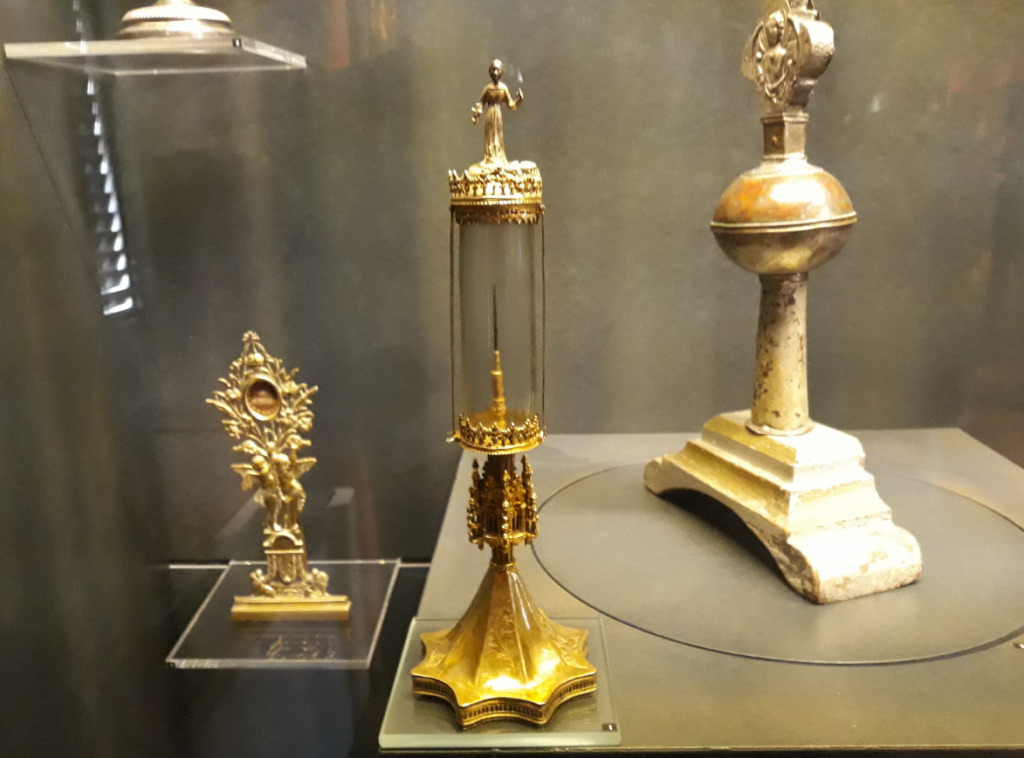


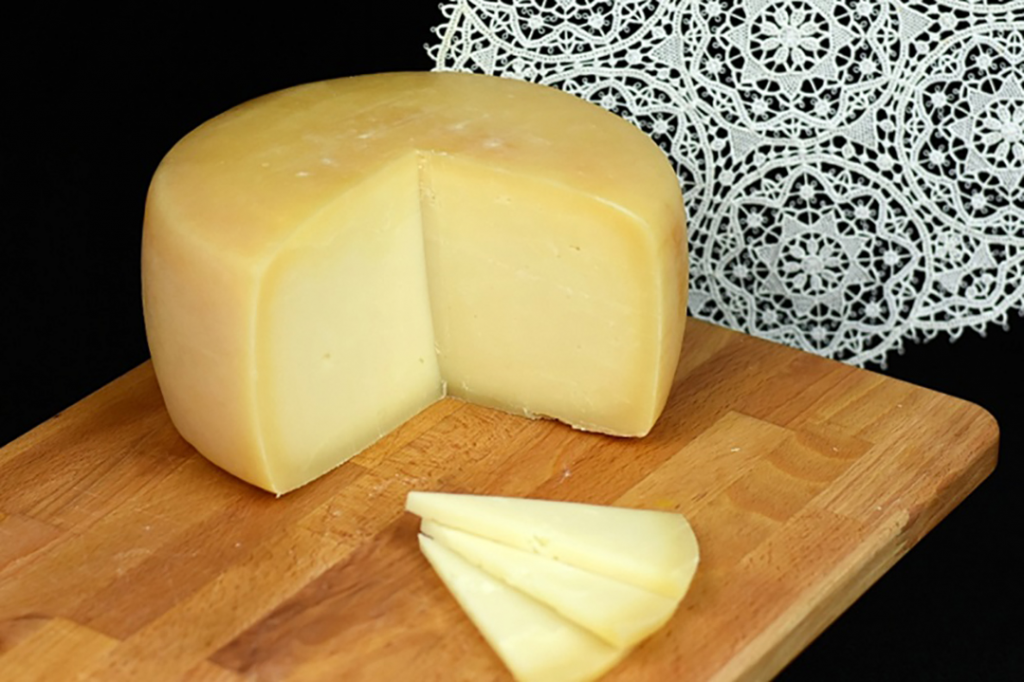
5) The story of Pag cheese
Lace holds an immeasurable level of importance to Pag Town and indeed the entire island, but it doesn’t hold that title alone. The famed Pag cheese is also part of the very soul and essence of the island. The story behind Pag cheese is a genuinely wonderful one. It is about an island of stone where only aromatic herbs grow, and where one of the best cheeses in the entire world is produced. Pag cheese put not only Pag but the whole of Croatia on the cheese map of the world and became one of the most recognisable Croatian products on a global scale.
Pag Town’s keen visitors can come and unlock the old secrets of Pag’s cheese producing and sheep farming traditions, as well as explore the connection and intertwining of the island’s nature with the production of Pag cheese. A tour of the Pag cheese factory, the island's oldest, will reveal how the best Croatian cheese is produced accompanied by an expert guide and tasting sessions in the most authentic setting imaginable.


More: Tz grada Paga
Rural pearls of Dubrovnik-Neretva County - unreal fairy-tale places are waiting to be discovered
Step out into the sparkling cosmos of true southern hospitality where you don't look at the time, but at the sun.
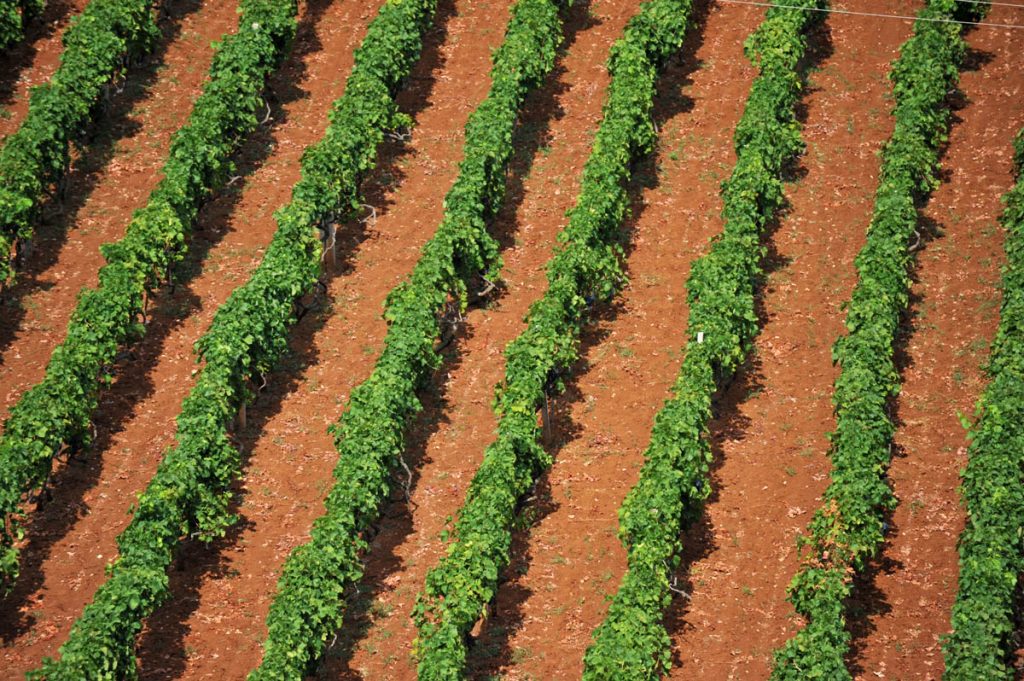


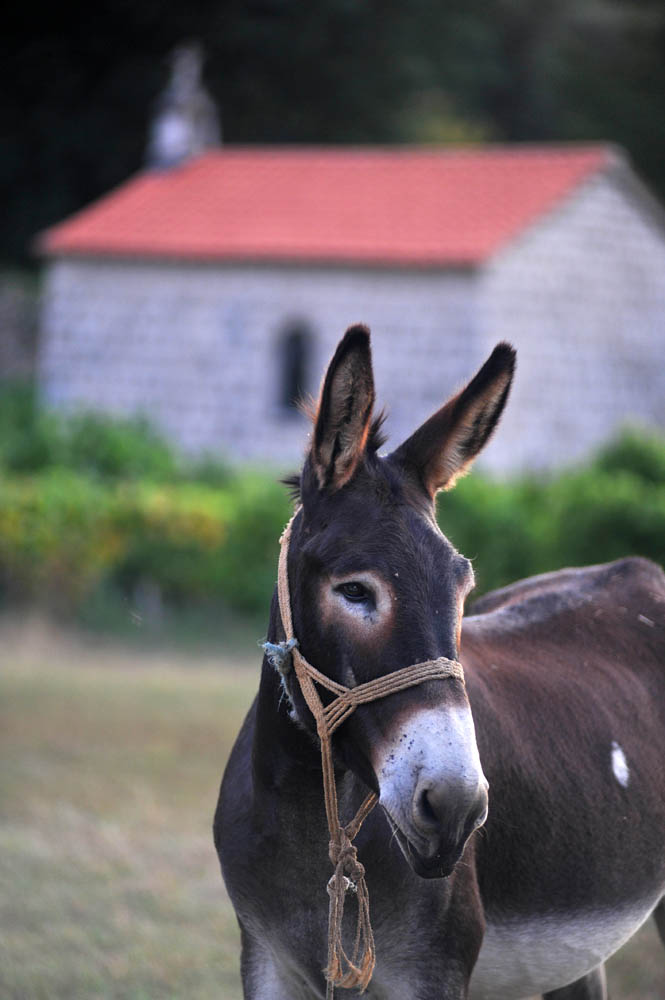
Southern Dalmatia is just like the Mediterranean - inexhaustible and immeasurably deep, like a magical book in which a brand new page is written every day, tickling all the senses.
Visiting Konavle, the Dubrovnik coastline and the Dubrovnik Municipality, one gets to know not only the divine, unreal fairy-tale nature, but also the spirit and culture of the hosts and their centuries-long local traditions.
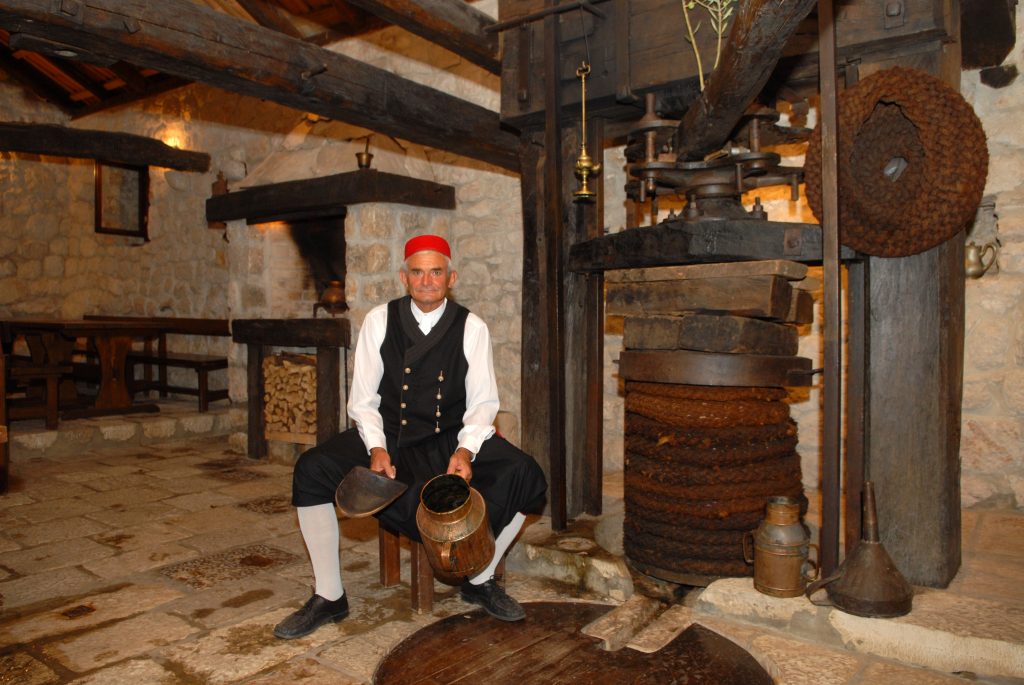
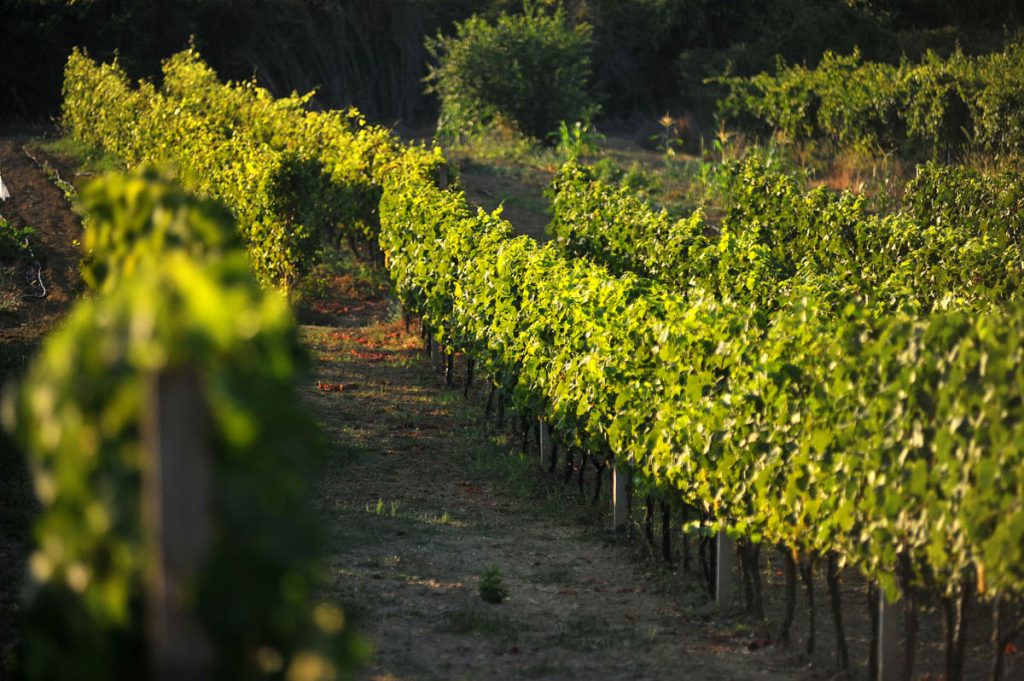
Only twenty kilometres from Dubrovnik lies beautiful Konavle - Dubrovnik's golden valley, a rural jewel full of Croatian treasure chests. Vast vineyards and olive groves, the green of the tall cypresses, the harshness of the karst rocks, and the deep blue of the Adriatic are the colours with which this climate has been generously rewarded.
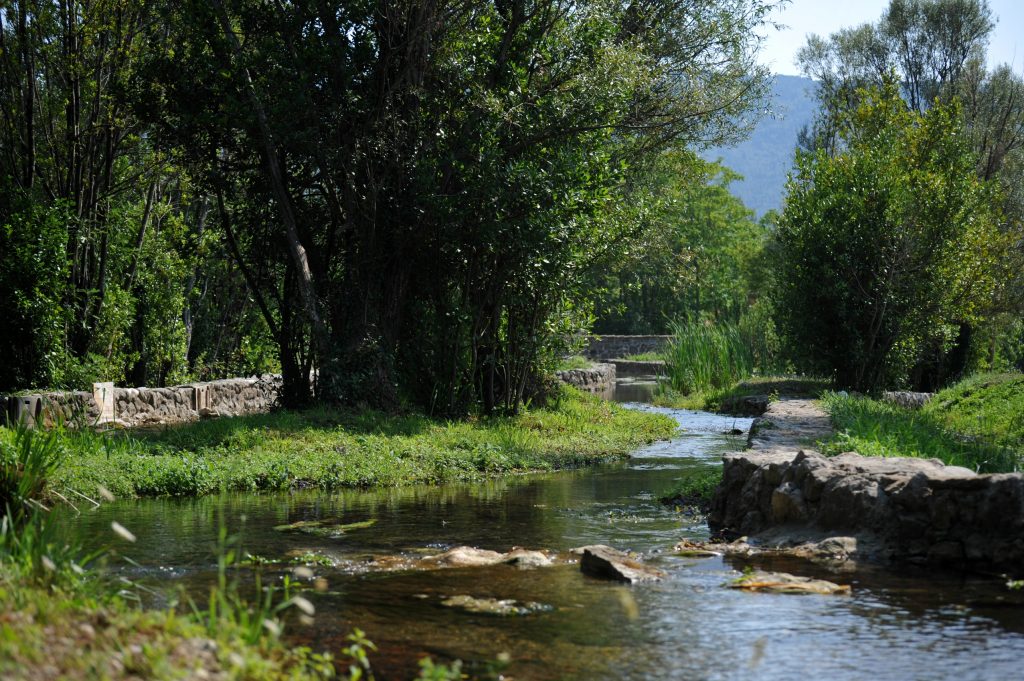
Blend in with nature by walking or cycling along the well-maintained paths, smell the healing scent of the local Mediterranean herbs and refresh yourself with the clear water at the source of the Ljuta River.

Try your hand at horseback riding: with a soothing trot perched on the backs of these noble animals, the experience of vast meadows and fields is utterly unforgettable. Head along the old Austro-Hungarian paths interwoven with indestructible dry stone walls and conquer the beautiful peak of the imposing mountain beauty of Sniježnica, Sveti Ilija.

Discover hard-to-reach, untouched beaches ideal for a true Robinson-style holiday and explore the mysterious depths of the surrounding sea which hide the largest amphora site in all of Croatia. Check why the sunset in Cavtat is so special and magical.

You know what they say, when in Rome, live the Roman way, if you're somewhere else, live however the ‘’way’’ is there! What better way to get better acquainted with local traditional ways of production than to try them out for yourself? Picking and processing olives, producing olive oil, that elixir of life; picking grapes and producing wine in a way that has been handed down from generation to generation for hundreds of years.
In addition to Malvasia from Dubrovnik, a wine that was also enjoyed by the ancient Greeks, and during the time of the Republic of Dubrovnik it was a protocol gift from the prince to the guests of Dubrovnik, numerous other autochthonous species are grown down in Konavle, among which, Plavac mali wine really stands out.

See the unreal work and skill involved in local silk production, essential for brilliant silk embroidery, a part of the local Konavle women's costume, the ancestral dress that is still very much alive and present in this, the southernmost Croatian county, to this very day. For a unique souvenir and a truly beautiful decoration, reward yourself with a pair of gorgeous Konavle earrings - these earrings have a half-moon shape and are made of gold wire, with a pendant with two small pearl beads. They are an important part of local family treasures which were passed down through the generations and are a living witness of a long tradition and the skillful hands of master goldsmiths.
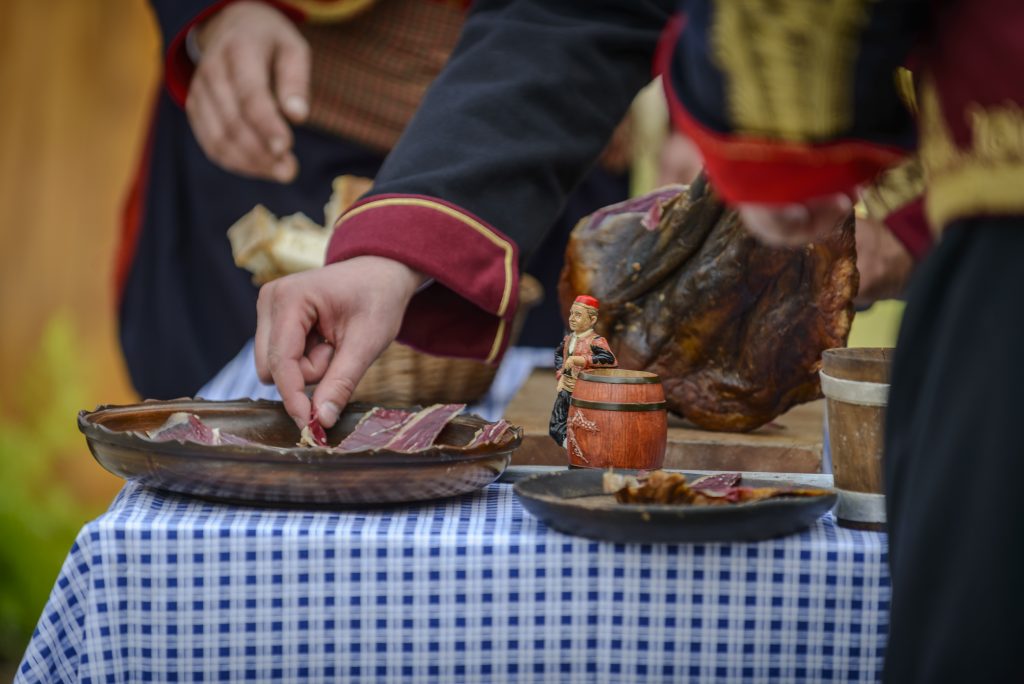
Numerous restaurants and taverns base their rich gastronomic offer on home-made, healthy and traditionally prepared cuisines from Konavle. Organic products from local family farms and agro-tourism facilities will also all captivate you with their fullness of taste and aroma, and many also offer interesting programmes for their guests, such as a school for cooking old-fashioned dishes - so you can become an excellent chef and prepare green menestra, the oldest dish originating from the famous Republic of Dubrovnik, among other dishes which have been being made by Konavle locals for generations.
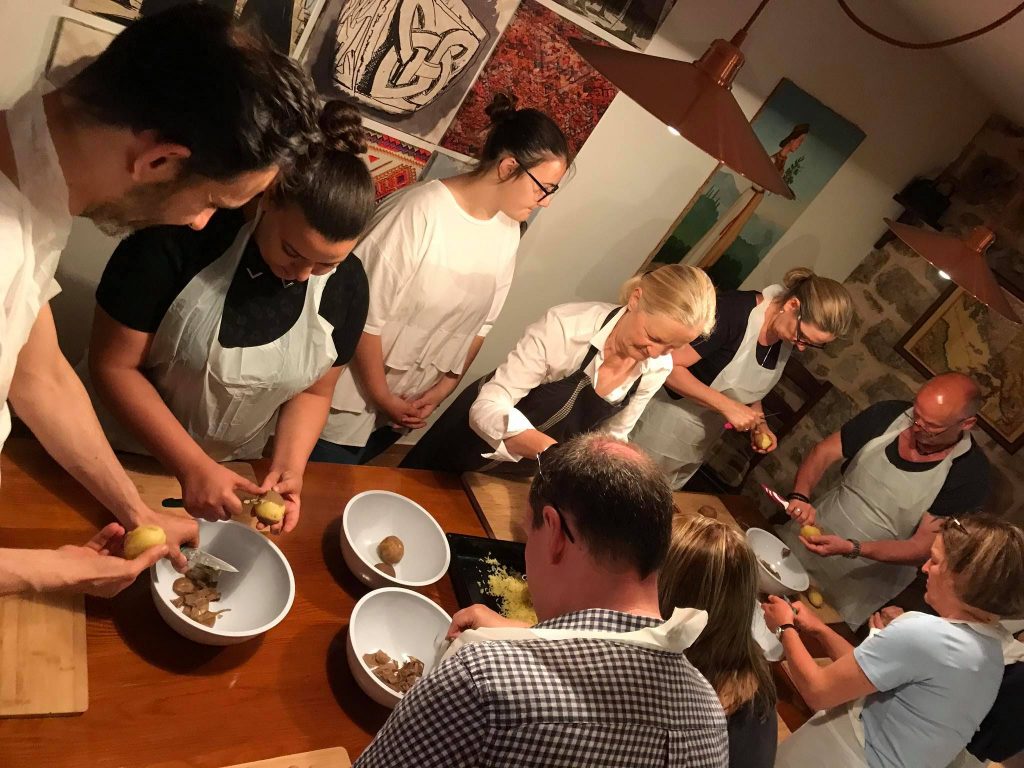
Sweeten your palate up with mantala, a traditional dessert, or refresh yourself with zavajuna, the simple energy drink enjoyed by our ancestors. You should definitely try out the homemade cheese made from mixed cow's, sheep's and goat's milk.
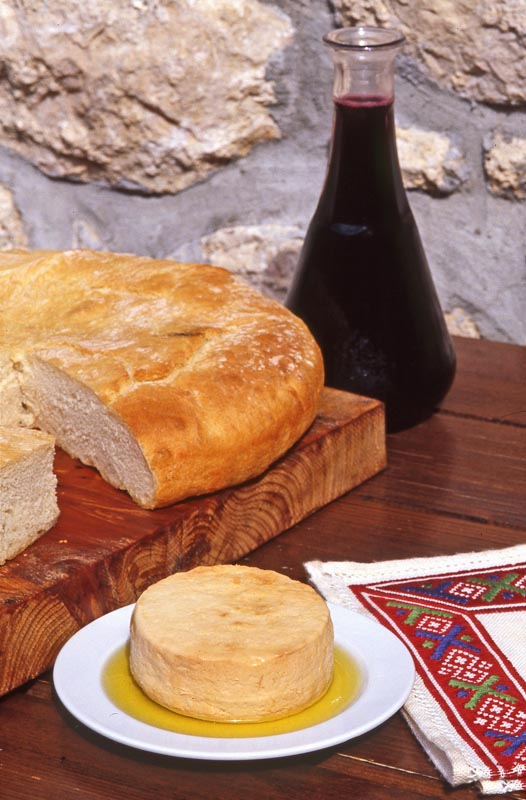
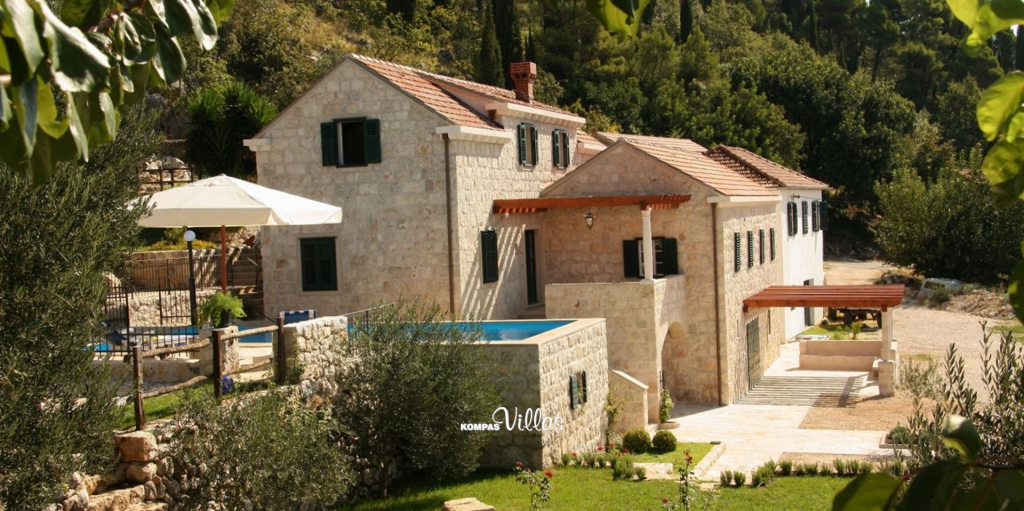
When it comes to finding somewhere to stay, Konavle villas, apartments and other accommodation facilities are waiting for you with open doors and arms.
In the Traditional House of the Dubrovnik Littoral in Slano, there are some interesting facts about prehistory in the area of the Dubrovnik Littoral to be learned. Early Christian sarcophagi, the Prince's Palace in Slano, various maritime traditions, coastal costumes and other historical and ethnographic heritage can all be seen there.
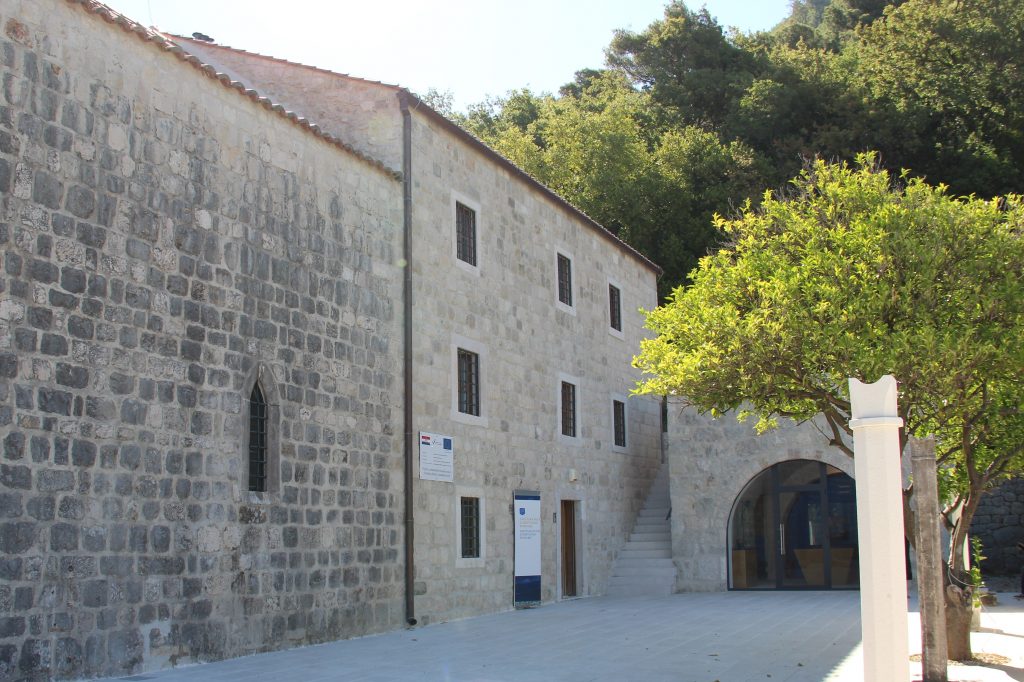

The entire Dubrovnik Riviera is an ethereal space full of enchanting landscapes, picturesque villages, hidden beaches, evergreen thickets and ancient olive groves. Once part of the glorious Republic of Dubrovnik, it has always been at the intersection of historical, economic and trade routes.

History carved into the old stone can be read on stećaks, which are tombstones, of which there are over a thousand in Dubrovnik-Neretva County alone, and the most intriguing is the "Snake Stone’’ located at the Greblje-Bistrina site.
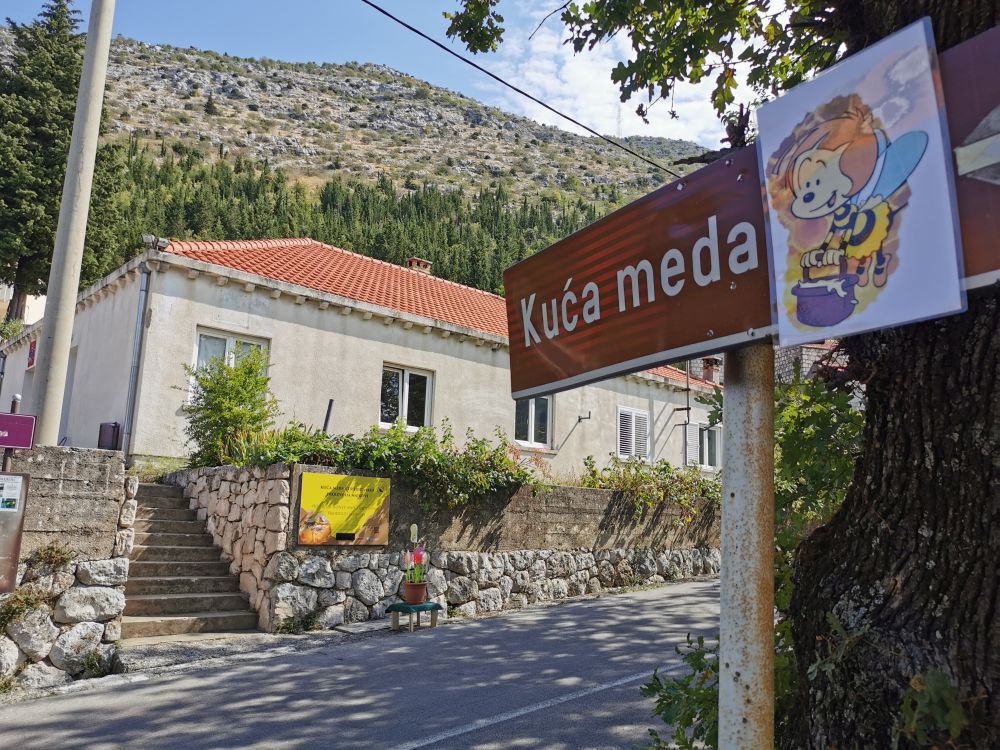
You should definitely visit the House of Honey and Traditional Products in Majkovi, the centre of beekeeping in Croatia’s southernmost county. Bee products are medicinal and prepared in the traditional, proven way of our elders.
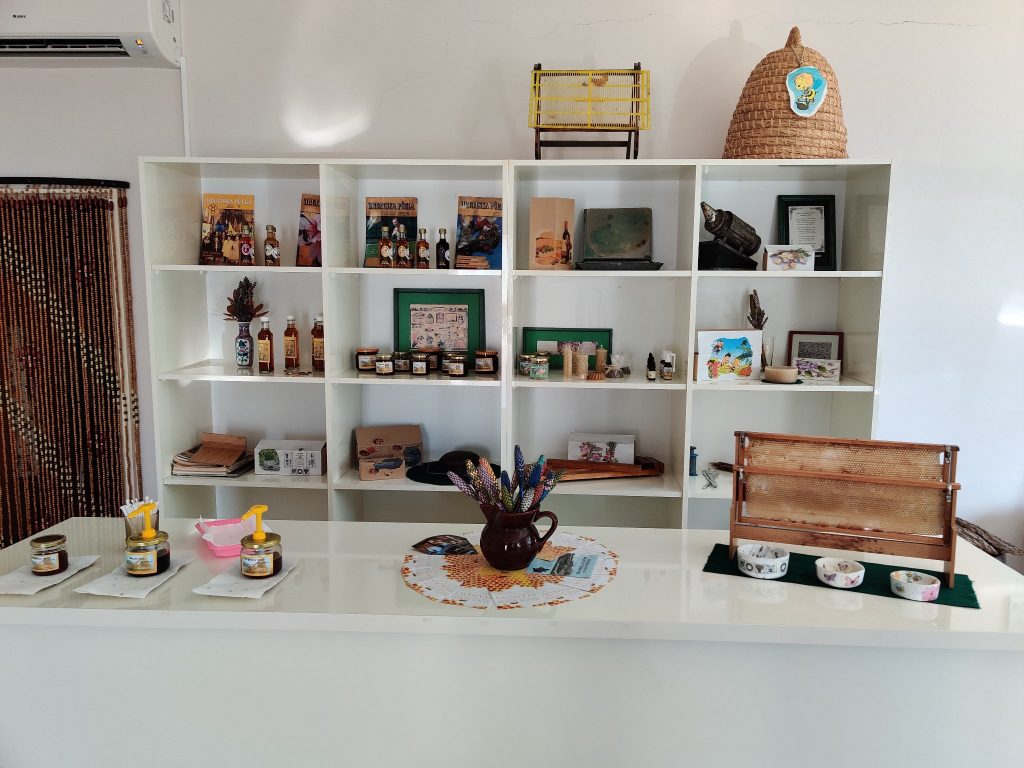
The Dubrovnik Parish is geographically small, but it is a place of hard-working sailors, fishermen, farmers and labourers, precious folk customs, picturesque costumes and rich folklore. Even today, you can hear the lively sounds of the Lijerica, a Dalmatian folk instrument, and watch traditional dancing (kolo). Family jewellery, dignified and rich in gold and pearls, was jealously guarded and proudly passed down as a legacy from generation to generation.
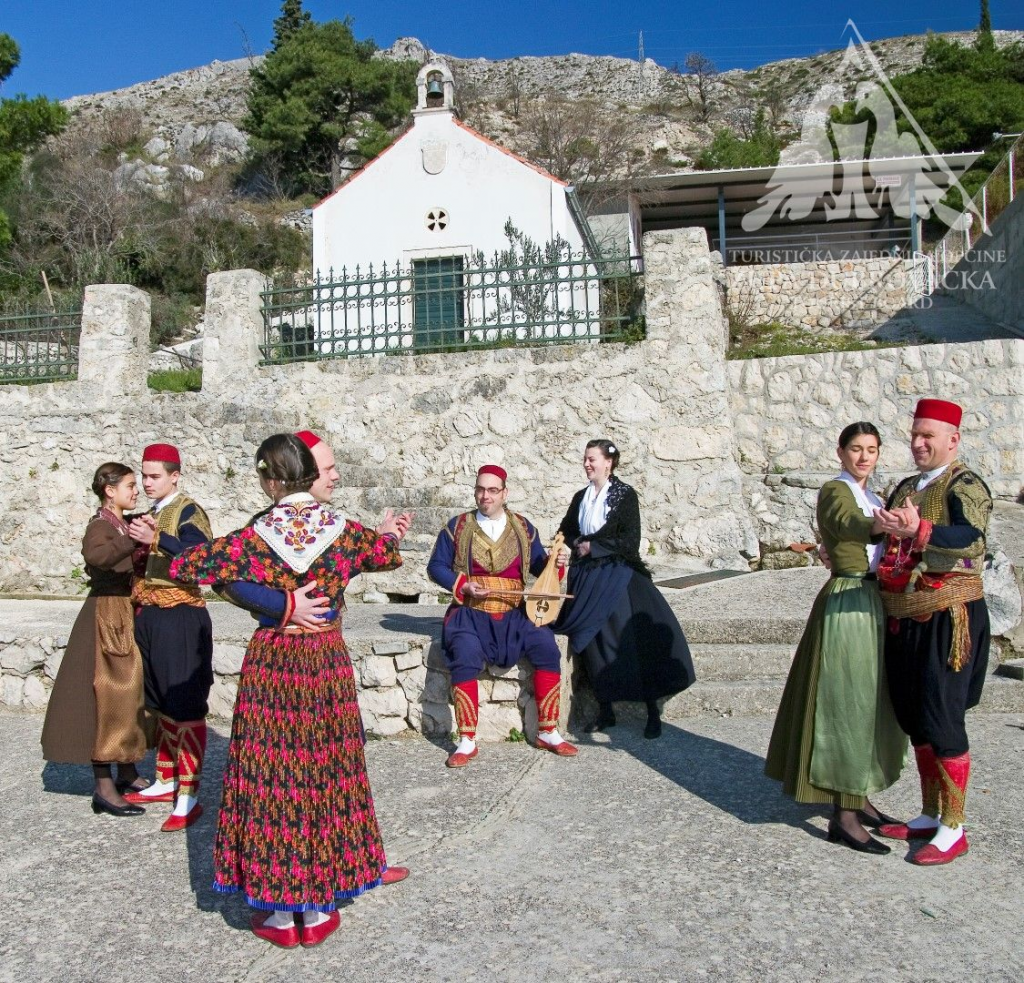
Visitors looking for a more active holiday in Konable can explore this area shaped by beauty through an ATV safari, and for a real adrenaline injection, embark on a jet-ski or zip line adventure.


Allow yourself to be conquered by the passionate south of Dalmatia and preserve a collage of memories woven with the smells and tastes of delicacies, enticing drops of wine and locally made olive oil, the fruits of the calloused hands of weary workers and fishermen.

And most of all, enjoy the endless hospitality of your hosts and take home a sense of community and belonging from this magical part of Croatia.
Photo: Archive of tourist boards of Dubrovnik - neretva county, Cavtat-Konavle, Slano
The magic of a perfect holiday spent in the town of knights
The nature in and around Sinj and the entire Cetina region has always effortlessly provided perfect backdrops ideal for various types of active holidays and outdoor activities. The clear and swift waters of the gorgeous Cetina River lap gently against the vast and fertile Sinj plain, and the karst queen mountains of Svilaja, Dinara and Kamešnica all protect their kingdom with their stone springs..
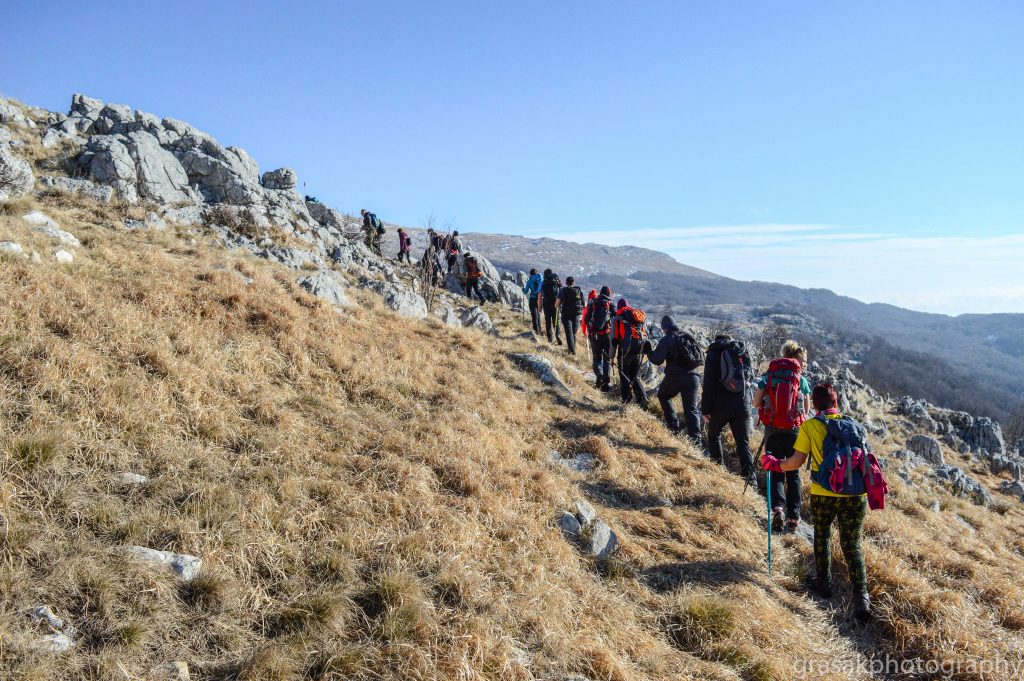
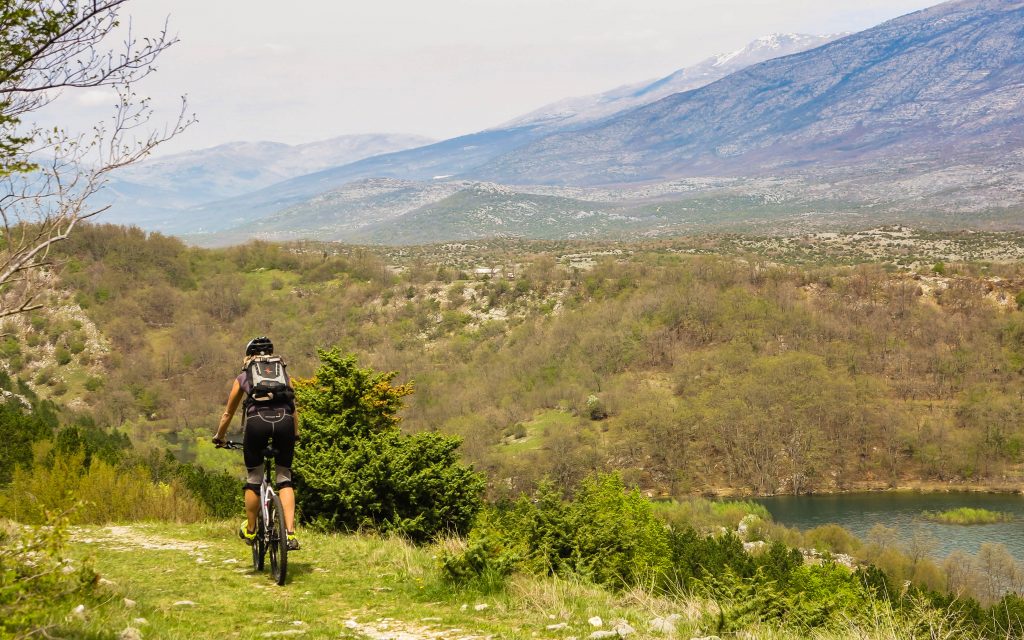
The long tradition of Sinj mountaineering is the best guarantee of an unrepeatable experience filled with conquering magnificent peaks and taking in some utterly spectacular views. Get out of your comfort zone and take a deep breath, filling your lungs with the perfectly clean mountain air, feel alive behind the wheel of a quad vehicle, or design your very own cinematic jeep safari adventure


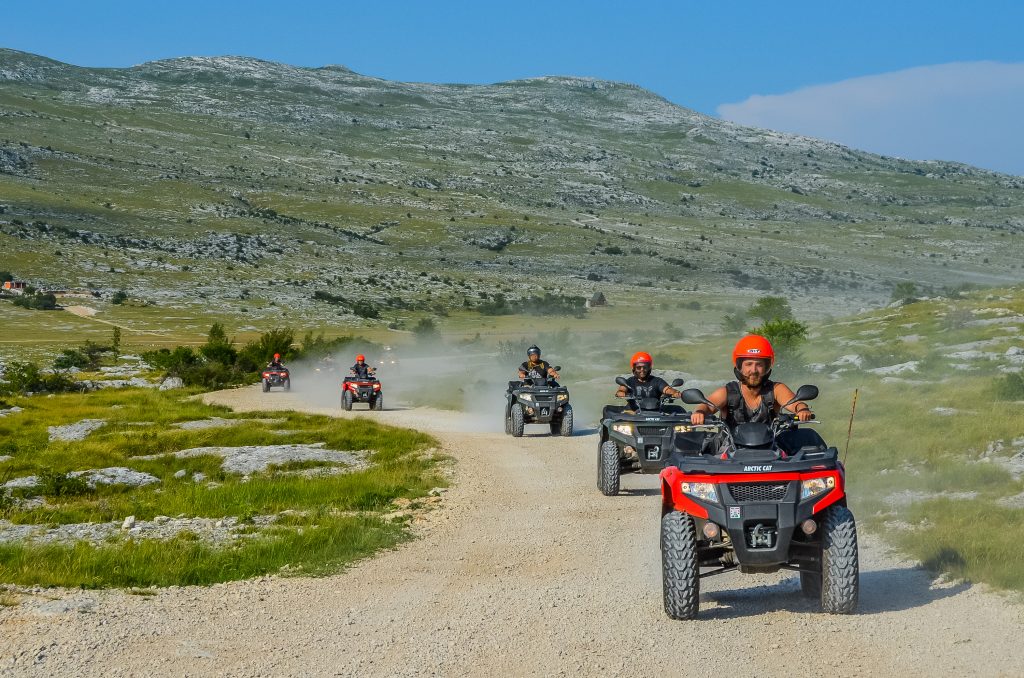
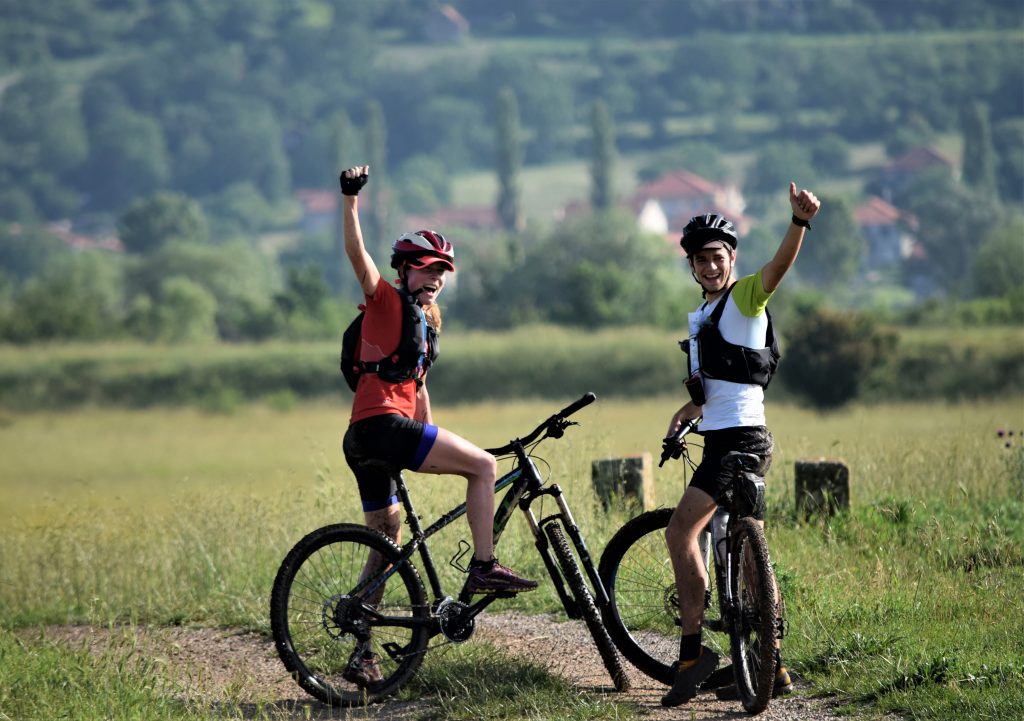
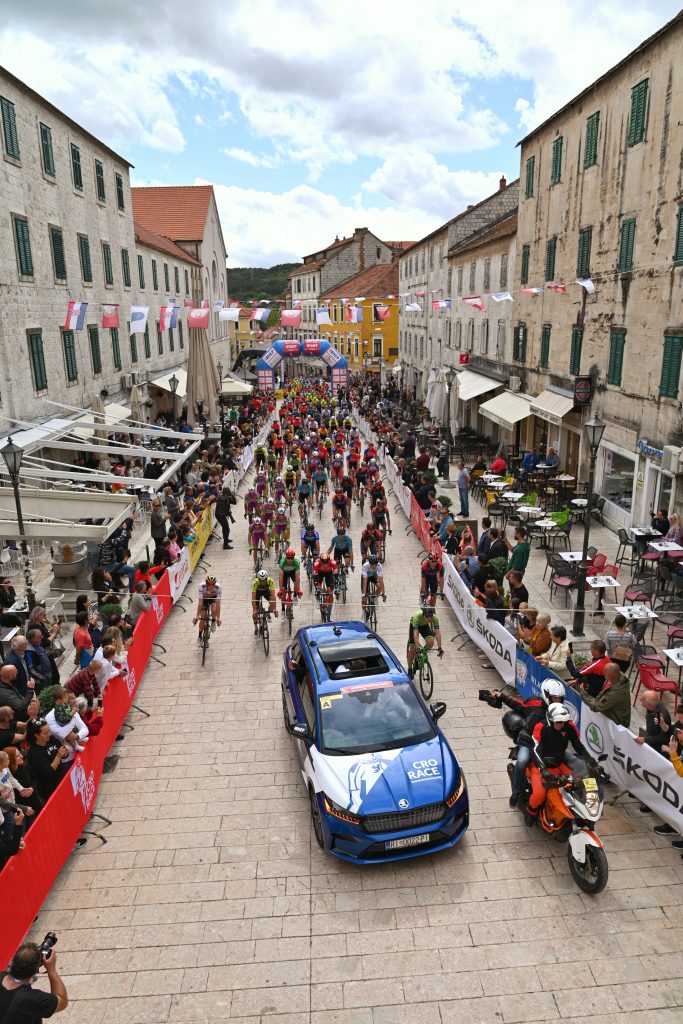
Numerous agencies with ideally designed arrangements will take care of the original experience of the "tamed wilderness" of the stunning Cetina region. Well-maintained bicycle paths will also take you along some ancient roads which have been touched with periods of rich yet very turbulent history. Recently, Sinj has also been the proud host of one stage of the exciting international Cro Race cycling race.


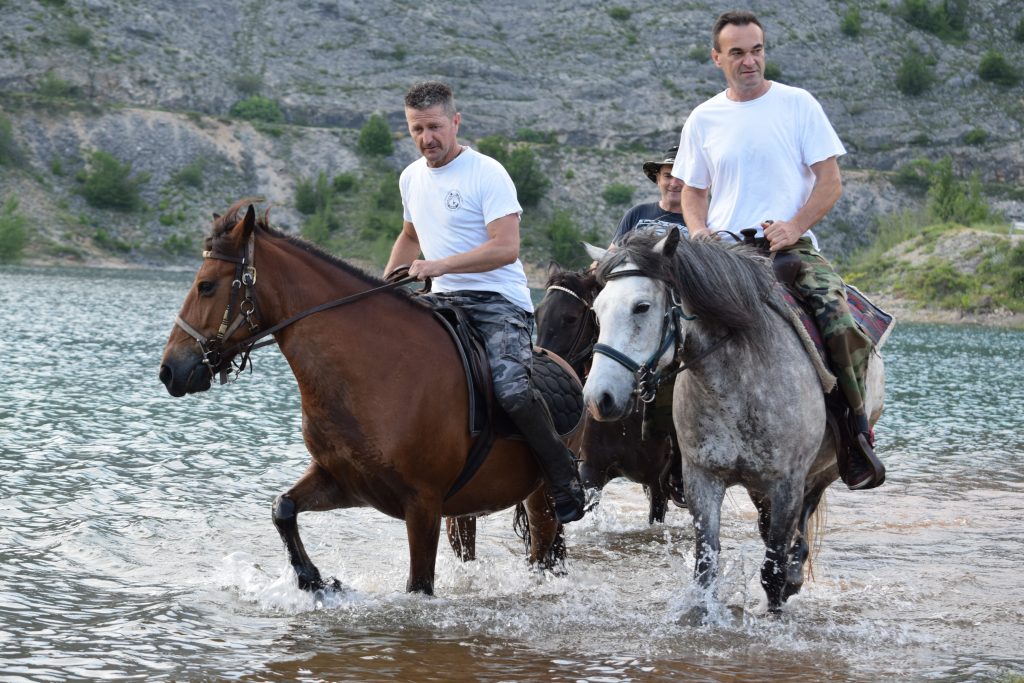
Closely associated with horse breeding and equestrian sports since way back in ancient times, Sinj also offers a newly built and superbly equipped riding hall and a great opportunity for visitors to come and ride. Safely seated on the saddle of a noble creature, at a light trot accompanied by the soothing patter of hooves, there couldn’t be a better way to explore the network of riding trails the Sinj area provides. A visit to the Sinj Hippodrome, the second largest in all of Croatia, and the impressive Alkar stud is certainly a unique experience for all.
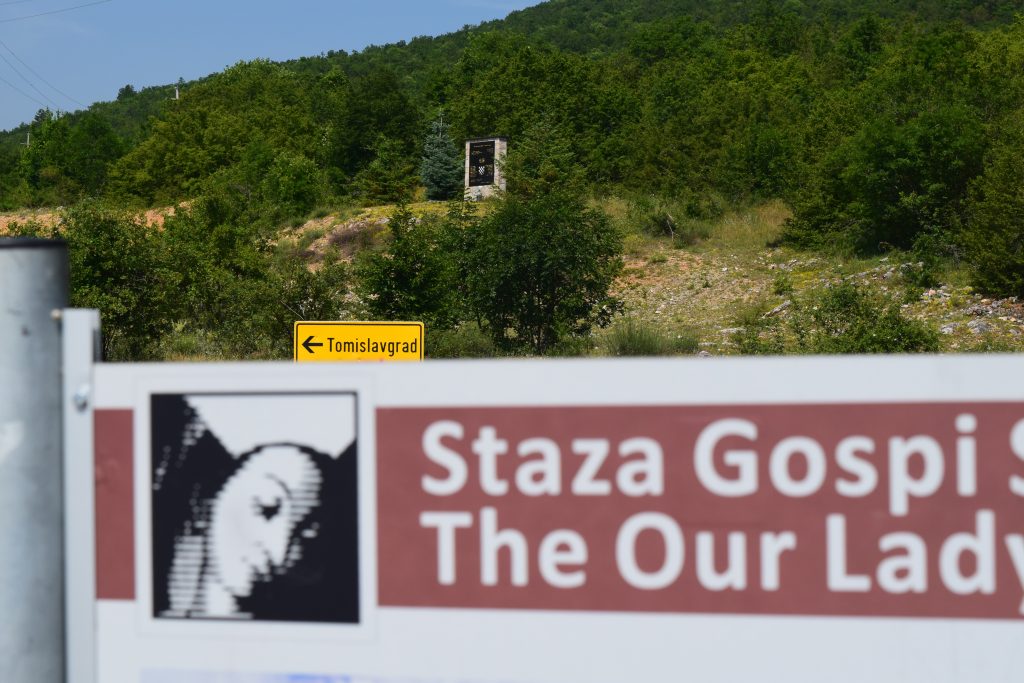
For all those who prefer to rely on themselves and discover things as they come by simply taking a walk - have no fear - whichever direction you head in, new panoramas and gorgeous picturesque corners of the area unfold before your eyes as the most precious gifts.
You will find the inspiration of a spiritual pilgrimage if you decide to walk along the well known Path of Our Lady of Sinj, known as the wonderful "Croatian Camino", as well as along the path which takes you towards Sinj's Old Town, which boasts fourteen ‘’Stations of the Cross’’ and various astonishing works by great Croatian sculptors, all in an idyllic wooded location.


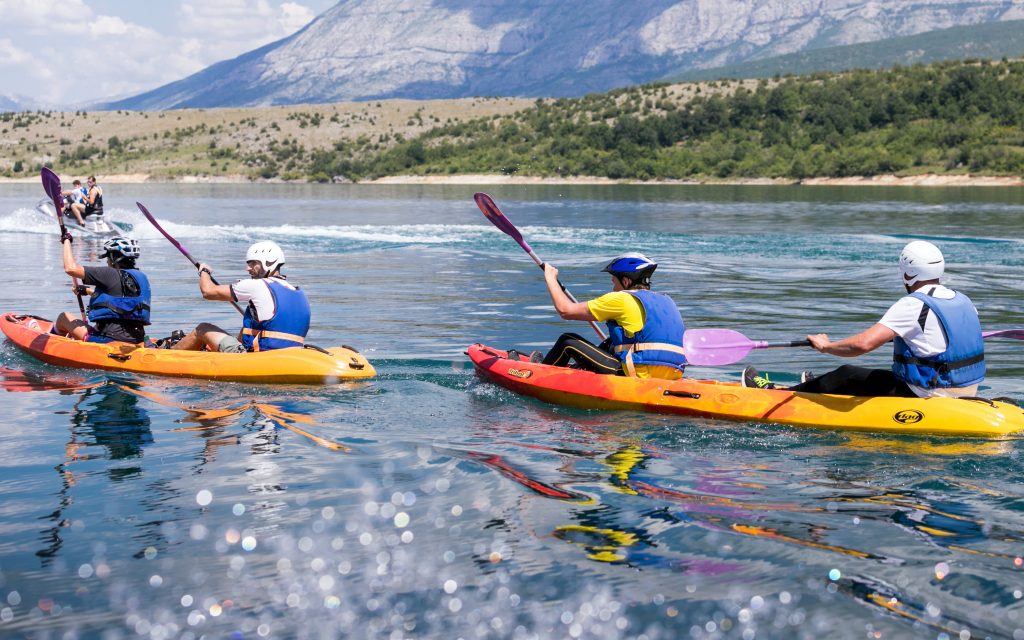
Adrenaline-seeking visitors can try their hands at canoeing through the rapids of the Cetina River, paragliding or even skydiving – Sinj even has a functional sports airport! Even certain larger cities might rightfully envy Sinj’s very well developed sports infrastructure: tennis courts, football and rugby stadiums, an athletics track, and believe it or not, a city swimming pool of Olympic dimensions which refreshes the people of Sinj and their guests during the hot summer months.
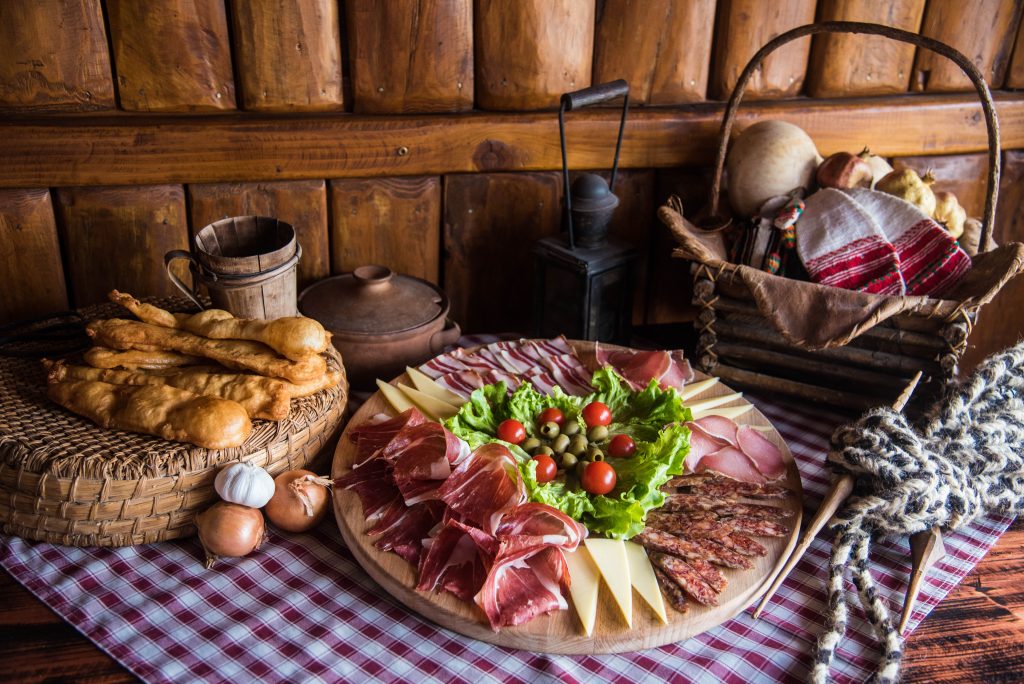
However, none of the buildings and activities would be worth what they are if it weren’t for the warm hospitality shown by Sinj’s residents and hosts - the people of Sinj are widely known as hosts who welcome people to their town with a full heart and a full table - they will open their doors to every traveller. The rich and unique gastronomy of this area is the result of centuries of contact, which hasn’t always been friendly, between East and West, the Mediterranean and the continent.

Sinj arambaši are a world-famous delicacy without which no celebration will be complete, homemade prosciutto whipped into its perfect shape and taste by the harsh bura winds, mišni cheese ( cheese made from sheep's milk which also then ages in sheepskin) accompanied by the enticing taste of fragrant herbs growing on nearby mountain pastures will overshadow all other foods... In Sinj, food is truly an art.
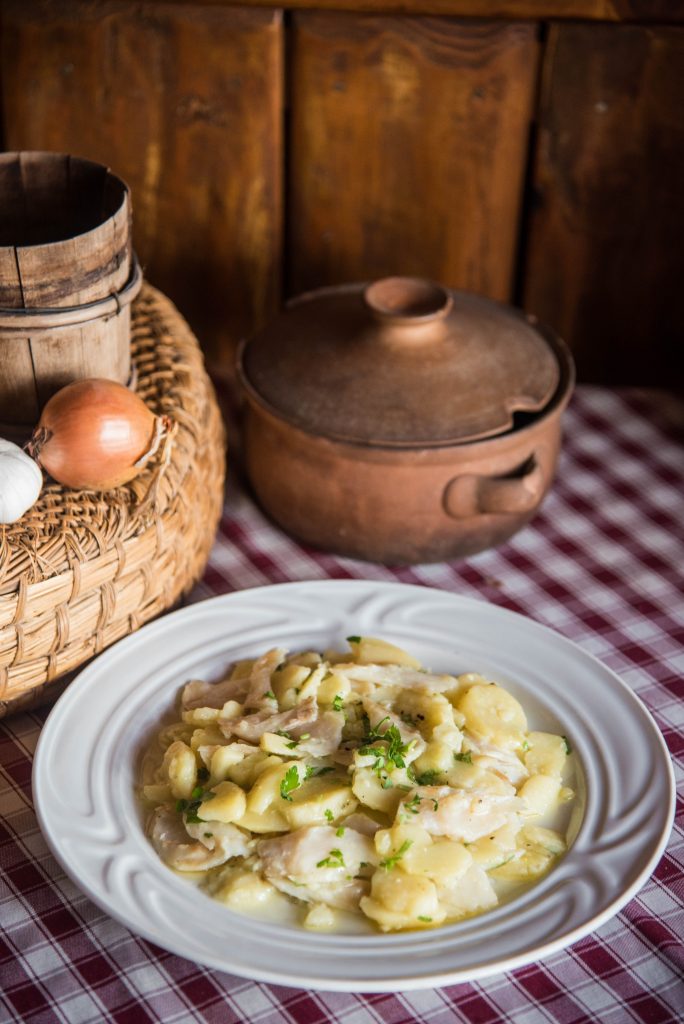
Always at the hub and crossroads of civilisations, Sinj, known as the town of knights, is situated under the remains of the Grad fortress, on which sits a small votive church built on the two hundredth anniversary of their arrival from Rama (which is now within the borders of Bosnia and Herzegovina). The fateful exodus of the people fleeing from the marauding Ottomans and their oppression forever marked the identity of this heroic town - the town of the Alka of Sinj and the Miraculous Lady of Sinj.
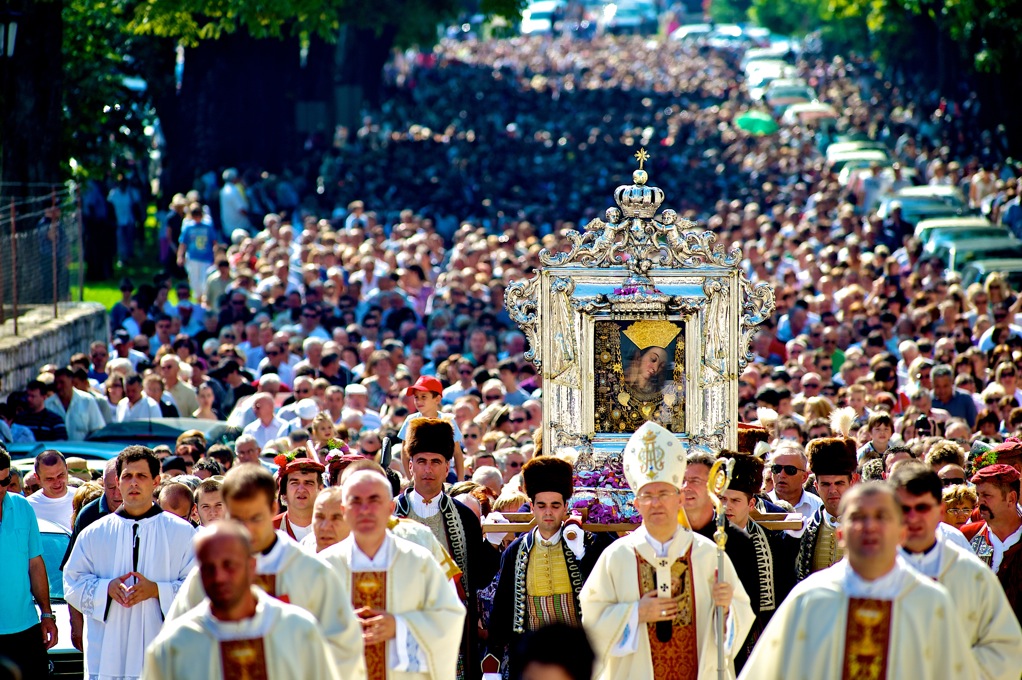
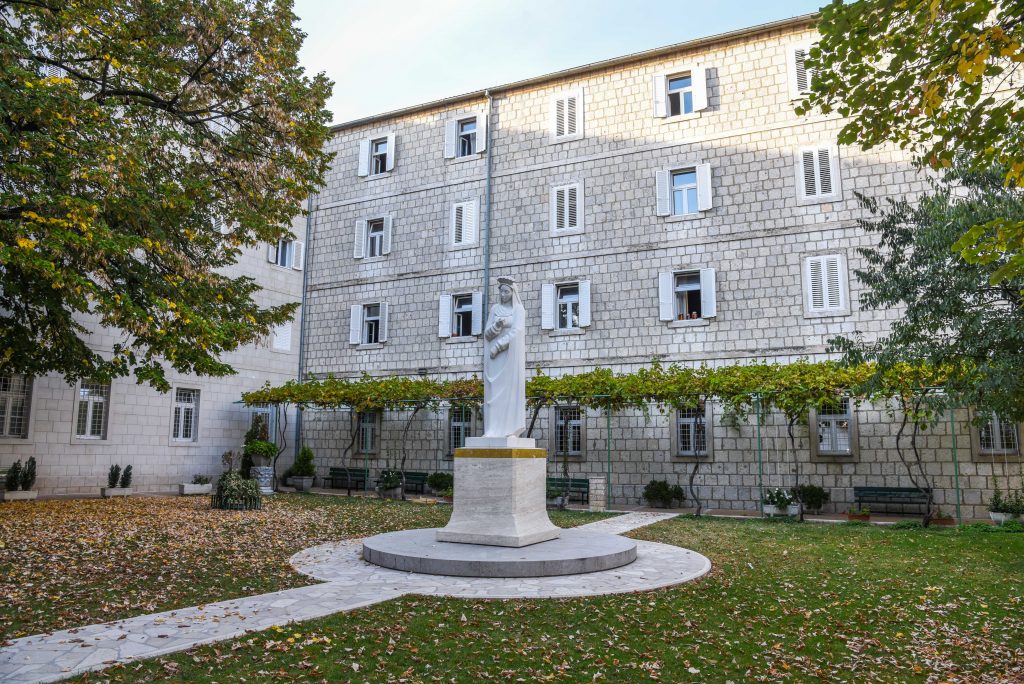
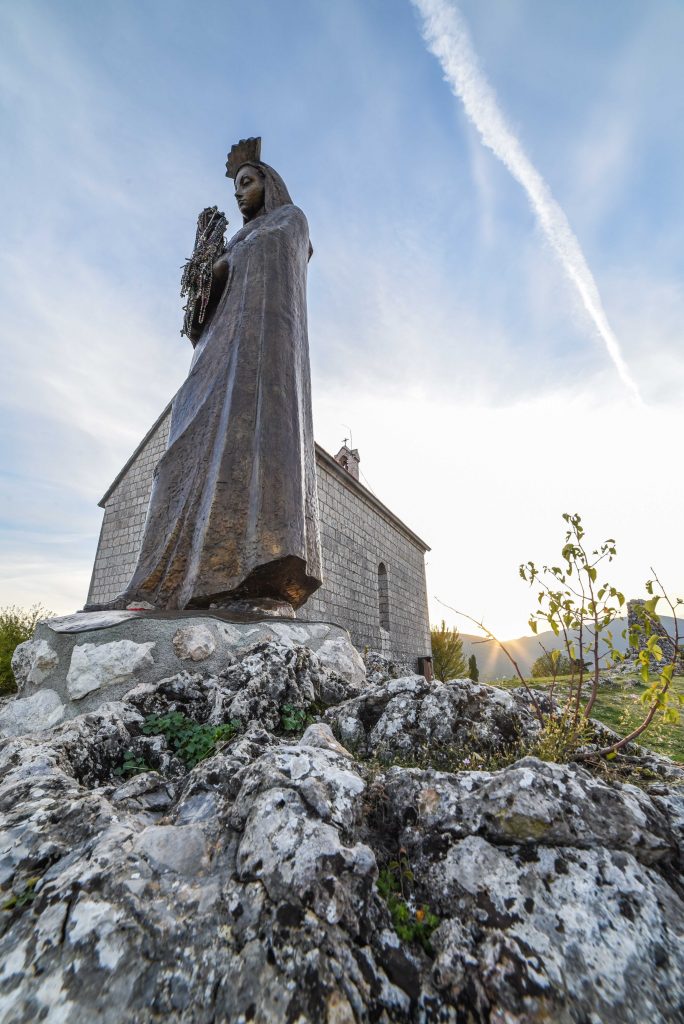
Its historic victory in 1715 gave birth to the ‘’knight's game’’, which has now entered its fourth century and is also protected by UNESCO due to its priceless value. The unbreakable bond and gratitude to the Mother of God springs from every corner, and most of all in the magnificent sanctuary of the Miraculous Lady of Sinj, the most faithful advocate of the Croats, always full of believers eager for comfort and hope. Last year, the sanctuary also hosted an important Congress of the Spiritual Heritage of Marian Shrines.

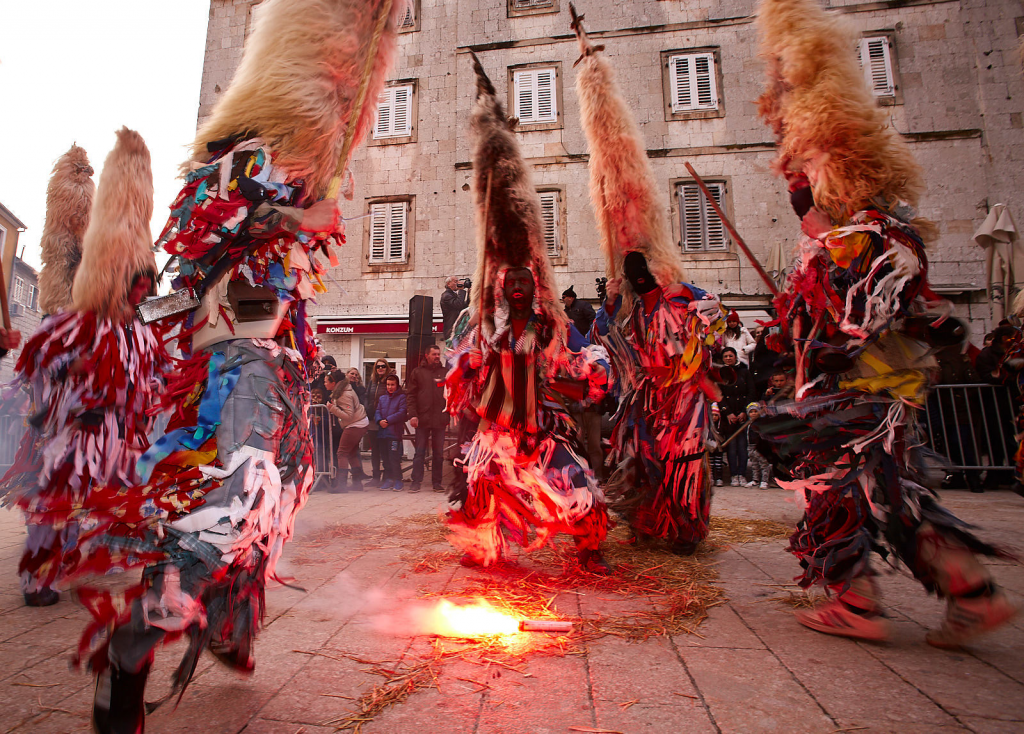
The museums of Sinj both exhibit and nurture the fruits of the area’s utterly rich cultural and historical heritage, and the galleries are popular places for interesting events, concerts and exhibitions of both local and foreign artists. The Museum of the Sinj Alka doubles up as an innovative and interactive centre that successfully combines tradition and modernity.

If you happen to find yourself in Sinj during the time of the carnival, get ready for a surprise. The traditional carnival processions of Podkamešnica villages (villages situated under the Kamešnica mountain), the famous and imposing Didi from Kamešnica will certainly impress you with his appearance and performance. He’ll also effortlessly drive away the ghosts of winter.
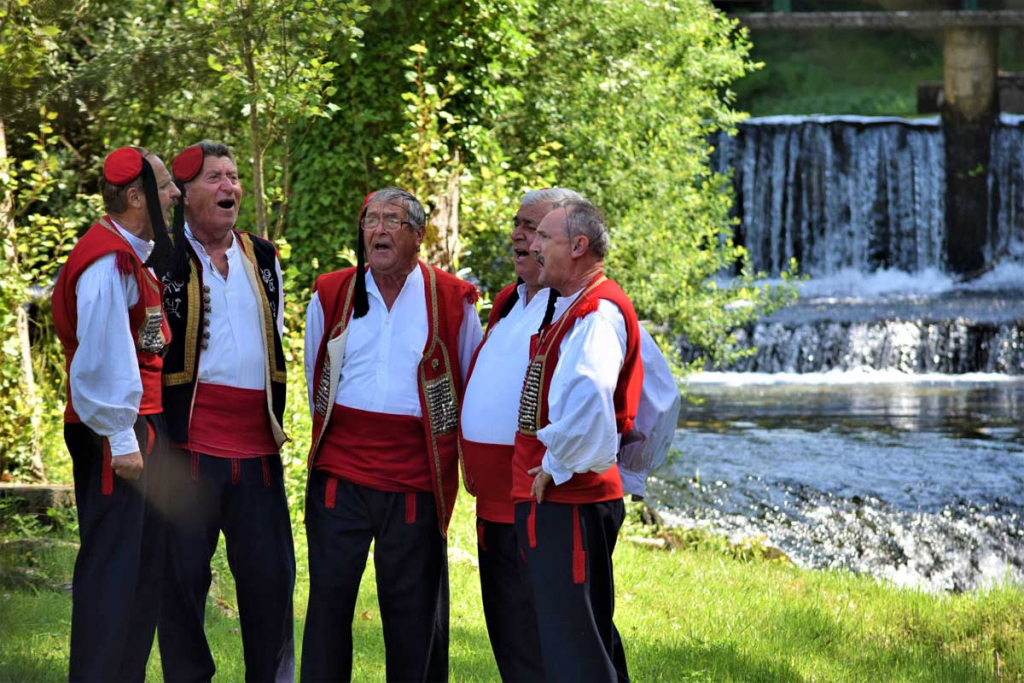
The defiance and resilience of Sinj’s local population is also reflected in what’s known as the traditional silent circle dance performed almost exclusively without music, (Croatian: nijemo kolo), the value of which was also readily recognised by UNESCO and included in the Representative List of the Intangible Cultural Heritage of Humanity back in 2011. The sounds of the old ojkavica/ojkanje and the rera are still passed down from generation to generation in the Dalmatian hinterland.
Ojkavica, which got its name from the characteristic exclamation oj, has also been on the UNESCO list of Endangered World Heritage since 2010. Rera, a vivid two-part song, is deeply rooted in the identity of the people of the Cetina region and often describes everyday occurrences, conflicts between neighbouring villages and local characters and customs. It also mocks human flaws and weaknesses, often with very specially chosen vocabulary.


Skilled local hands remain the living witnesses of all of these often ancient traditions - they weave the heritage of their ancestors into every stone of the dry walls of the Dalmatian hinterland, and with every stroke of the oar against the Cetina’s crystalline waters. The art of boat building in Otok near Sinj is a protected intangible asset of the Ministry of Culture of the Republic of Croatia. Today, Cetina boat races and events such as the Žabarijada (a frog jumping competition), the cleaning of the Cetina river bed and traditional fishing from a locally constructed Cetina boat are all held.
Another recognisable Croatian (and Dalmatian) art also finds itself UNESCO's Representative List of the Intangible Heritage of Humanity - the art of drywall construction - this is a monument more permanent than brass. Hardworking calloused hands took away the karst stone by stone and created wonderful, apparently eternal structures, passing on valuable knowledge to future generations.
That's how Sinj has become very well known as a real mosaic of perfectly arranged stones - rich gastronomy, remarkable natural beauty, warm-hearted local people, and plenty of things to do - all of which successfully creates a true masterpiece of the Dalmatian hinterland.
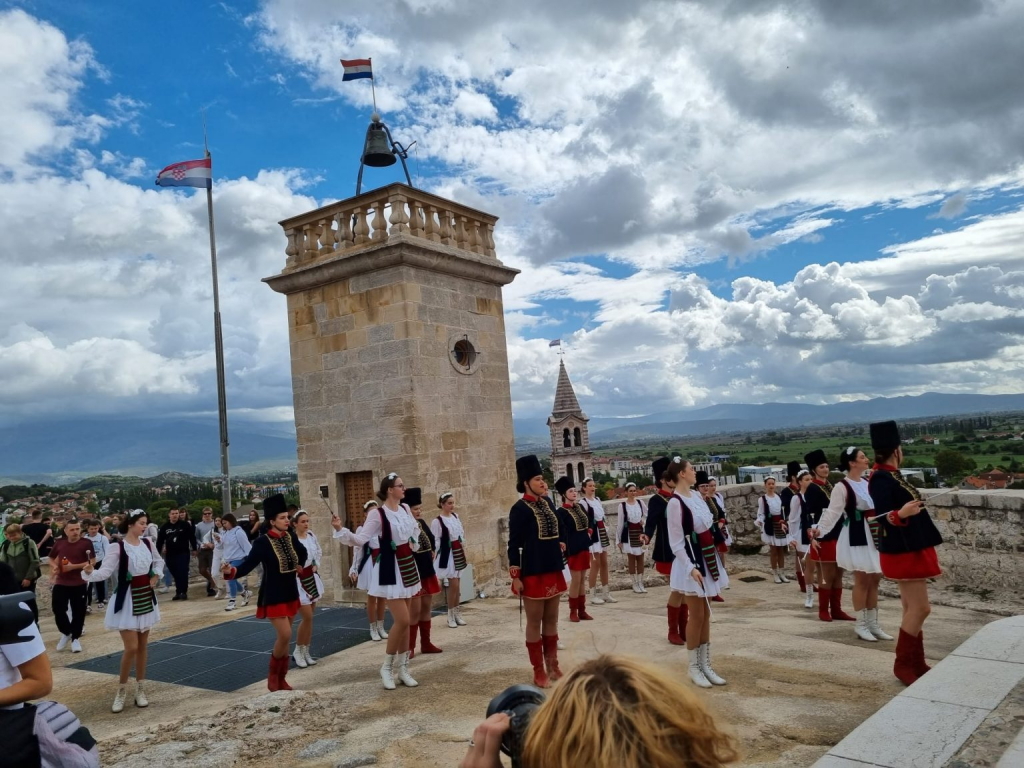
More: visitsinj.hr
Photo: Sinj tourist board
The Kolan Municipality - A tasty world full of scents
In the very centre of the strange, moon-like island of Pag lies a place called Kolan - the
cradle of Pag’s famous cheese and lamb, which is also a perfect place for a versatile and
more active holiday.
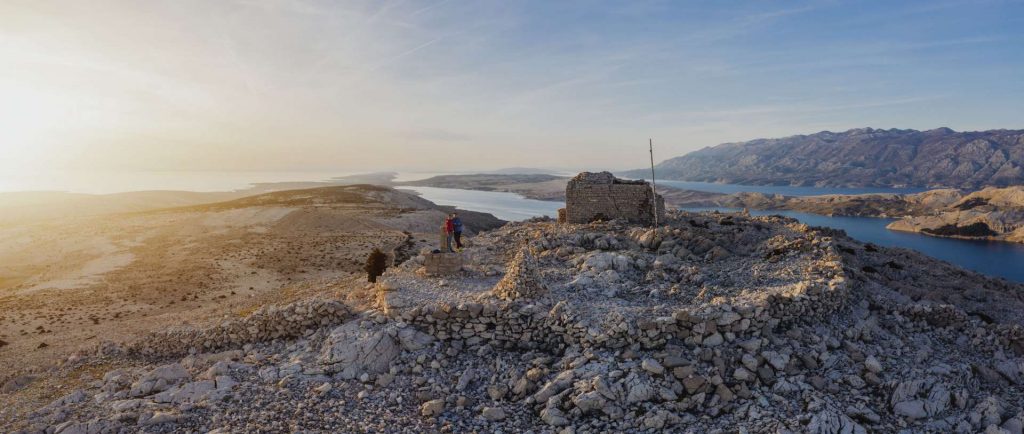
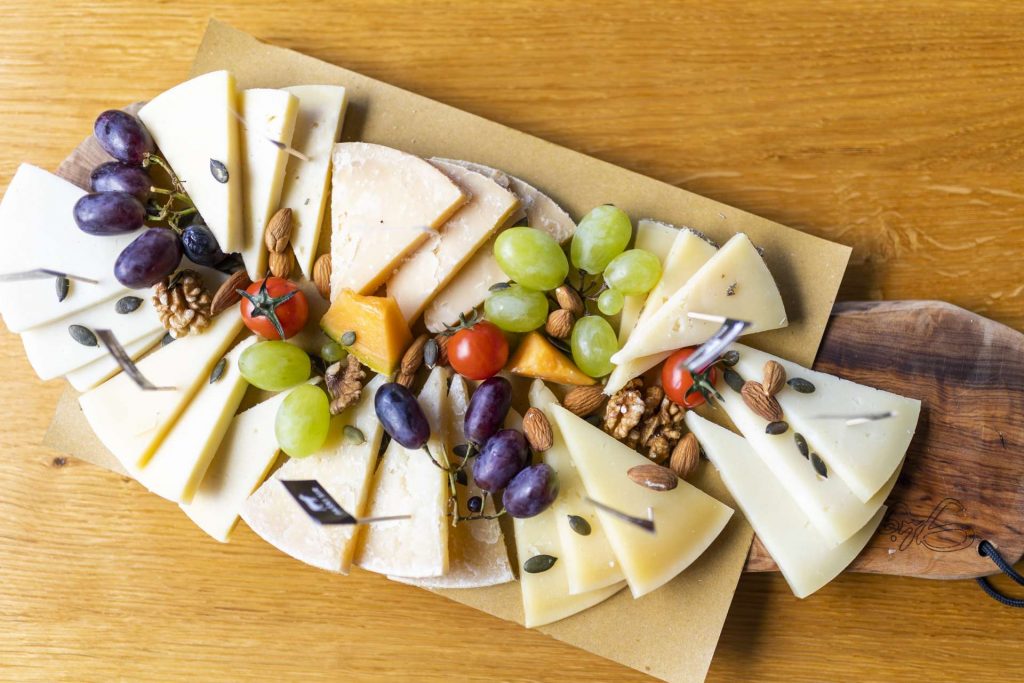
Maybe just after reading our text, the idyllic Dalmatian towns of Kolan, Mandre and Kolanjski Gajac will become your new destinations with an authentic Mediterranean touch.
Kilometres of sandy and pebbled beaches being lapped by the calm waves of an
exceptionally clean sea will leave few people unimpressed, and you simply can't go wrong
with your choice - whether you choose Sveti Duh (Holy Spirit), Mandre, Rogoza, Girenica,
Gajac, Katarelac or Čista, undisturbed pleasure in the joys of the sea is absolutely
guaranteed.
These destinations will also delight kayak lovers - from Mandre, Girenica bay
and the Rogoza or Gajica beaches, kayakers can row out towards the open sea, and for a
more "quiet" rowing adventure, they might choose one of the beaches like Sveti Duh and
Čista.
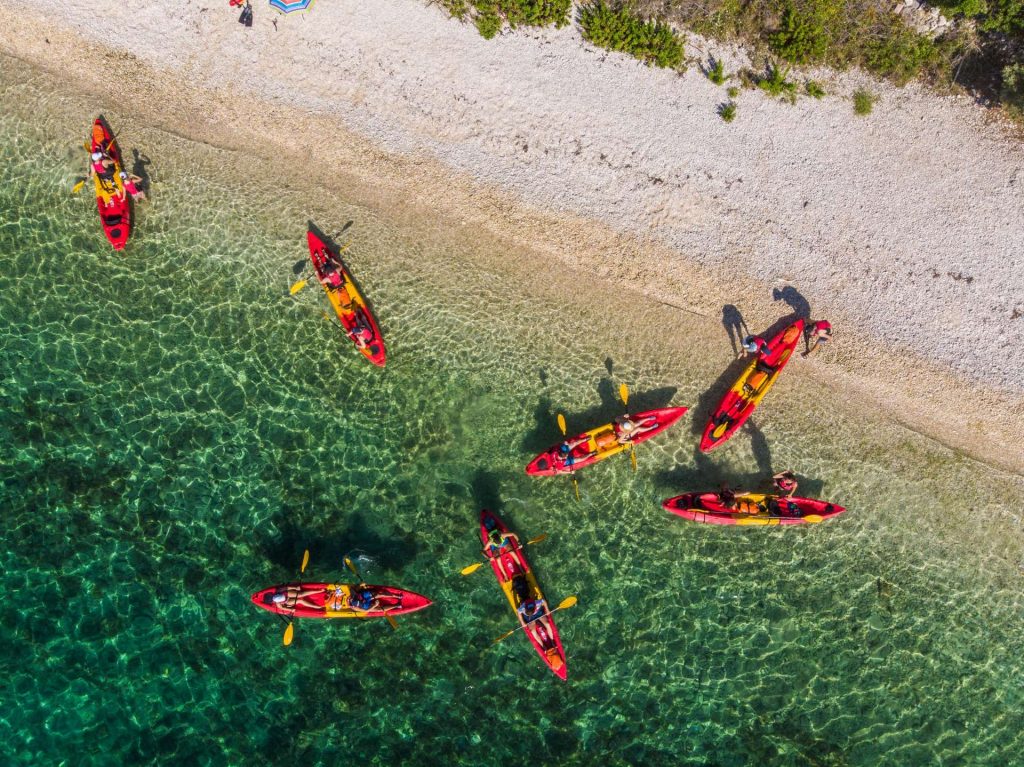
There’s fun on offer for those who are always seeking adrenaline rushes - Due to the large
number of trails, the location of Kolanjsko polje is ideal for all lovers of off-road cycling. One
of the trails within the Pag Outdoor project - Put Girenice (Girenica Way), which will see
cyclists cycle along a macadam road to the Kolanjsko blato ornithological reserve - Rogoza,
starts there, and fans of these sorts of trails might like the 7.4 kilometre-long trail of
Kolanjsko polje, which is ideal for family hikes and a little bit of socialising.
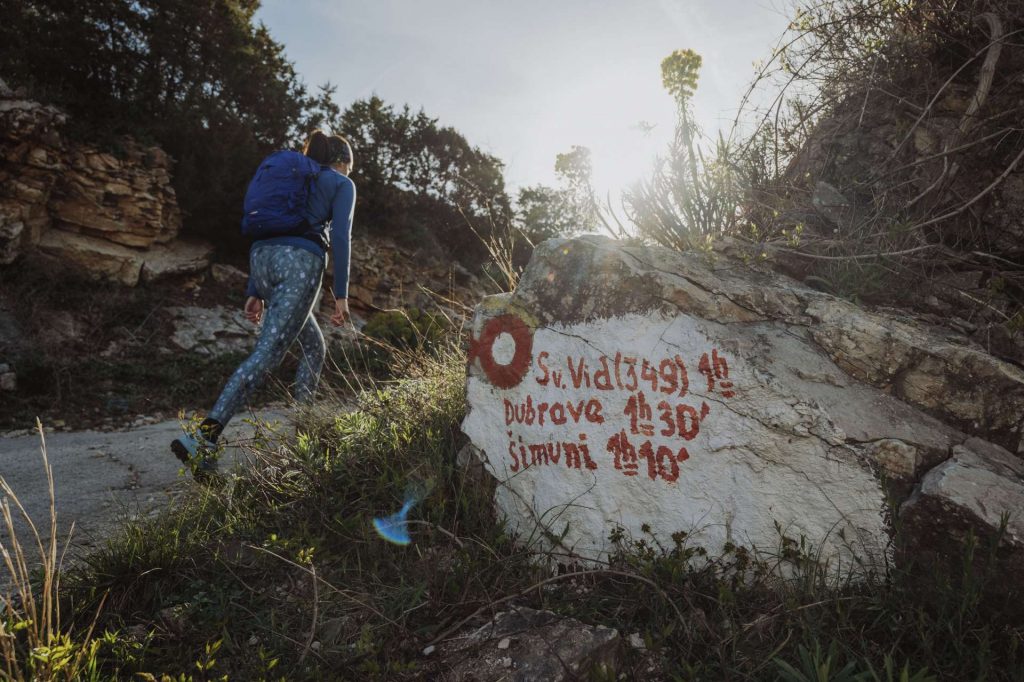
For the most daring lovers of active holidays, we recommend climbing to the highest peak of the island of Pag - Sv. Vid (348 metres), which offers an unforgettable view of numerous neighbouring islands and the greater part of the nearby Velebit National Park.
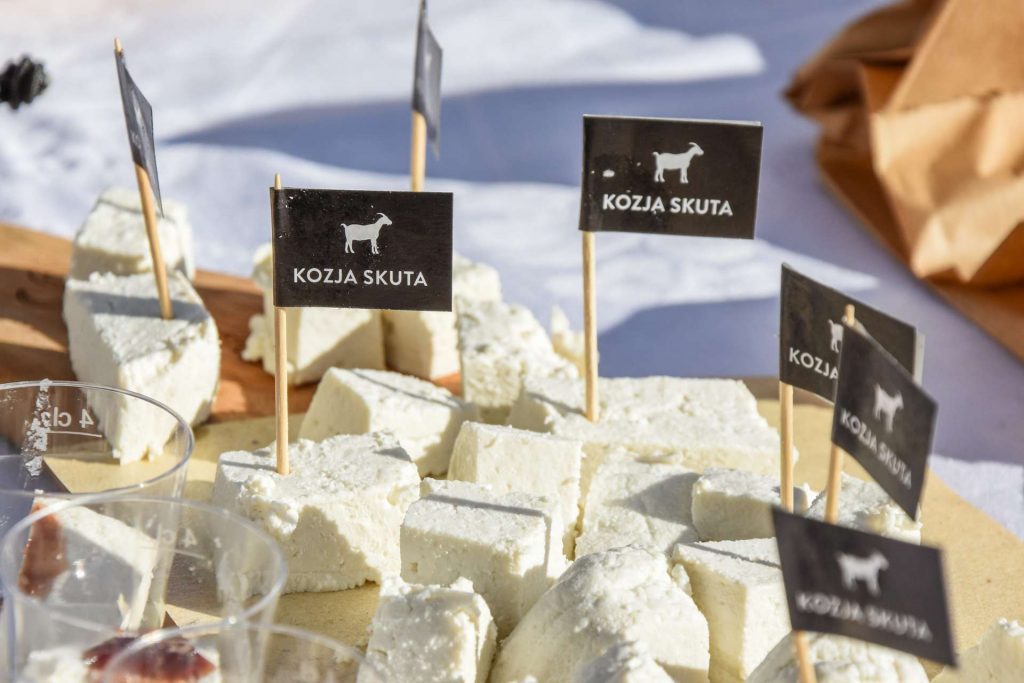
Take a trip to the gastronomic centre of the island of Pag - The special gastronomic offer is a
legitimate reason to visit Kolan all by itself - both because of the widely known Pag cheese
to which this is home, and because of the excellent restaurants and taverns there!

Don't miss those with the winners of the Pag autochthonous cuisine label on their menus, such as the Bonac and Figurica taverns and the Prtorić OPG (family farm), or the baked Pag lamb and sheep's curd desserts which almost made our heads spin.
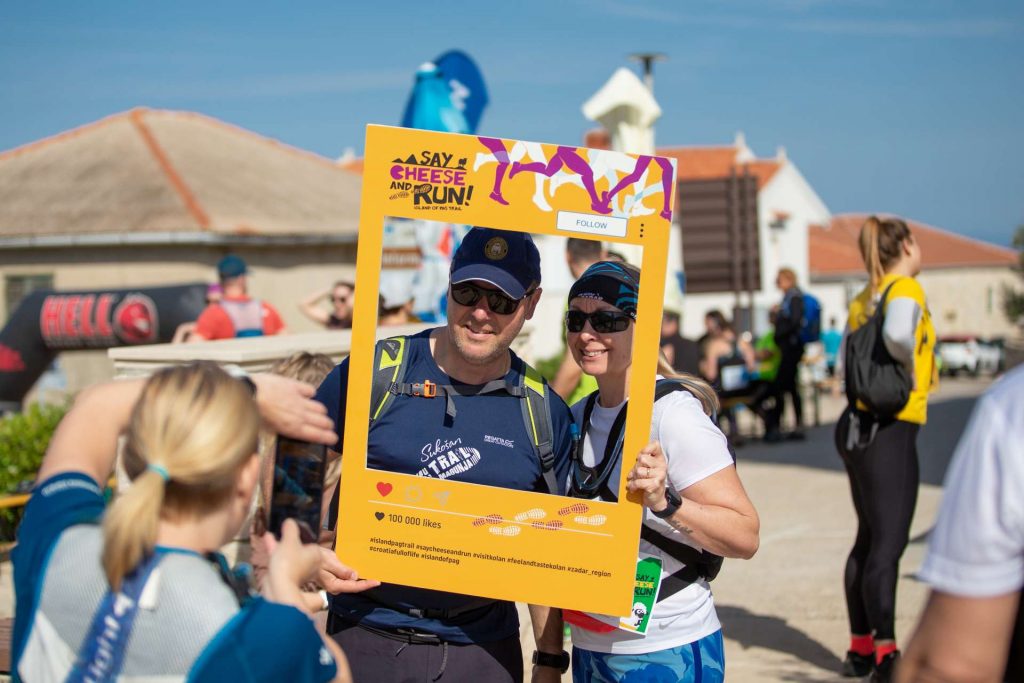
If you are a die-hard gastronomad, visit Kolan, which celebrates Pag’s cheese and its kindred spirits - olive oil and wine.
More: tzkolan-mandre.com
GASTRONOMY OF SPLIT-DALMATIA COUNTY – AN INTERSECTION OF CULINARY
GASTRONOMY OF SPLIT-DALMATIA COUNTY – AN INTERSECTION OF CULINARY CULTURES FROM ALL OVER THE WORLD!
WHAT WOULD YOU SAY about a cuisine that combines sweet and sour, Greek and Roman, Byzantine and Venetian, all linked by a truly special ingredient – a quantum of stubborn, originally Dalmatian spite? Dalmatian cuisine will spoil your palates with homemade prosciutto and cheese, traditional fish stew (brodet) and thick fish soups, risottos and gnocchi seasoned with tasty dips, sea food stews; all rounded up with homemade olive oil, Mediterranean aromatic herbs and matched with wide range of exquisite homemade wines. If you want to give your palates a true adventure, it’s high time to taste these sensual dishes – true gastronomic ambassadors of Dalmatian cuisine!

A QUEEN CALLED PAŠTICADA. A true example of sweet-sour dish (see how Dalmatian cuisine is always a blend of extremes of some sort, unmatched by anyone?) is luxurious pašticada, gastro heritage of Venetia ad Byzantium, made even today for special occasions (due to its complex preparation) of beef aitchbone in wine, prosecco, vinegar, spices and vegetables. It is often accompanied by homemade gnocchi. Pašticada is so characteristic for this region that almost every household has its own way of preparing it; and it shares the throne with exquisite fish or meat dishes made under the baking lid! Namely, if you haven’t tried veal, lamb or octopus under the iron lid, which enables food to be cooked and roasted at the same time, from a gastronomic point of view, you haven’t even been to Dalmatia, so do not miss it! If you visit the islands, let the magic of small family restaurants overwhelms you.

There, apart form aforementioned Dalmatian classics, you can indulge in carefully prepared specialties like mutton baked on a juniper spear, which stimulates with resin wood aroma, or for example – crunchy vitalac - ancient dish made of lamb offal served in the “lamb capital”, the island of Brač, which is also a gastro connection to Greeks. Of course, if you prefer somewhat more modern gastronomic interpretations, there is a wide choice of modern gourmet oases – make yourself infatuated with octopus stew or burgers, monkfish medallions, cuttlefish with broad beans, shrimps carpaccio with olive dust and fig pearls, or an entire pot of shells, shrimps and pasta!

WINES WITH CHARACTER. True gastronomads and wine enthusiasts could draw you a map of Split-Dalmatia County in a second – according to areas where the best autochthonous wines are made! It’s a common knowledge for all who ever tried Kaštela’s crljenak – the darkest of all Dalmatia wines, or bogdanuša and plavac from Hvar and vugava from Vis - that in an elegant glass of wine one can discover a whole new world! With its classy barrique touch and mild tastes of blackberry, blueberry and cherry crljenak will most certainly comply with those in favor of fruity, bold wines. Although it was tied to Italian primitivo and Californian zinfandel, it has nothing of their sweetness and softness, it is a true - wine with a character!

Even Vienna Court could not resist Hvar’s bogdanuša, which was served only for holidays due to its elegance; while Vis’ vugava overwhelms with discrete aromas of peach, almond and orange! If you prefer red wines, enjoy in full, rounded, delicate woody taste of Hvar’s plavac mali, captivating like a nicely dressed girl walking along Hvar’s waterfront!

SOMETHING SWEET FOR THE END. What kind of a meal would it be without a good, tasty dessert? Beautiful rožata dates back to Venetian times, and it was considered a pride of Dalmatian desserts! It is cooked in a caramel coat, while a magic addition to a simple recipe that contains milk, eggs, vanilla and sugar is a scented rose liqueur! Split Cake will enchant you with rhapsodies of figs, almonds, walnuts, dates, raisins and rum, and eager Dalmatian housewives discovered that the dough and cream are made of even 10 eggs!

Simple and delicious paradižet is made throughout Dalmatia, just as omnipresent fritule, kroštule and doughnuts, most commonly served in Dalmatian hinterland. Islands have their own trumps as well, just look at the list of Croatian intangible heritage goods and you will find there Dol’s hrapošćuša cake resembling the very Brač’s karst and famous Starigrad’s paprenjak! Combine them with a few drops of tempting lavender or carob liqueurs and you have finalized one great (and very tasty!) Dalmatian adventure!

Foto: dalmatia.hr
Beach bar and restaurant Mina - An explosion of tastes and pleasure in the Jelsa way!
As soon as we cast our eyes on the name of this sophisticated gastro point, we noticed that Mina was bursting full of charm. If, like us, you are a gastronomist who sticks firmly to their guns when it comes to their palate, this is exactly the feeling that will overwhelm you when visiting this gorgeous in beautiful Jelsa!
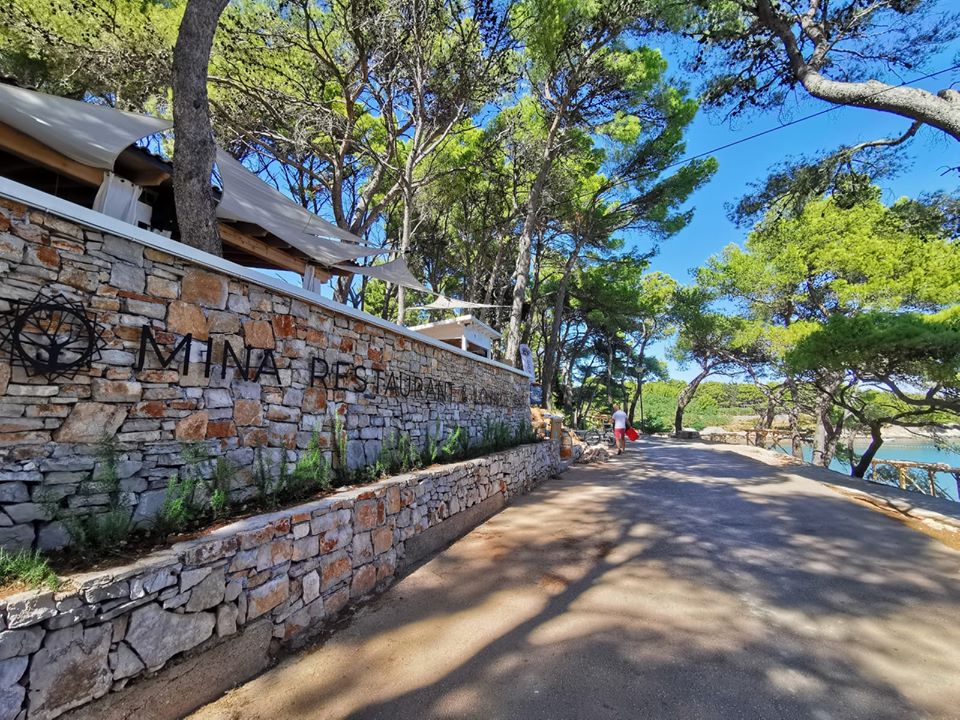
The visual identity of Mina itself just screams relaxation and enjoyment - the spacious interior enriched with natural materials such as stone and wood, and fabrics in soft beige shades, is carefully designed to blend this attractive lounge bar as unobtrusively as possible with an environment that is, in one word - beautiful!
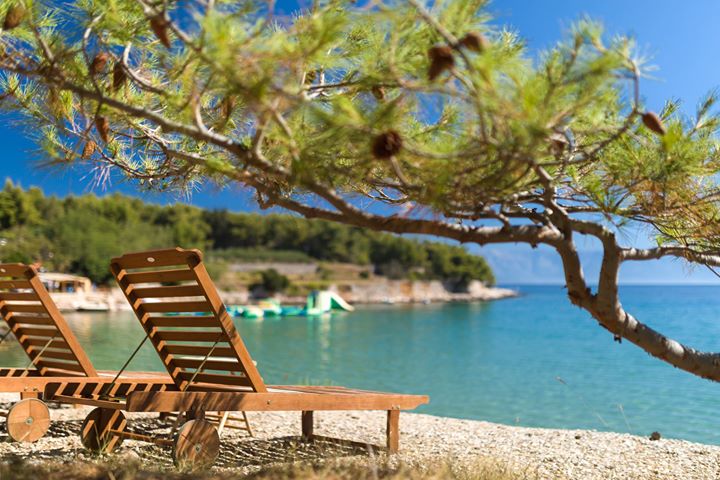
And how else would it even be possible to begin to describe the turquoise blue bay surrounded by fragrant pine forests with a view of the Brač channel and the Makarska Riviera?
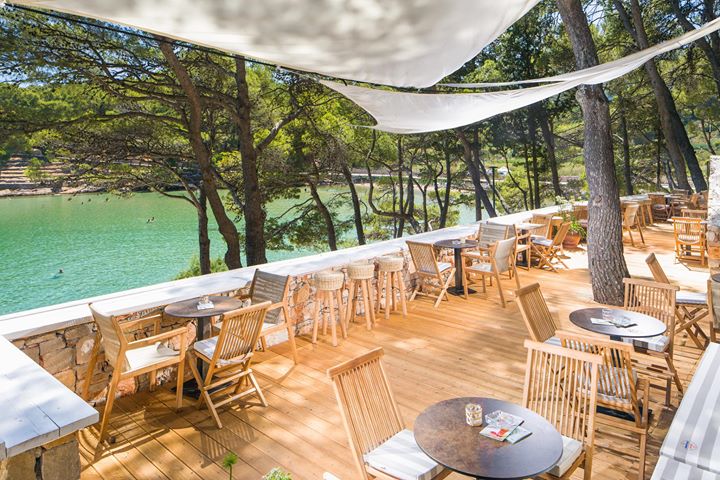
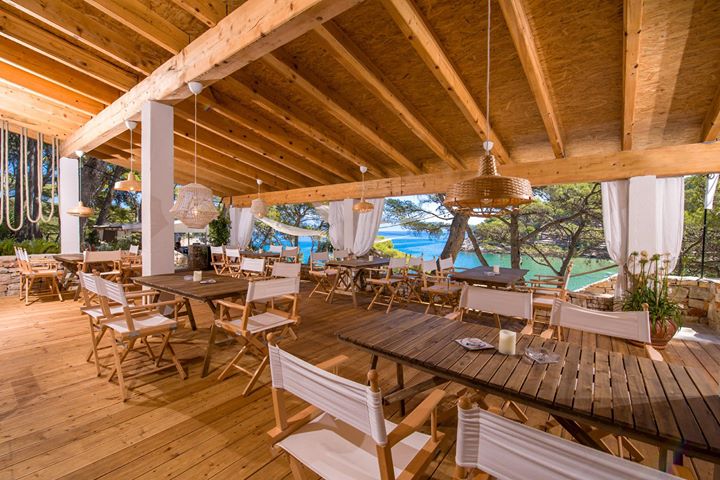
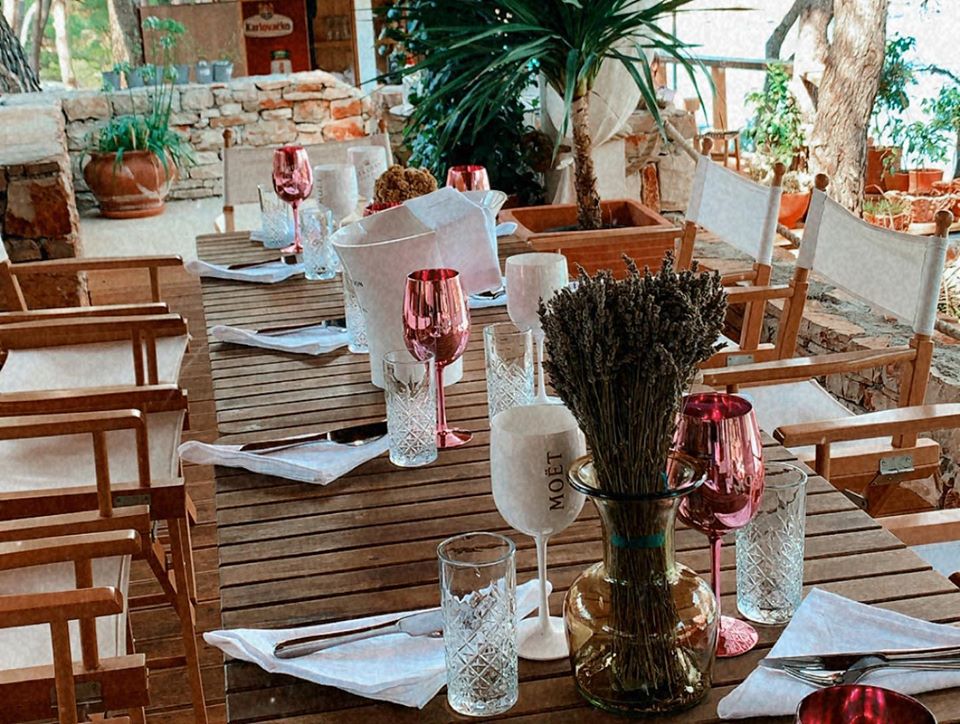
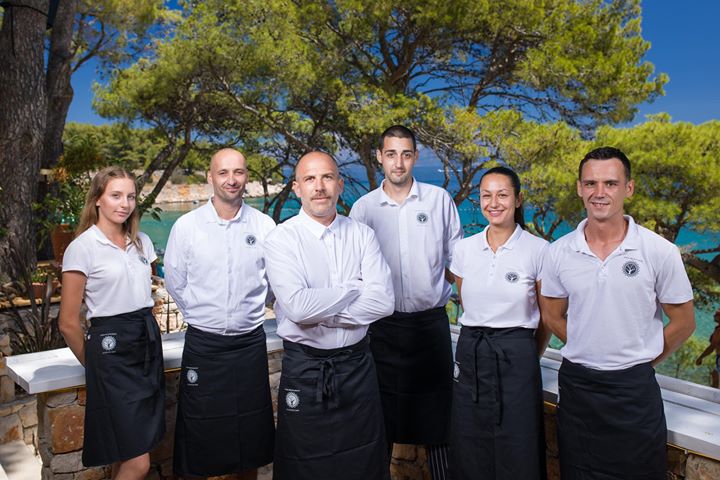
The restaurant is located just above the beach which bears the very same name, which is otherwise the most popular beach in all of Jelsa, located a mere few hundred metres away from the centre. There is also an Aqua Park located nearby.
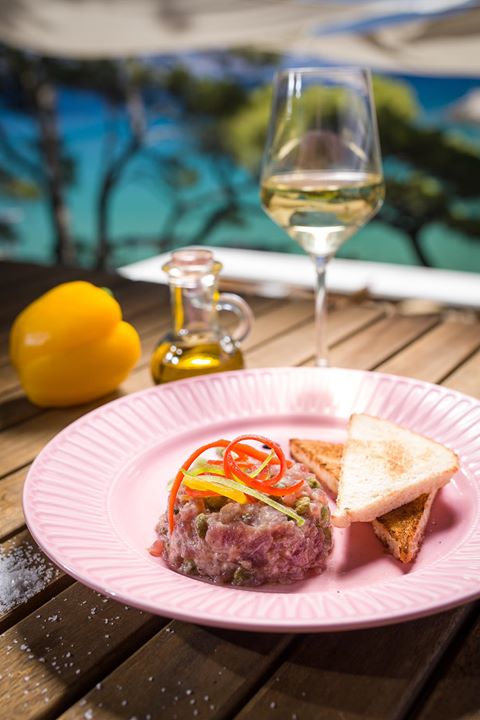
An explosion of taste is the most appropriate expression for what awaits you there, pinned on an alluring gastro map. Whether you want grilled fresh fish spiced with homemade olive oil and Mediterranean aromatic herbs, delicious meat specialties, or some more exotic gastronomic sensations like spring rolls or wok vegetables, here you simply have - everything you might want, so much so that it’s difficult to imagine that Mina might not have something covered.
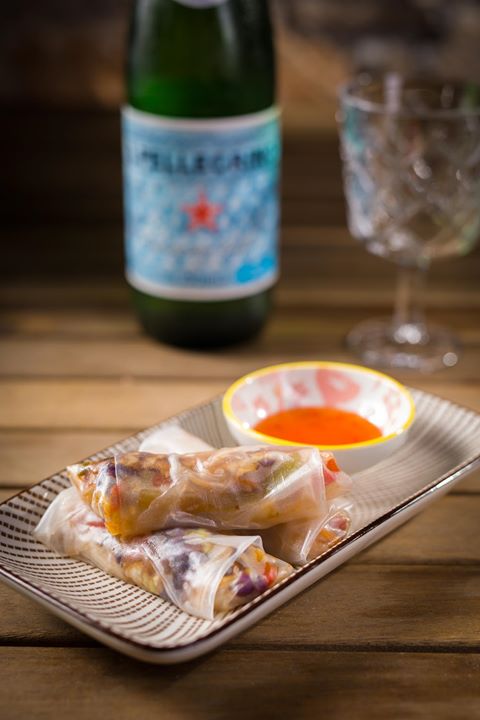
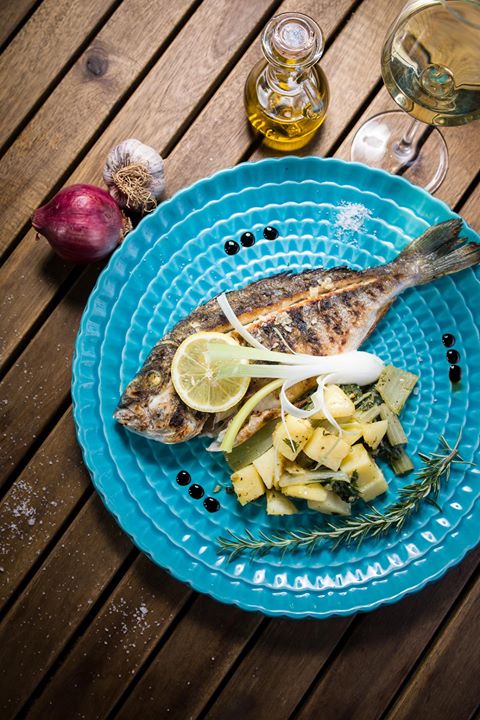
However, if we had to choose, we would recommend grilled gilthead sea bream, Adriatic octopus salad, fresh Adriatic shrimp, mussels and saltwater clams when it comes to the seafood delicacies, and delicious lamb for the avid meat lovers!
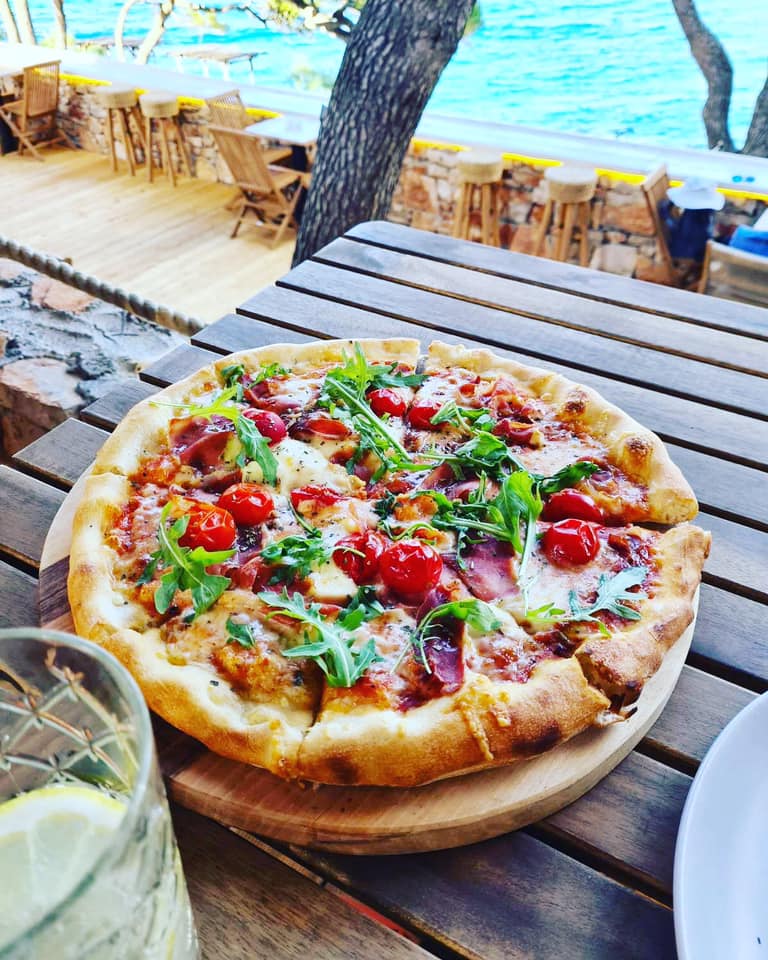
Even a cursory glance at the typically struct Tripadvisor revealed to us that guests, among other things, enjoyed the best pizzas they’d ever eaten, so if you want to go on a gastronomic journey to Italy, try out this favourite dish done in Jelsa’s interpretation of it.
For picky and curious palates, we also recommend the divine spaghetti aglio e olio, which enjoys an almost cult status in its homeland, and the friendly staff who know that food and wine go straight to the soul, will help you pair each of these wonderful dishes with a rich wine list and adequate drinks.
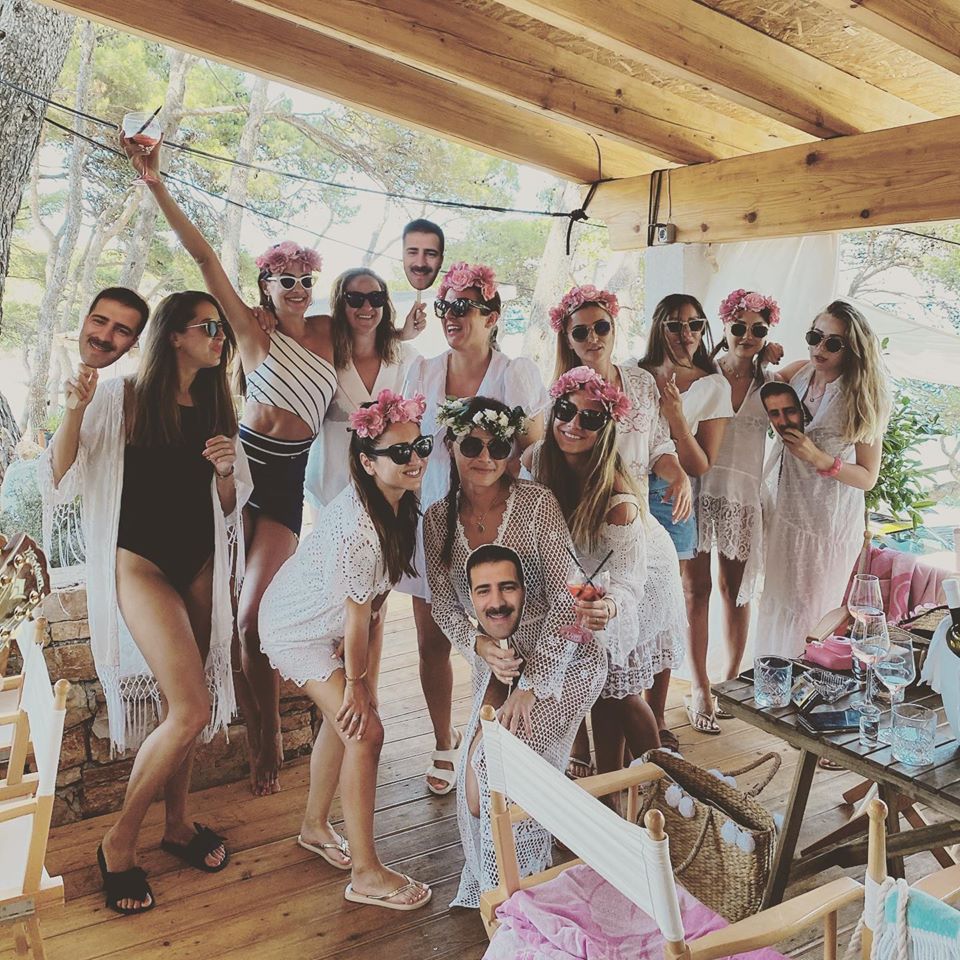
Don’t forget the cocktails! A delicious rhapsody of dishes is accompanied by an equally attractive drink menu. Is there anything better than sunbathing on comfortable loungers while relaxing with some of the masterfully prepared cocktails on offer?
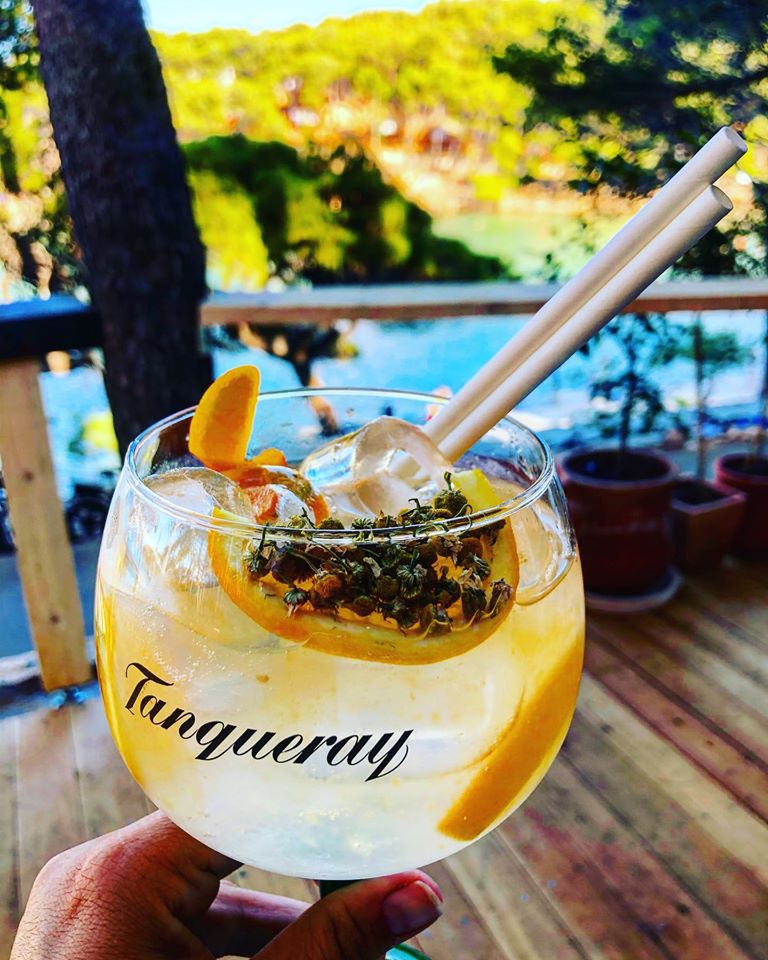
We believe that you will want to immortalise this moment which is of true ‘’Bond-style’’ aesthetics with an beautiful photo posted on social media, and for a complete experience, we recommend ordering a Martini done in the way the world’s most famous secret agent likes it best - shaken, not stirred, op.a. ).
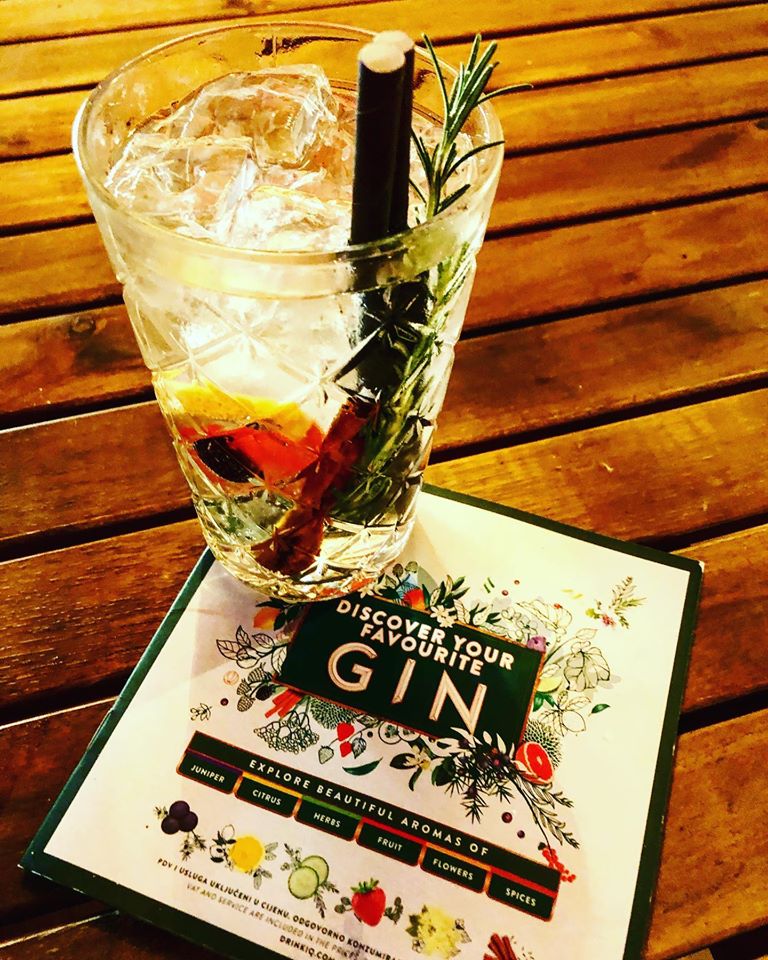
Whether or not you decide to taste other intoxicating delicacies - from gin with citrus, floral and fruity aromas, to Mai Tai and Long Island Ice Tea for the slightly braver among you, or maybe a Cosmopolitan - the favouurite drink of the famous columnist from the series "Sex and the City", Carrie Bradshaw, you can be sure of one thing - the explosion of taste and pleasure hidden behind the name Mina, will shake up everything you knew about food and drink so far - and it will do so in the best possible way!
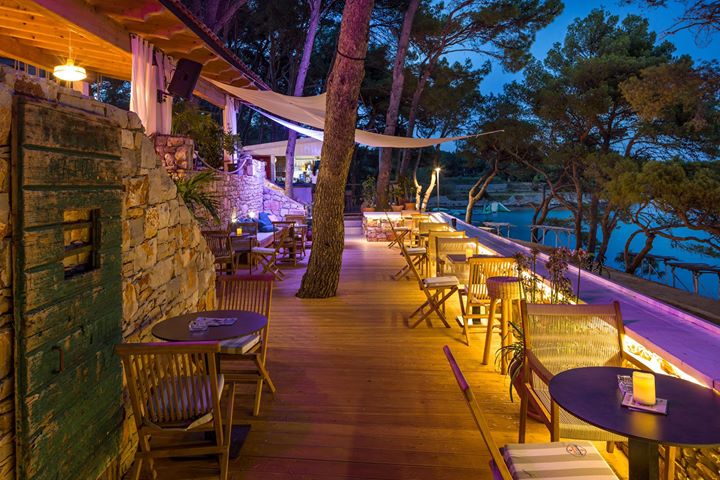
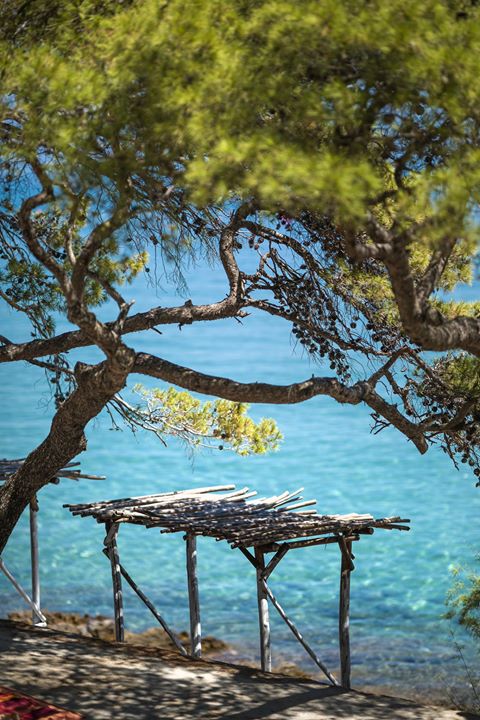
More:

RESTAURANT & LOUNGE BAR MINA BEACH JELSA
Jelsa 892A, 21465 Jelsa
www.restaurant-mina.com
Athena extra virgin olive oil - An enchanting tasty adventure on the island of Hvar!
Athena is the highest quality olive of organic origin, one that will emphasise and round off the taste of absolutely everything it touches, and with it, even a piece of bread and cheese will become an intoxicating and enchanting tasty adventure.

This isn’t just any old, ordinary Dalmatian oil. History, tradition and centuries of extensive knowledge of island farmers are woven into OPG Plenković’s product. This liquid yellow gold comes from the island of Hvar bearing the strong name of Athena. This premium extra virgin olive oil was made from ripe olives from the Stari Grad plain.

. Its name alone alludes to precisely that, to the goddess Athena, one of the main figures of Greek mythology who gave the olive to the people. And the Greeks ennobled it, they made oil from it, which they kept in ceramic vessels - amphorae.
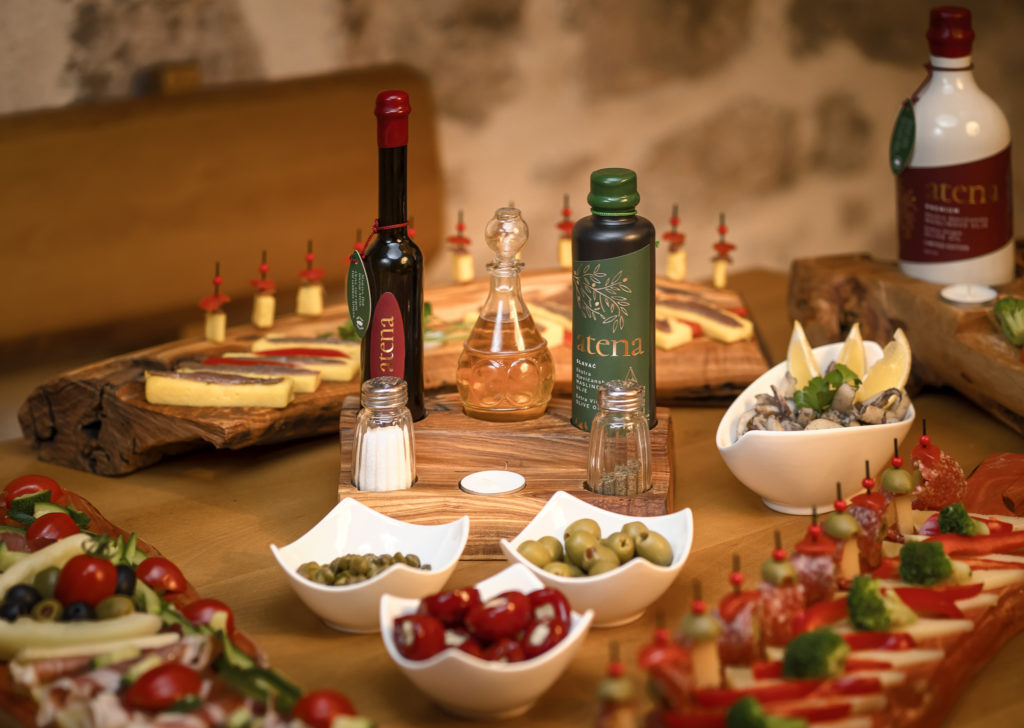
And so it should be done today. The exceptional Athena olive oil comes in ceramic bottles that preserve all of its nutritional properties. Athena is the food and cultural history of the island of Hvar, it is the essence of the coming together of both tradition and modern technology.
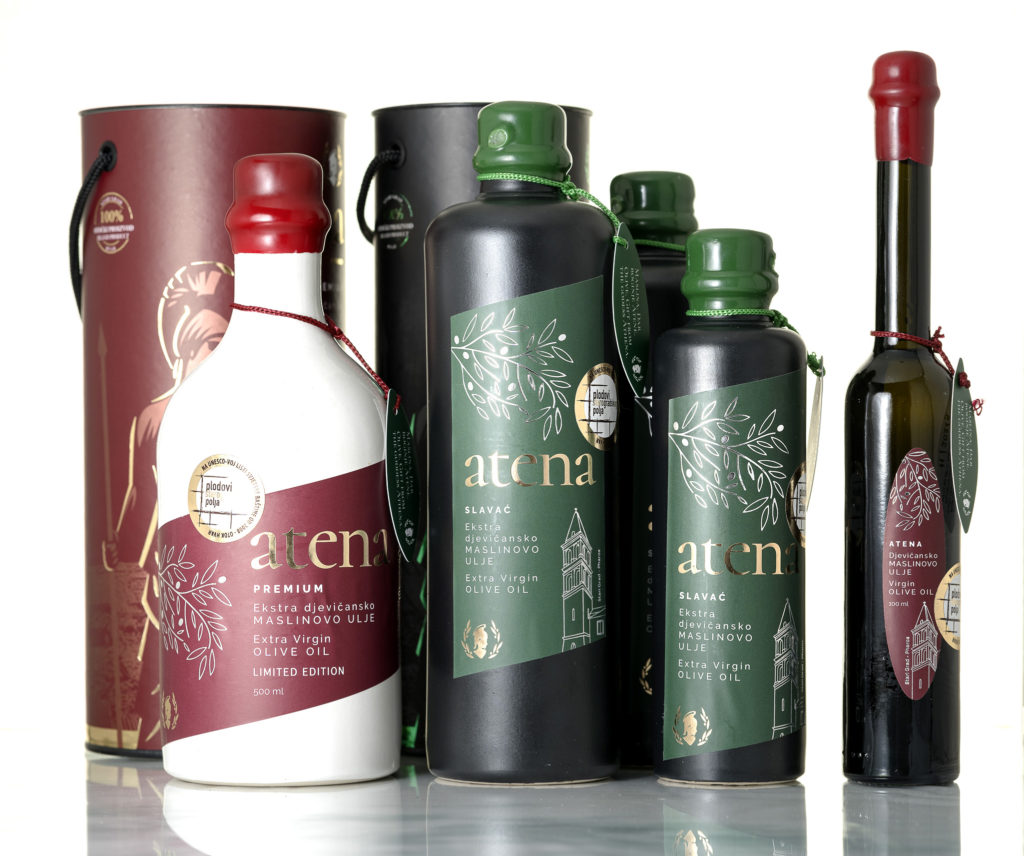
The packaging is customised and very pleasing to the eye, and it also comes in a limited series.
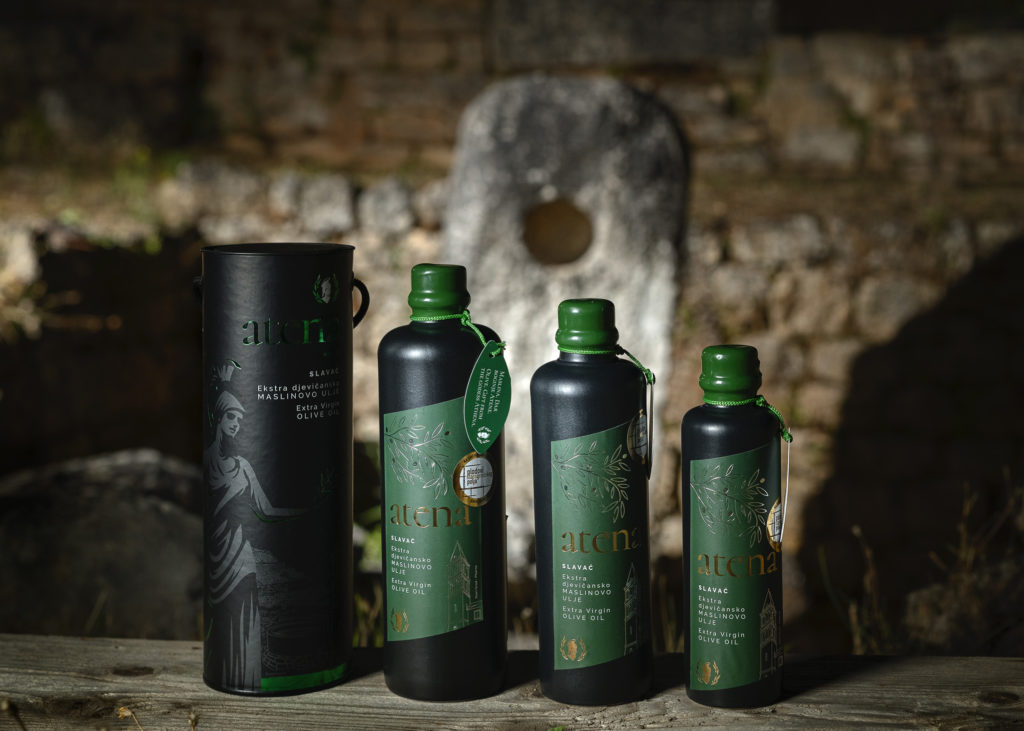
This year, they have about 500 white bottles at the Plenković family farm, with an additional limited series in black. Athena Premium carries a medium to intensely pronounced fruitiness in the scent of olive fruit and green grass, apple and tomato, with a dominant intense almond flavour, rounded off with notes of both artichoke and rocket.
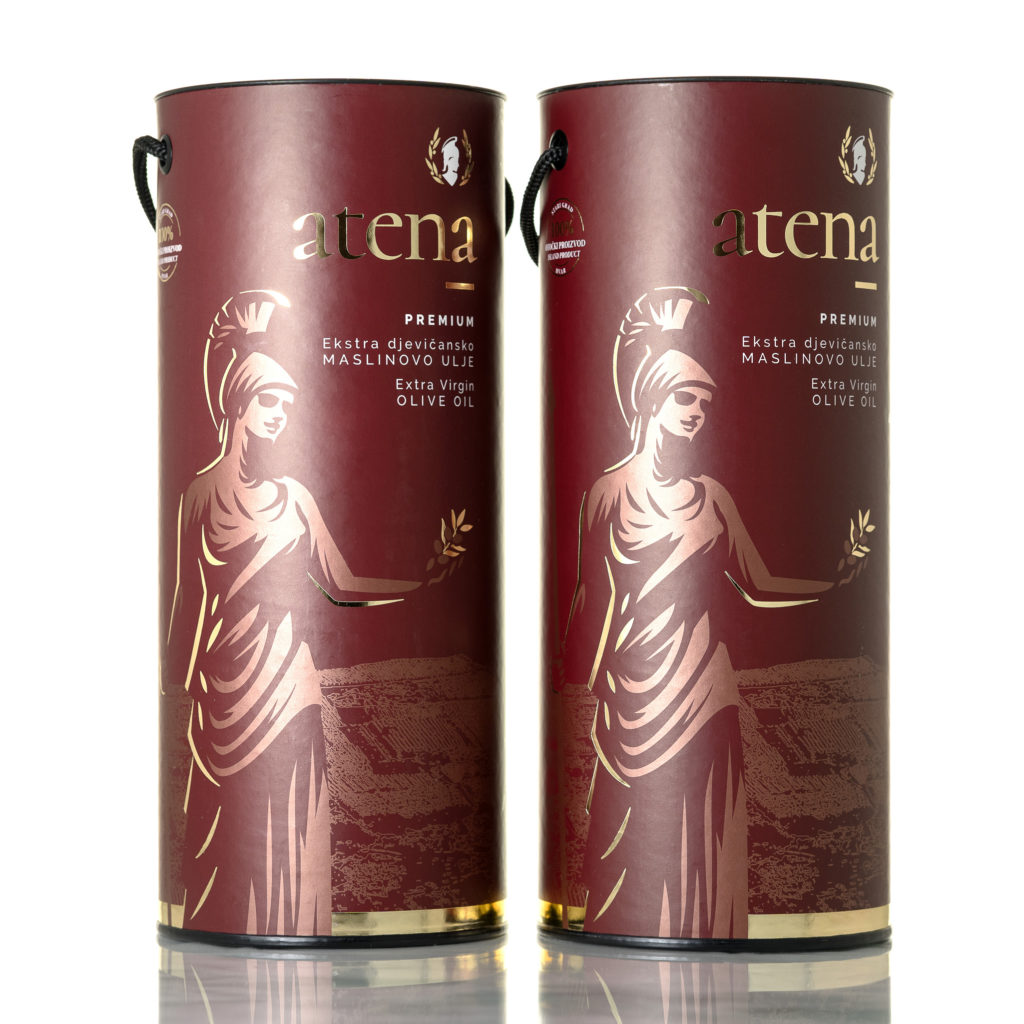
Athena Slavač is a mild-tasting oil that will satisfy a wide range of consumers who prefer milder-strength olive oils. It boasts a delicate aroma of ripe olive fruit, a soft taste of ripe fruit and pronounced floral notes.
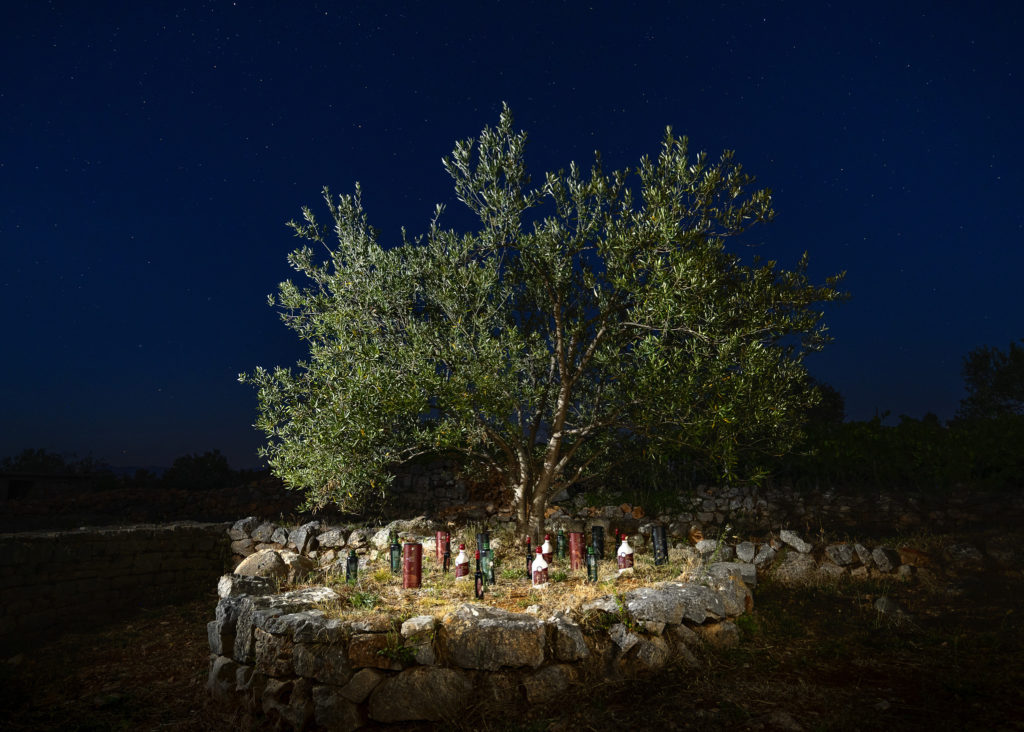
Due to the fact that a large part of the olive groves belonging to this family farm are located in the Stari Grad plain which is under the protection of UNESCO, Athena draws the strength of the microlocation in which it was born and matured.
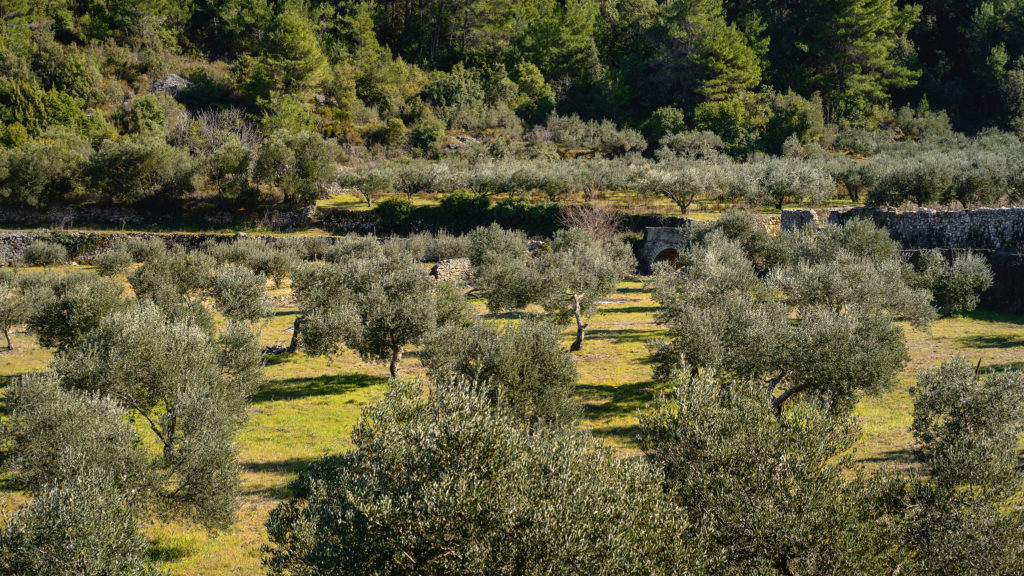
In tasting Athena, one actually tastes the history of the island, absorbing the fruit of the knowledge that has been passed down from generation to generation for as many as 2400 years.

Even in this very modern age, people still speak about the concept of terroir, which is what connects the taste and characteristics of this oil to the truly special peculiarities of its microlocation.
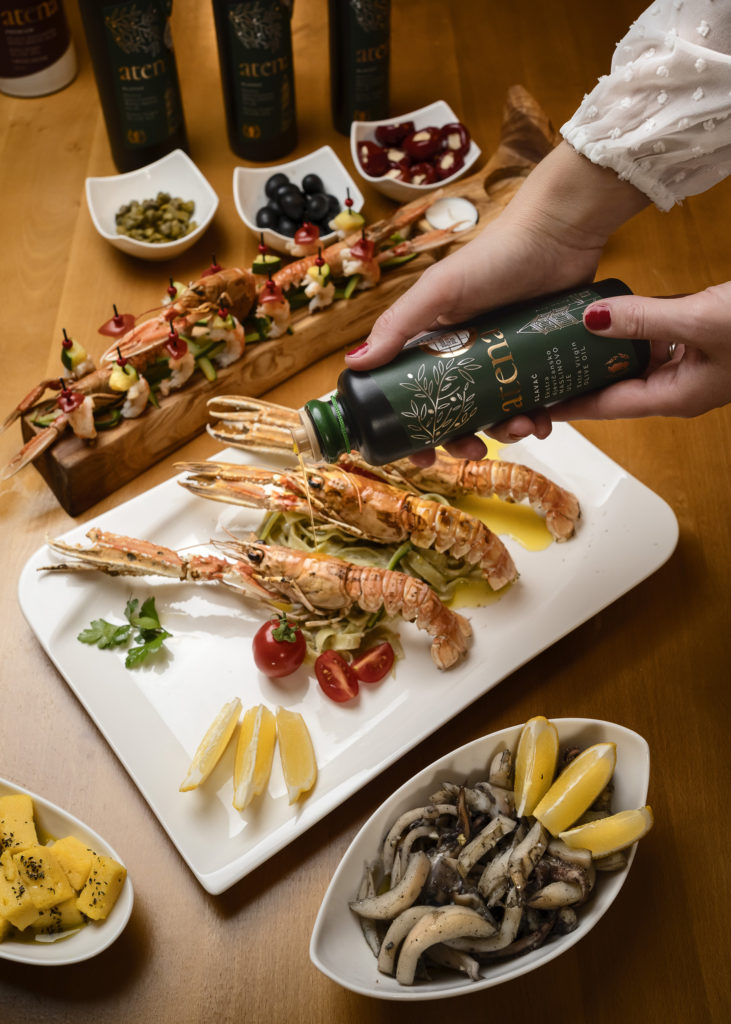
Athena is, as judged by the best experts in the field of oenology, table oil in the very best sense, one that will emphasise and round off the taste of quite literally everything it touches. And it will touch everything, from a simple piece of bread and cheese, to salted sardines and brujet (brodet).
Rhapsody will be made in every dish, it will stimulate the palate, cause a wave of gastronomic pleasure and enhance the importance of the most recognised, most appreciated and healthiest diet, the Mediterranean diet. Our diet.
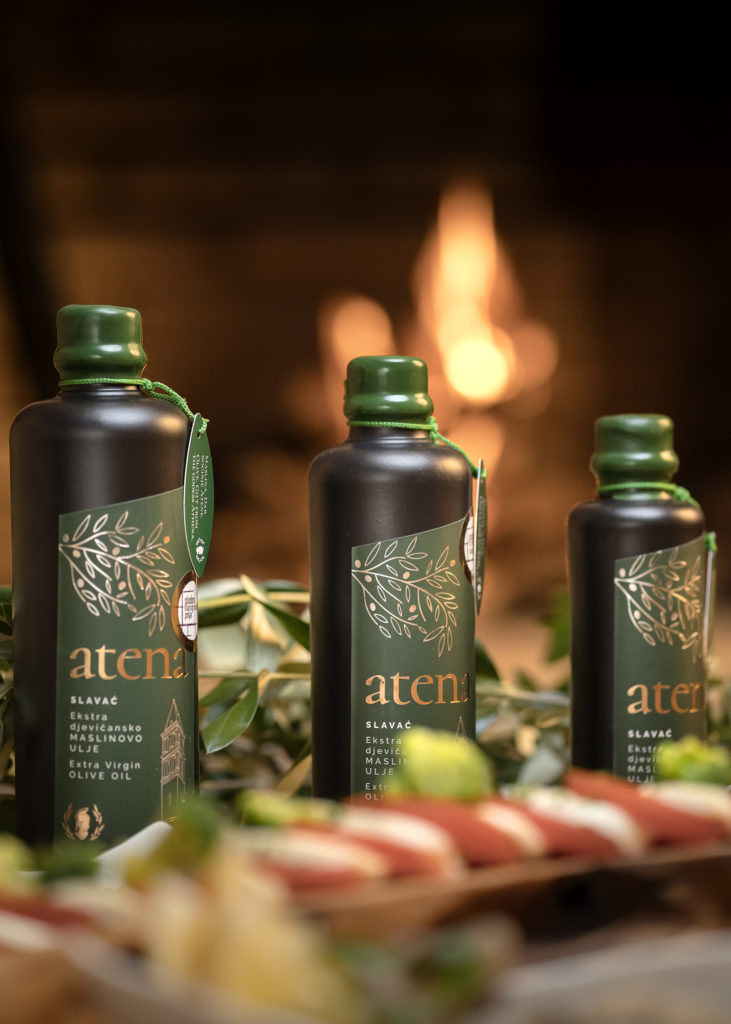
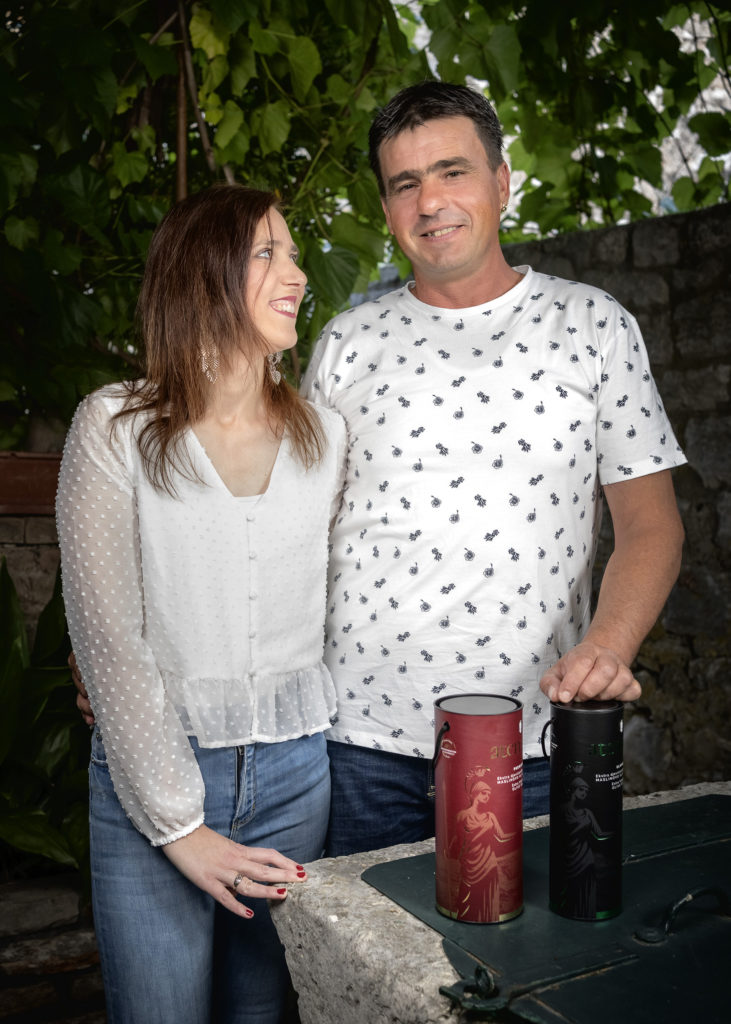
The owners of the Plenković family farm are a couple called Magdalena and Ljupce Plenković, who, last year, decided to brand their olive oil and purchase more fields in addition to their inherited olive groves. Their plan is to plant more olives and gradually expand their production capacities.
"Our desire was to combine the indigenous product with the history and culture of the plain, the benefits of the Mediterranean diet and pack it as a luxury souvenir."

Web shop: www.atenahvar.com
Points of sale:
"Za pod zub"- Srinjo kola 11, 21460 Stari Grad
"Aroma Dalmatia"-Dioklecijanova 5, 21000 Split
"Terrami"-Zadarska 3, 21000 Split
Photo: Phastudio
Golden olive oil makers from Hvar pick up the most medals at the prestigious NYIOOC competition in New York!
Owing to its truly stunning natural beauty and rich history, the island of Hvar is often visited by tourists and recognised as one of the top destinations in which to spend a summer holiday.

However, a real little gastronomic scene takes place on the island of Hvar, and the most commonly used ingredient on this gorgeous island is certainly olive oil.
Practically since time began, groves full of beautiful dark purple olives have been being planted and formed in this area and until now, there has never been more of them, producing renowned olive oils which continuously earn the highest recognition possible. There are as many as 220,000 olive trees on the island of Hvar, which speaks volumes about the island of Hvar having grown into a real little olive-growing island region.

The most common olive variety is oblica, with a representation of 85 percent, followed by lastovka, levatinka and the somewhat newer varieties lećino and pandolino. The presence of more than 900 small and large olive oil producers says enough about the tradition of nurturing olives and its products. It is therefore not surprising that every dish on the island of Hvar is sprinkled with this liquid gold.
THE NEW YORK OLIVE OIL COMPETITION 2018: Istrian olive oils shone with all of their brilliance once again, and at this year's competition in New York - NYIOOC, Croatian olive oil producers picked up more gold and silver medals than olive oil producers from anywhere else in the world did.
In terms of the number of medals in this year's competition, the winners are, as expected, Italy and Spain. Of the 60 samples sent from Croatia, 34 of them won a gold or silver award, and the percentage of Croatian winners in this competition stands at an impressive 57 percent, making it the highest in the world.
The NYIOOC World Olive Oil Competition is otherwise the largest and most prestigious world competition for olive oil. The annual list of award winners is considered an authoritative guide to the best extra virgin olive oils of the year.
Of the 34 winners from Croatia, 10 percent of them come from the island of Hvar, namely: Božić uje, Eva Marija uje and Radojković uje.

1. ULJARA BOŽIĆ - SVIRČE D.O.O.
Božić olive oil is imbued with the tradition, diligence, love and expertise of their family. High standards and passion for food inspire them to produce olive oil which boasts an excellent taste, made from only the finest of ingredients. At this year's competition, the award went to Oblica olive oil, which is characterised by its distinct aroma and taste. This oil has a slightly spicy and bitter taste, with a pronounced and intense sweetness to it.
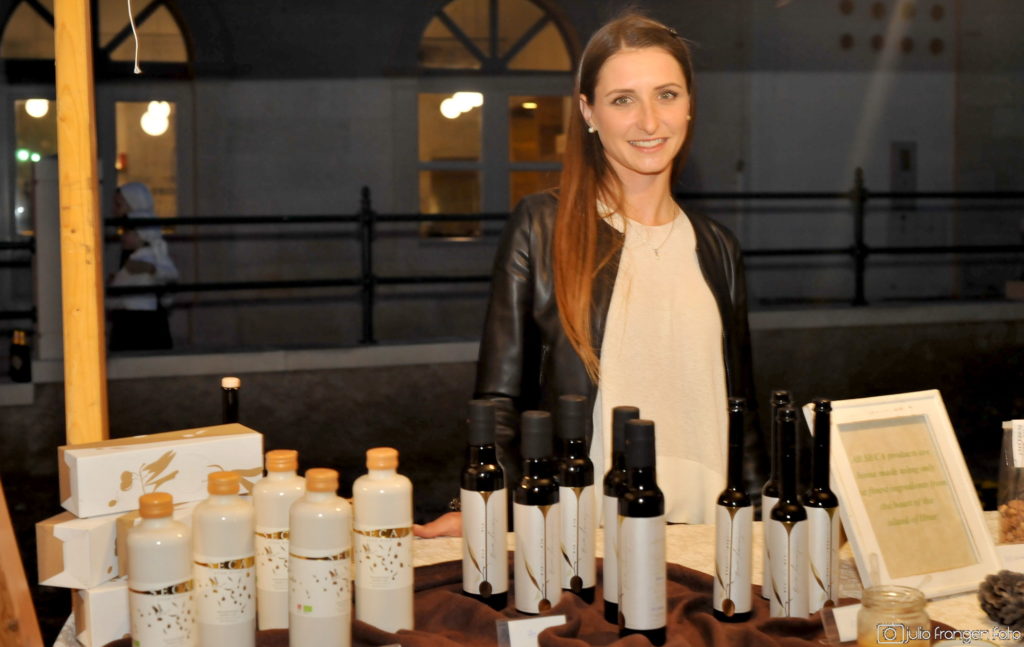
2. OPG ČURIN EVA MARIJA
The winning oil from Eva Marija, which is of the levatinka variety, has a medium intensity and fertility, with a feeling of green grass, apple and green almond. This oil also boasts traces of artichoke and chicory, with notes of black pepper and aromatic herbs such as rosemary, sage, and even mint. The bitterness of this particular olive oil is well defined and its sharpness is pronounced, and all of that is very balanced. OPG Eva Marija Čurin is located in the eastern part of the island of Hvar, close to Gdinj.

3. THE GARDEN OF EDEN (RAJSKI VRT) - RADOJKOVIĆ
The Garden of Eden was created out of love, and love is what this producer wants to permeate into every single little drop of olive oil that comes from the estate. The production is located in Bogomolje, a small village located on the eastern part of the island of Hvar, away from the crowds of summer tourists. The award-winning Levatinka olive oil was obtained exclusively from olives of the Levantinka variety. This variety provides a truly superior oil of moderate spiciness, also boasting the smell of fresh grass.
Last year on the island of Hvar, olive oil production was extremely fruitful, not only in the sheer amount of oil produced but also in terms of its top quality. Bravo to the Božić, OPG Eva Marija and Radojković oil producers.
Visit idyllic Ethno-eco villages of the Split-Dalmatia County
Who is to say that as summer goes on, we have to wrap ourselves in our houses, and wistfully wait for winter to pull out the cold days, until we can again celebrate sprint? No way!
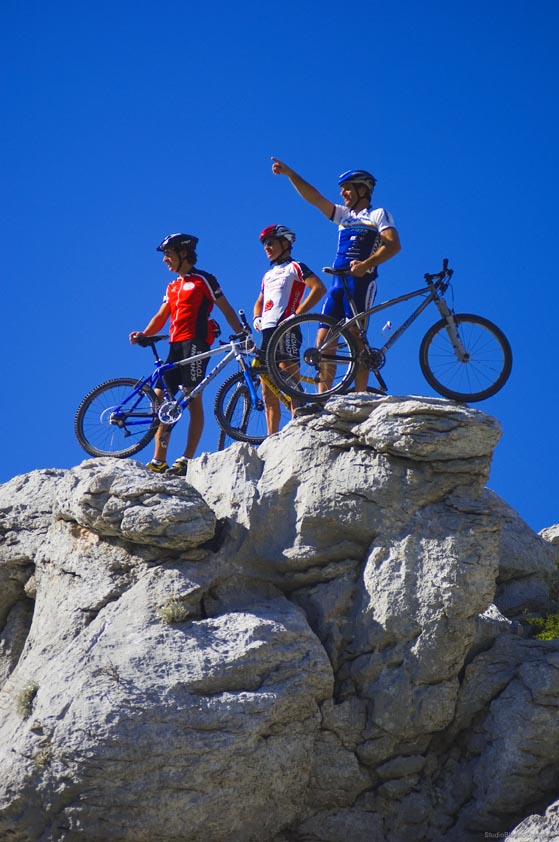
Now starts the perfect period for vacation, as the post-season offers many opportunities, one of them being a tour of the idyllic Ethno-eco villages of the Split-Dalmatia County.
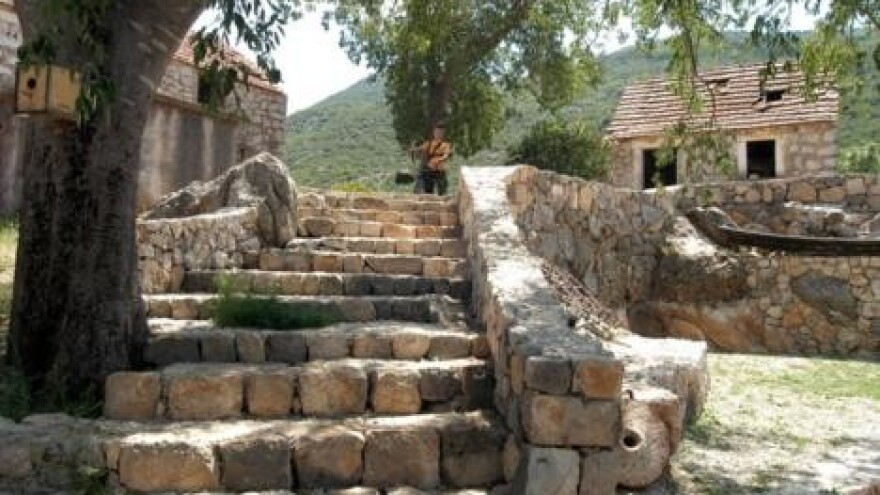
This is a very high-level project, which was initiated by the county 14 years ago, in cooperation with the local self-government units. Through this project, the County invested over 5,600,000 kuna by year 2009, with the aim of developing rural tourism as a new added value in its offer.
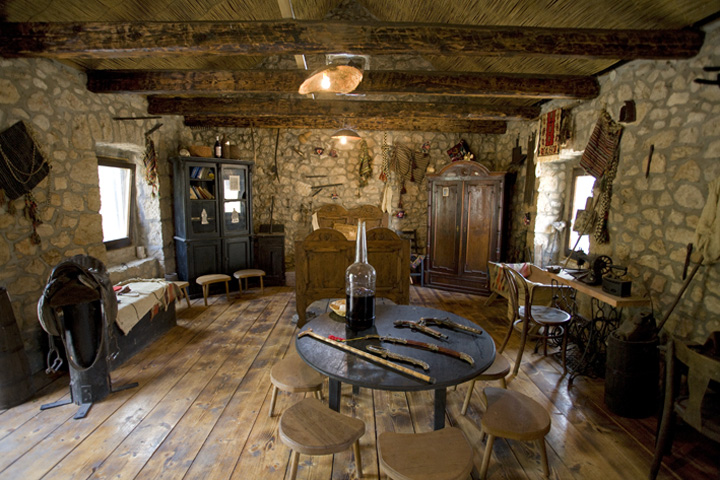
The motive was clear - with this project the County made it possible to stop the trend of bulk-selling of old stone houses, to invite back the people who have migrated from these locations, and to restore life. The project revived the once neglected, empty sites, turning them into excursion locations both for local and foreign tourists.
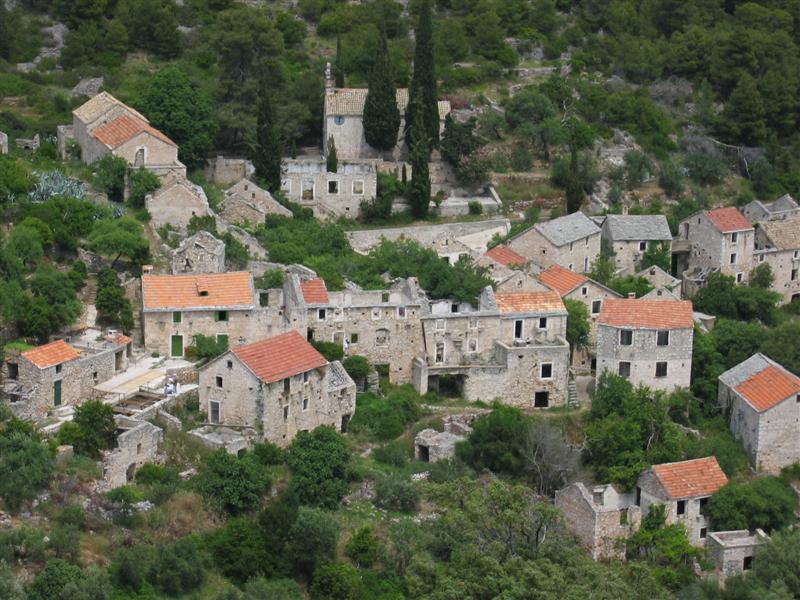
There is no greater beauty than the restored stone, no better views than those of the preserved traditional buildings, the beautiful "solurati", fireplaces and tavern areas, the massive "vacada" stones (cube-carved stones) that guard the faces of former homes, the finely grouted joints, wooden blinds and dry walls.
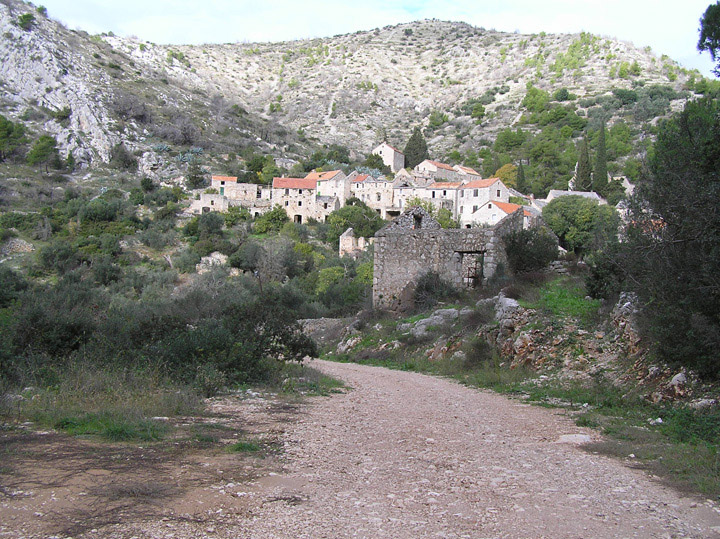
Why are we inviting you to these villages? Because it's time to get to know the magic of our Zagora, and locations int he hearts of our islands, to go out into nature in the time of fall and winter, liberated from loud sounds of murmur, traffic, noise. Why? So you can experience a special kind of entertainment, which will be remembered for many reasons.
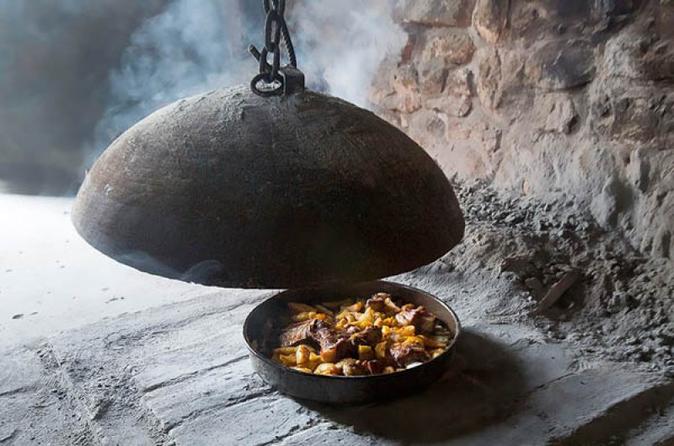
Ethno-eco villages offer many options, they are ideal holiday destinations in the true sense of the word. You will be greeted with warm houses, homes full of massive fragrant woodwork.
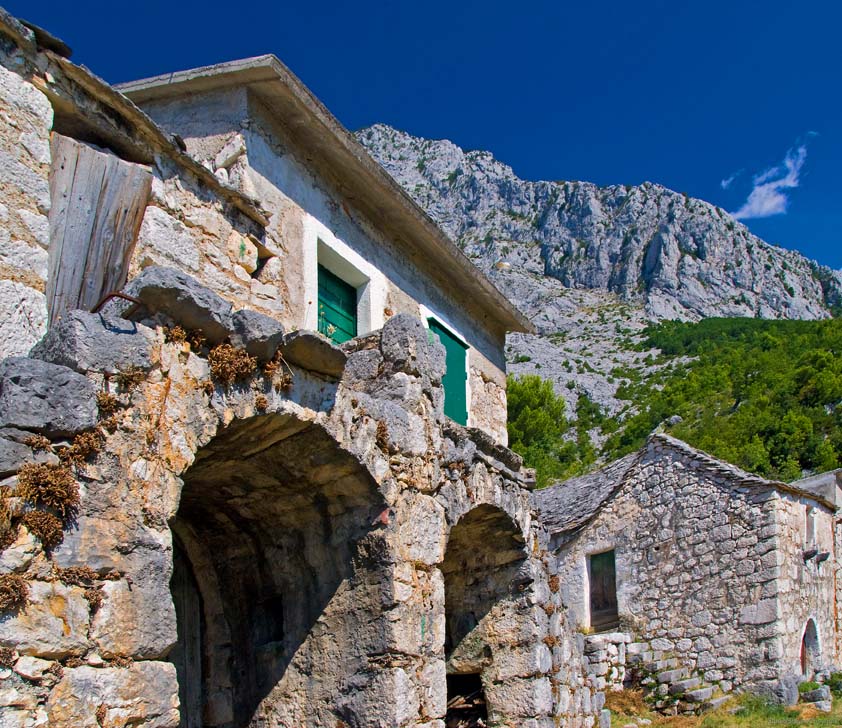
Old red-and-white curtains on small windows, an atmosphere that gives immense tranquility. You will feel the magic of socializing, you will be cycling, hiking, running, mountaineering. If you spend the night, you will get to sleep by the warm fireplaces, and listen to the fire crackling from the old stoves.
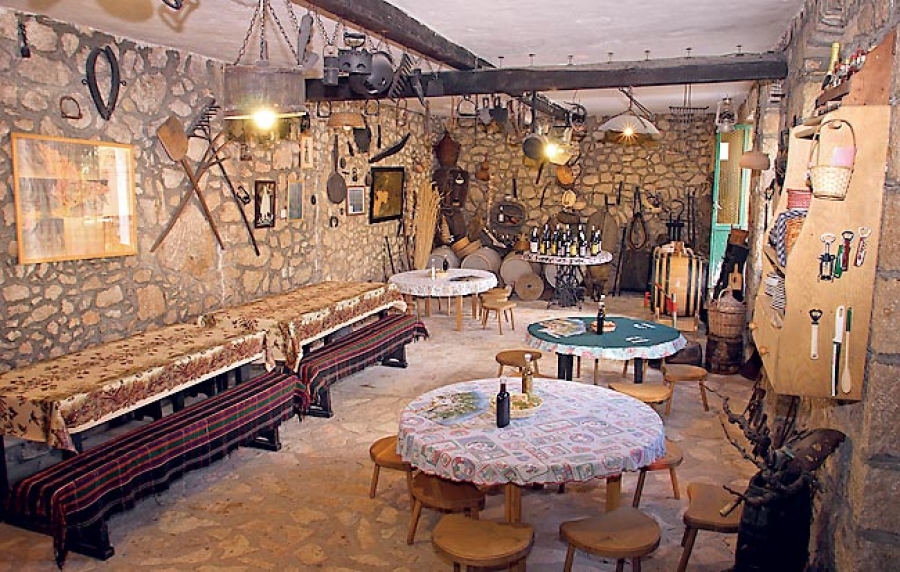
And that's just the beginning. In the morning, your hosts will prepare you breakfast, so different from the standard, grab-a-quick-bite ones. Homemade butter and marmalade, hot bread and cakes, fresh milk. Homemade cold cuts, honey from the hives of local beekeepers. Homemade juices of elderberry, blackberries, cherries.
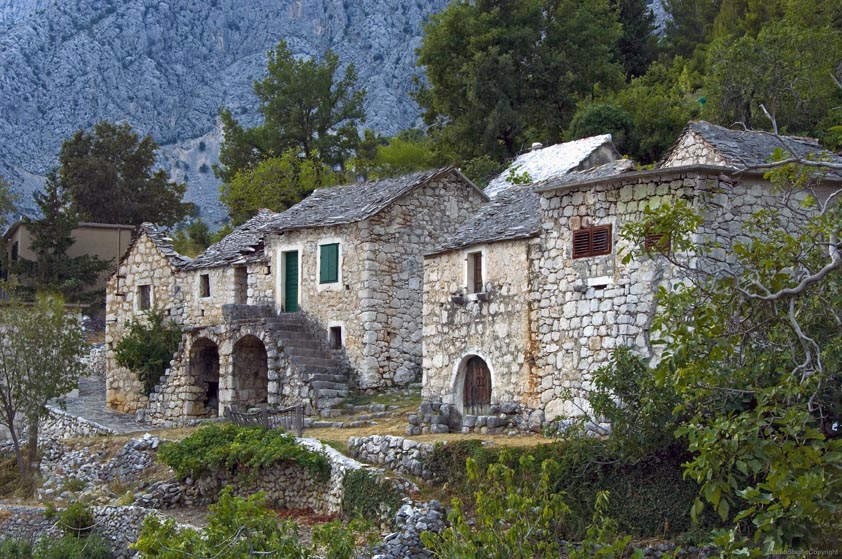
You won't even have a break from the taste explosion, and you'll be in for a fresh new serving of delicacies. What to choose, which one to try? We will not even try to comfort you, the choice won't be easy! And you are not even supposed to be given an easy choice – you must try it all, as these are treasures coming from our fields, from the barns, from the domestic cultivation, from the nearby streams.
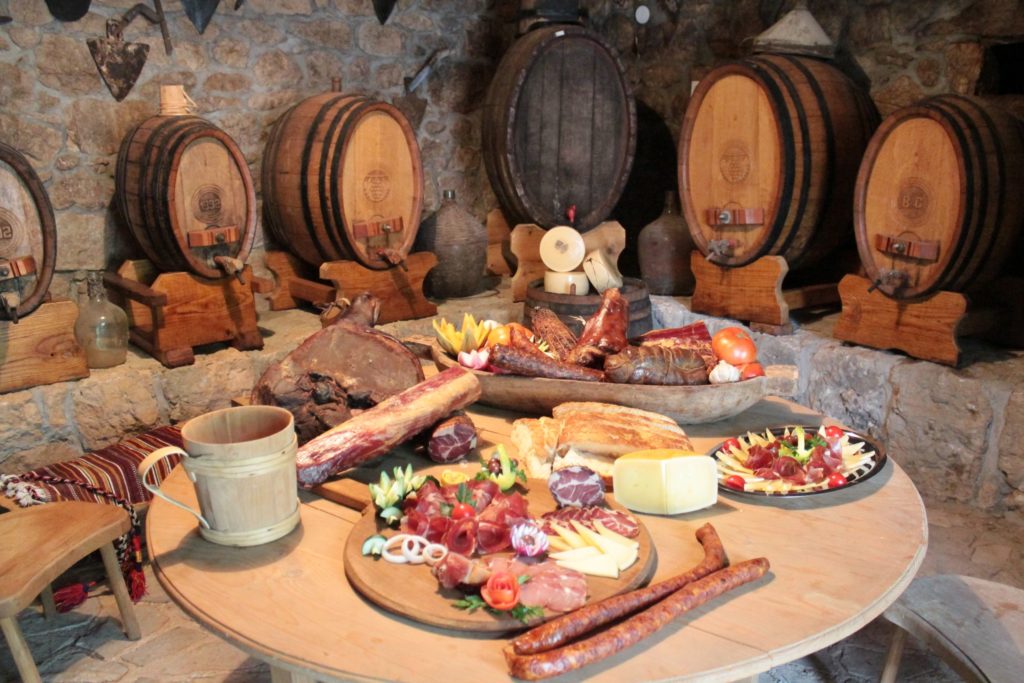
But here, let us give you a small hint – do try the homemade soup, cooked lamb, roasted in a "škrovada" pan, or on a spit, our "vitalac". "Dolce garbo", baked veal, snails and capons, trout and homemade potatoes, prosciutto and herbs-infused cheeses. Homemade desserts and cakes with almonds or walnuts, poppy-seed or walnut rolls ("makovnjača" and "orahnjača") and pancakes stuffed with homemade jam.
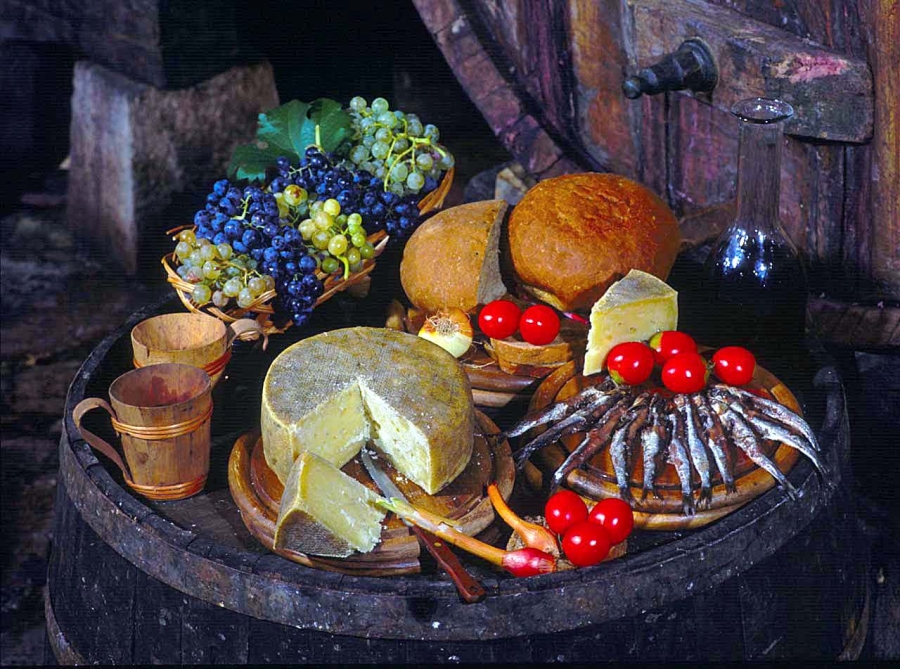
Trust us, you can't have a taste of these kinds of dishes just anywhere, you can only experience something like this in a true home-like environment. In locations that have taken only the best from the present and the past. And they offer it to you with their hearts wide open! So just head to one of the best Ethno-eco villages in Split-Dalmatia County:
- Topići, Topići-Bast (Baška Voda)
- Zorače, Malo Grablje, Velo Grablje, Brusje (Hvar)
- Humac (Jelsa)
- Podhumlje (Komiža)
- Tugare Ume, Čažin Dolac (Omiš)
- Dol (Postira)
- Gornji Proložac Podi (Proložac)
- Blace (Solin)
- Grohote (Šolta)
- Podi Grab Bugar., Gornje Voštane i Grubišići (Trilj)
- Kokorić, Veliki Godinj (Vrgorac)
- Karoglani (Zmijavci)
- Murvica (Bol)
- Gornja Podsrtana, Stara Podstrana (Podstrana)
- Lolić i Mijanovići (Split)
- Brdaci (Zec), Divojveići, Etno eko selo Škopljanci Radošić
- Botić-Opor (Prgomet)
- Naklo-tavnice (Lokvičići)
- Jesenice, Duće (Dugi Rat)
- Mala Rudina (Stari Grad)
- Bekavci Kričar (Brela)
- Rušinovići, Drvenik Veli Kačine (Trogir)
More: www.dalmatia.hr
Photo: www.dalmatia.hr, archive of TB of Split Dalmatia county,

Discover the ethno - eco village Dol - The stronghold of Brač’s heritage and tradition
A visit to Brač, our largest island, is always intriguing, interesting, and many would say - delicious!
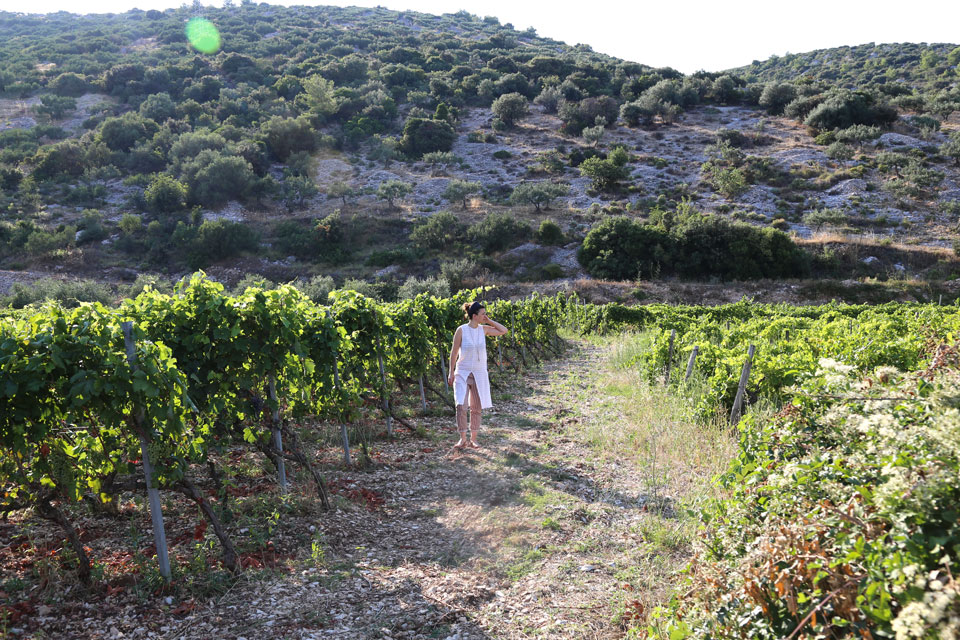
This is especially true of the charming ethno-eco village of Dol, which seems to have united the best of the island - it is a true stronghold of Brač's heritage and traditions!

Therefore, whether it’s Brač gastronomy that you love, or its cycling and hiking possibilities along well-maintained trails in an authentic island setting, doing a bit of sightseeing of the original architecture and picturesque cultural heritage, or looking for great insights into this island’s delights, here are three great reasons why you should include Dol in your itinerary.

1. It wins you over at
first glance with its architecture and culture!
Dol is an oasis of peace and tranquility, just 2 kilometers
from Postira, where the houses traditionally covered with stone slabs will leave
you breathless at the very entrance - just like the marvelous, grainy caves
made from hrapoćuša stone.

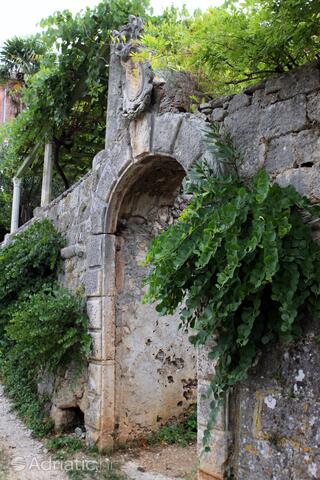
These caves used to be human dwellings and the basis for later upgraded houses, but today they are shelters for cattle, pigeons, owls and even the alleged mythical creatures which are to be discussed later - and they have also served as an inspiration for a truly special cake.

You will also be charmed by the picturesque churches that can be reached along properly arranged footpaths, such as the church of Sv. Mihovil from the beginning of the 10th century, or St. Petra from the 11th century - where you can see the oldest bell on the island of Brač!

2. Beautiful Dol castles
which hide great food within them
Is there a better spectacle for the palate than local
traditional delicacies seasoned with true hospitality? The enthusiastic guests
of the Kaštila Gospodnetić Castle in Dol, a building which dominates the view
of the place with its reddish wall colour in contrast to the famous,
old-fashioned green, wooden shutters, all agree - there is nothing better!

Just look at the reviews on Tripadvisor, which are bursting with praise. Perhaps they can best be summed up by a gentleman from distant, cold Moscow, who enthusiastically writes: “I wouldn't call this a restaurant. Rather an experience!”
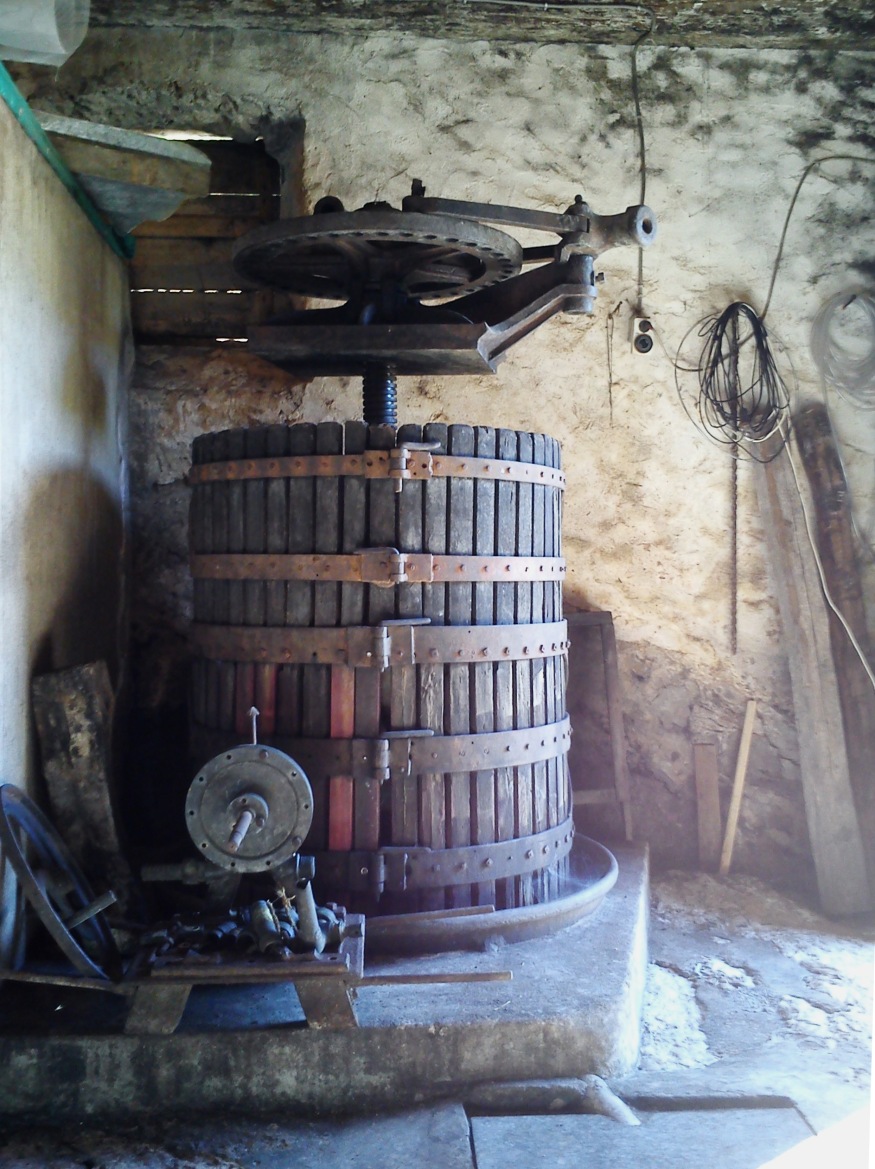
The famous octopus under the bell and delicious lamb from the spit, to put it mildly, did not go unnoticed, and the ovations of foodies with sweet teeth were also picked up by a juicy orange cake and the domestic variant of a hearty Plavac mali!

However, it would be a sin to talk about Dol gastronomy, and not mention the most special homemade dessert - check out why the famous Dol hrapoćuša cake made it to the list of intangible cultural assets of the Republic of Croatia!

3. Take Macića and
Vivera’s path
However, just so that one doesn’t think one can just eat well
in Dol, it’s worth knowing that this is a favourite destination for hikers and
cyclists, because it can be reached by well-maintained roads and trails from
various directions, and intriguing themed trails run through the place itself.

And when we say intriguing - we really mean it!
Intriguing is precisely what the hilly asphalt-gravel track of
Macića and Vivera is. It is named after supernatural beings, resembling
characters from Croatian fairy tales, such as those of Ivana Brlić-Mažuranić!
As Vivera is tied to the phenomenon of natural caves in the
reddish rocks made from local, grainy hrapoćuše stone, from which inexplicable
noise is supposed to be heard, don’t be frightened, but continue onto Škrip,
where you can get better acquainted with the magnificent olive traditions in
the fantastic Museum Uja, and taste some delicious domestic products!

More: www.dalmatia.hr
Photo: Tz Postira, Lidija Žižić, Kaštil Gospodnetić

A sensation for your palate - unlock the flavors of authentic Brač cuisine!
The whole island - on a plate!
The symbolic key, often used in our attractive promotional
campaigns by our island metropolis - Supetar, comes from one of the local
patrons, St. Peter, the locksmith of paradise.

And if you want to unlock a truly heavenly experience for the palate, we suggest you hop on the first ferry and head to one of the attractive Supetar restaurants, taverns, oil and wine tasting locations, or enjoy some agritourism! We’re convinced that this experience will make you a true gastro-expert.
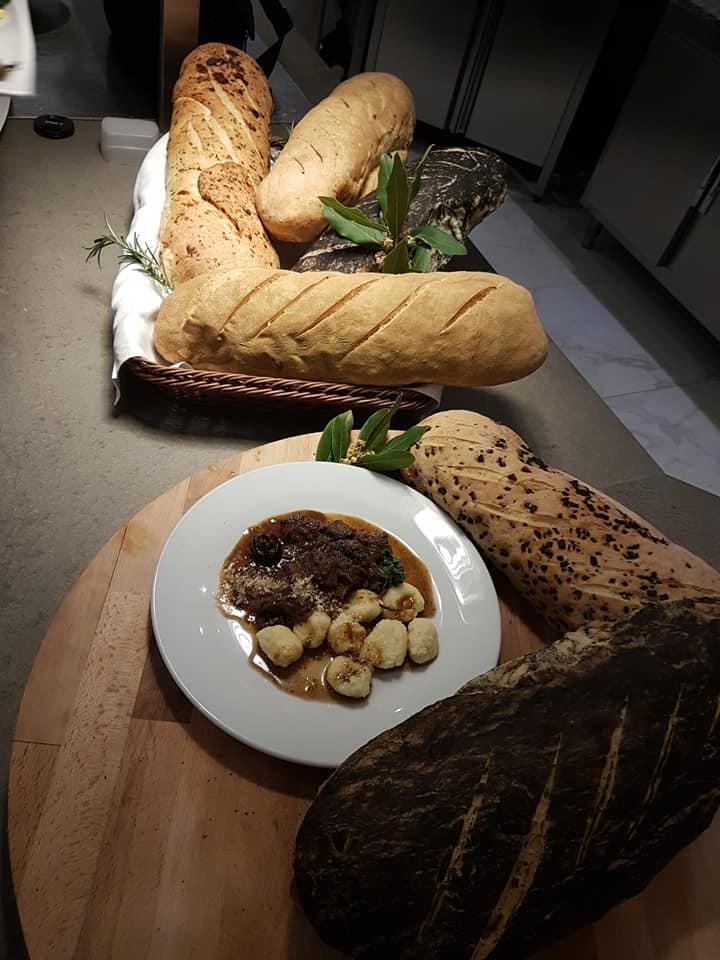
The Supetar Tourist Board and the Supetar Agricultural Cooperative launched this project aimed at promoting indigenous Brač’s gastronomy back in 2016.
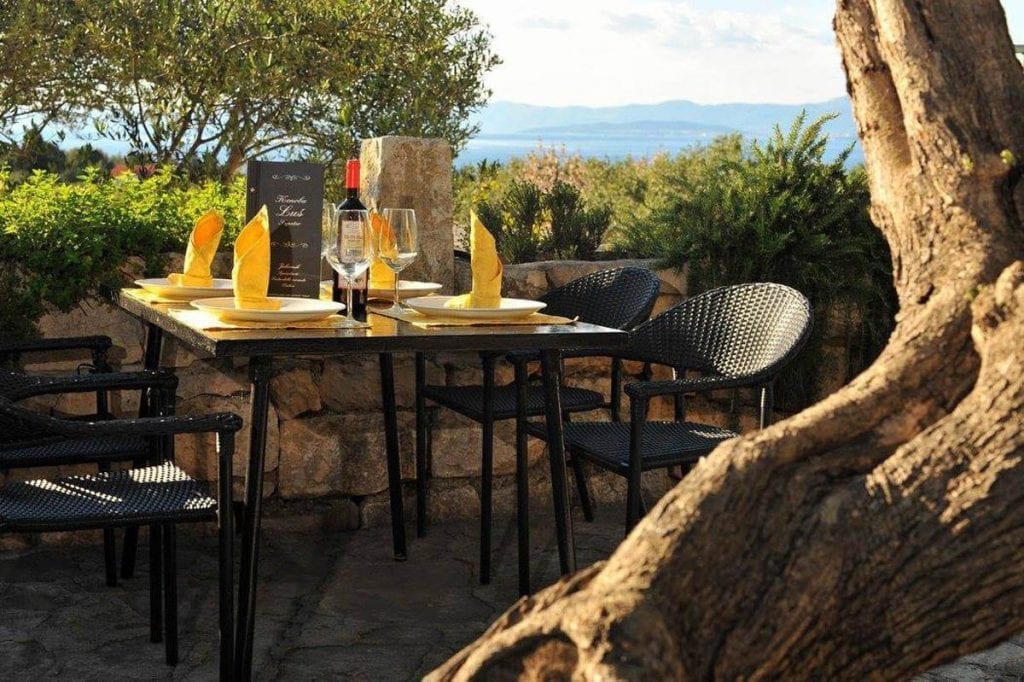
The best is - always autochthonous. We particularly like the Dolce Vita hiking trail’s offer when it comes to Supetar’s gastronomy, which, as its name implies, invokes a sweet life!

The trail, which starts at agrotourism location on top of Supetar, boasts a total length of just over six kilometres and connects several attractive gastro points together - five restaurants, taverns and farms, two art galleries, and even a family winery.
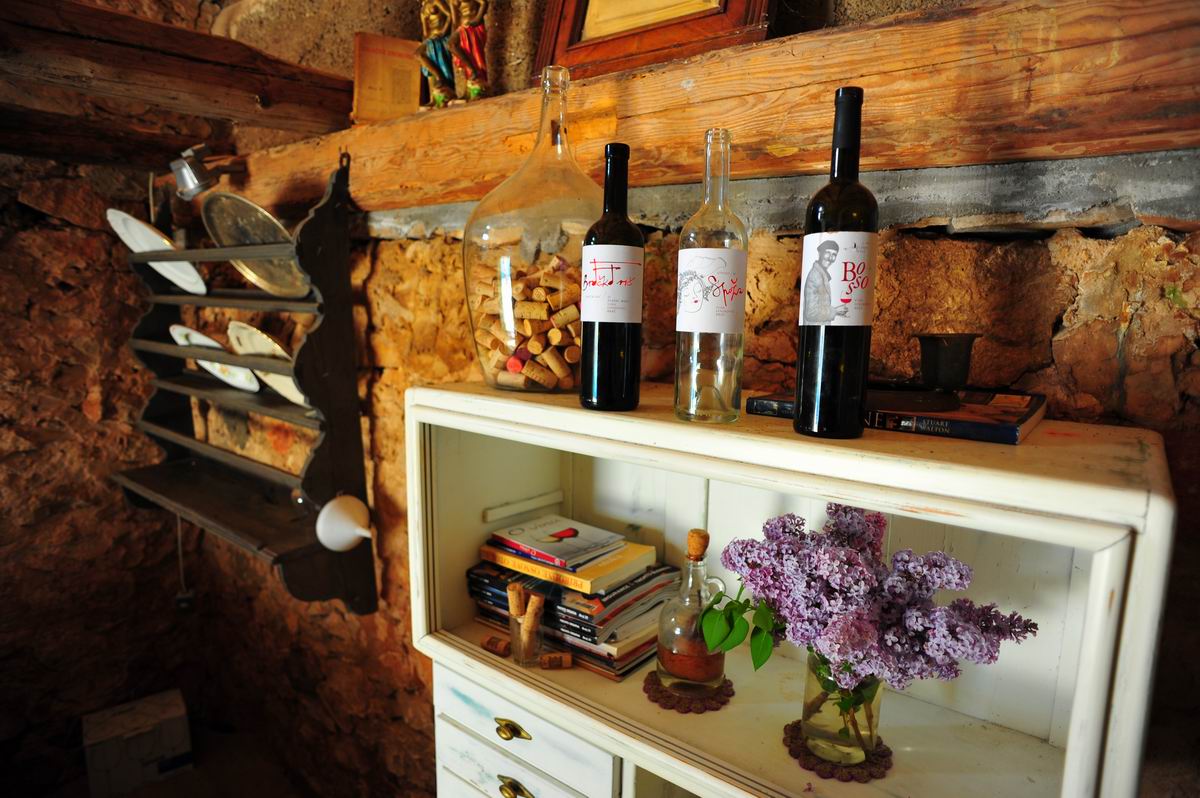

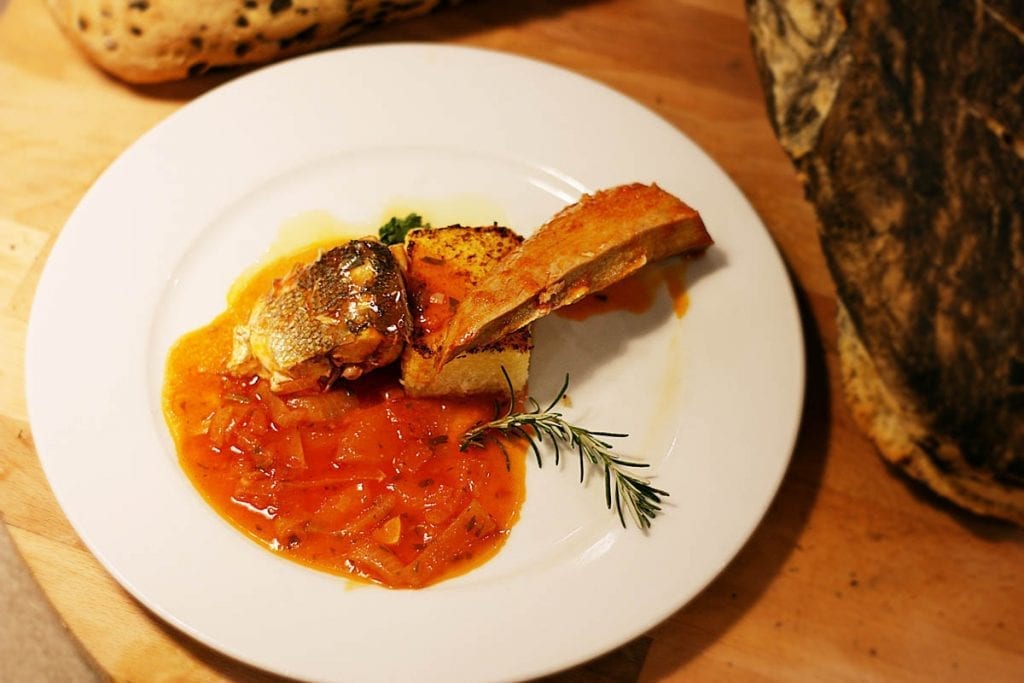
A few years ago, Supetar launched a laudable gastro-traditional initiative that has continued to take place to this very day. Namely, it is a project called Otočka kuhinja (Island kitchen), which tasked the city with returning the indigenous dishes made according to the recipes of local Brač grandmothers to the island’s taverns and restaurants, from ingredients obtained from their own gardens!
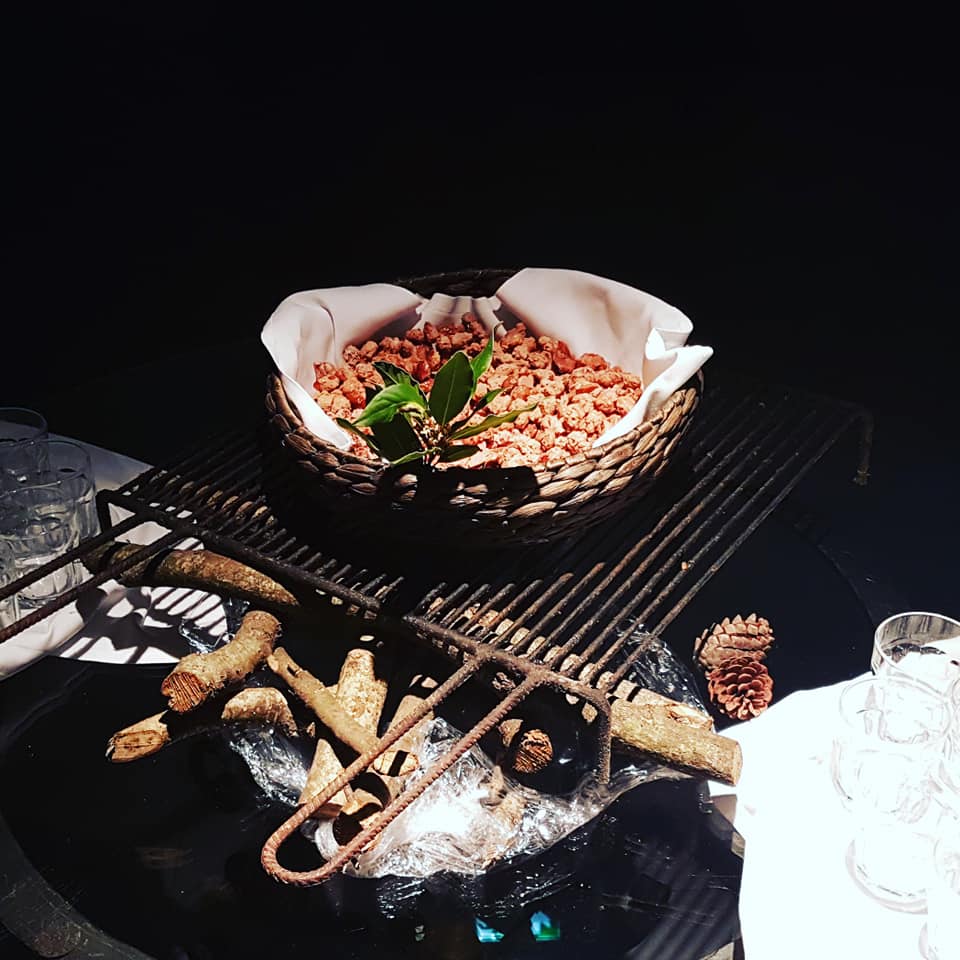
Through the process of assigning a special standard for the restaurants, taverns, OPGs, and tasting rooms, Supetar locals wished to bring back many traditional, native dishes back to the table and, of course, a few nice bottles of Plavac mali are implied!
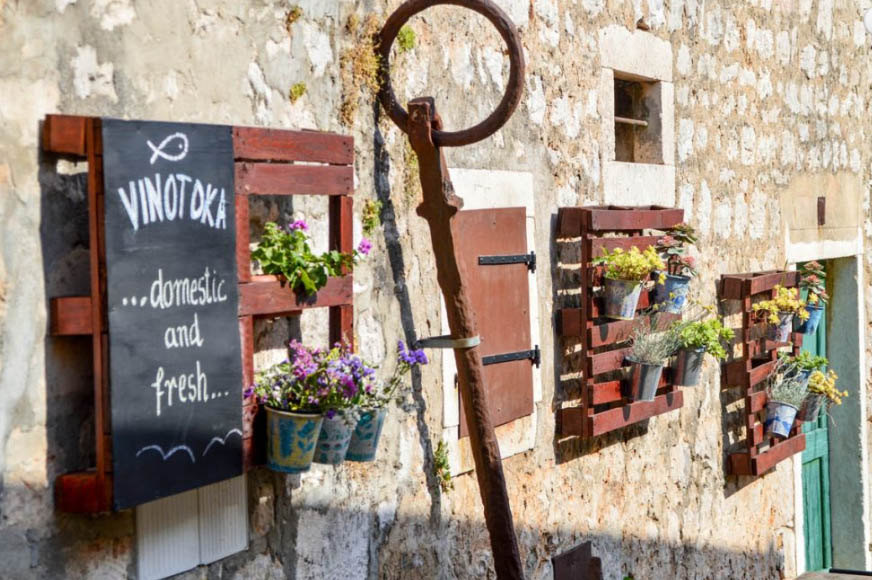
Seek them out and try one of the emblematic Brač-based products and the fruit of centuries-old tradition - olive oil of exceptional quality - at Museum Uja in Škrip.
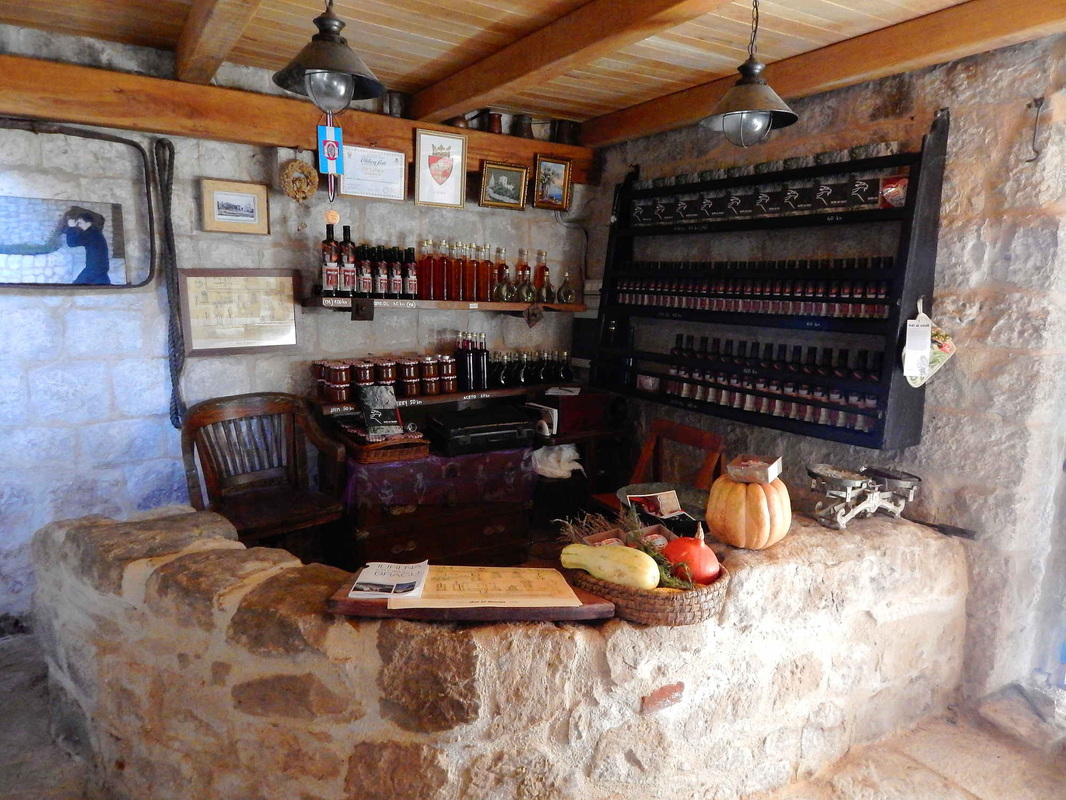
Don’t forget about the
gastro stars!
Is there anything better than delicious food based on healthy domestic
fruits and vegetables served in restaurants overlooking the island's landscape?

We don’t doubt it, but don’t forget the fabulous stars of Brač either - the delicious hrapoćuša cake, with the ruffled appearance of the Brač karst, and the ancient, crunchy vitalac, so unique and special, that they are included in the list of national intangible assets.
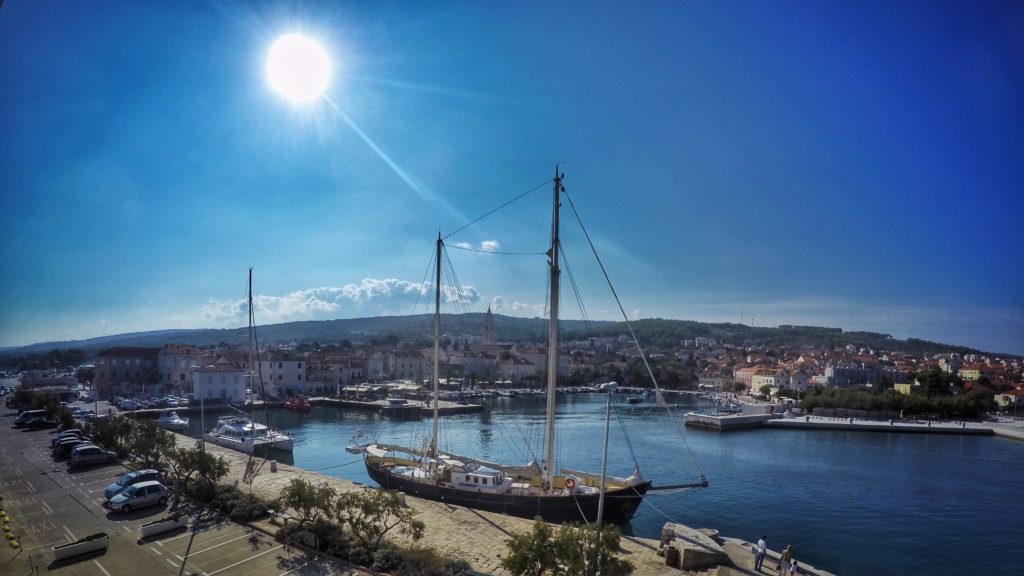
Photo: TB Supetar, www.supetar.hr
More: dalmatia.hr

In honour of the vines and the goats! Bikla Days in Vrgorac and the 20th ‘’Biklijada’’
Bikla Days in Vrgorac is a distinctive autumn tourist
attraction!
Time and place: September the 28th, 2019, at Korzo in Vrgorac!

Do you know what bikla is? This is a traditional drink of the
Vrgorac region, a blend of young, unripe wine and goat's milk, of a
characteristic colour, and a strong and pleasant taste, which has been produced
in the Vrgorac region for centuries after the grape harvest, in honour of both
the vines and the goats.
Many visitors come to the ‘’Biklijada’’ in Vrgorac to taste
this traditional Vrgorac beverage, which has been being made in Vrgorac for
over a hundred years.

Bikla Days and the 20th Biklijada are part of an autumn folk festival full of tradition, folklore and gastronomy organised by the Vrgorac Tourist Board and sponsored by the City of Vrgorac. It was created to honour the authentic customs and traditions of the Vrgorac region on the days when the bikla is drunk, at the town Korzo in Vrgorac!

The festival starts at 19:00 with an evening fair of local products, handicrafts and culinary specialties, while the cheerful atmosphere will be complemented by a folklore program, live music by the acoustic Gojak band and a concert by the VERSI group.

The Biklijada Folk Festival takes place at the end of September and the beginning of October, when the grape harvest is already coming to an end, and has become a well recognised autumn tourist attraction

Bikla has occupied an important place in nutrition in the Vrgorac region, especially in difficult living conditions, due to its strong properties. It is prepared by mixing hot wine with milk. It is important to pour the wine into the container first and then add the milk and slowly mix clockwise until the colour of cyclamen is obtained.

You then drink it in accordance with your work, while in the evening, you drink it in front of a warm fireplace and in a wooden ‘’glass’’ (Dalmatian: bukara) which contains half a litre. As such, bikla has gained importance in comfort in relaxing moments. It has remained in the tradition of the Vrgorac region to this day and in its honour, the Bikla Days are organised.

This traditional one-ethno and gastronomic festival nourishes
and revives this authentic custom, and with its offer of an evening fair of
local products and handicrafts, folklore and entertainment programs, the
festival makes this area richer, more meaningful and attractive for locals as
well as for guests looking for live and more authentic events.
See you in Vrgorac!

Photo: www.tzvrgorac.hr
More: www.dalmatia.hr

The culinary personality of Central Dalmatia - Discover a region full of flavour!
Meet the dishes which speak - all languages!

Unique locations, a perfect sea and beaches, and an abundance of cultural and historical heritage are common motives for guests from all cantons to rush to Split-Dalmatia County.

But here's a real straightforward experience and a delicious domestic ‘’table’’of dishes, which combine Greek, Roman and Illyrian Mediterranean flavours with a magical touch of the orient!
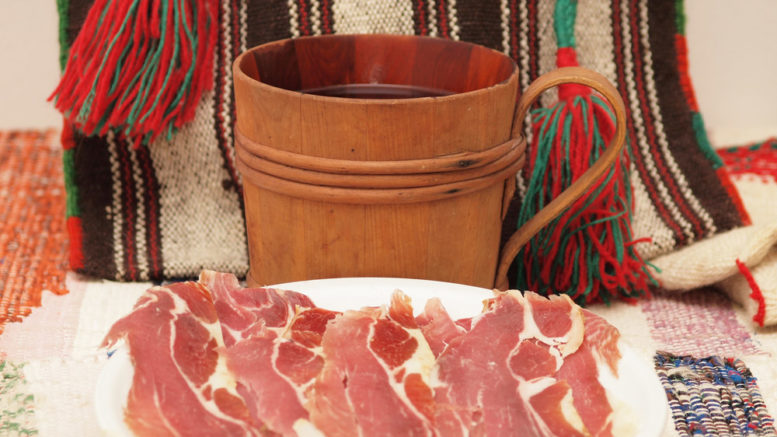
In order not to deprive your palate of sensations worth recounting, we have prepared an attractive list of dishes worth tasting for you - the luxurious tastes of which speak - in all languages!

1. The Dalmatian peka. It’s worth starting this list off with a real specialty - the softest and the most delicious meat ‘’under the bell’’, paired with domestic potatoes and herbs! They are simultaneously cooked and baked under an iron bell, which provides the most delicious veal and lamb (or seafood delicacies like octopus!) ever.
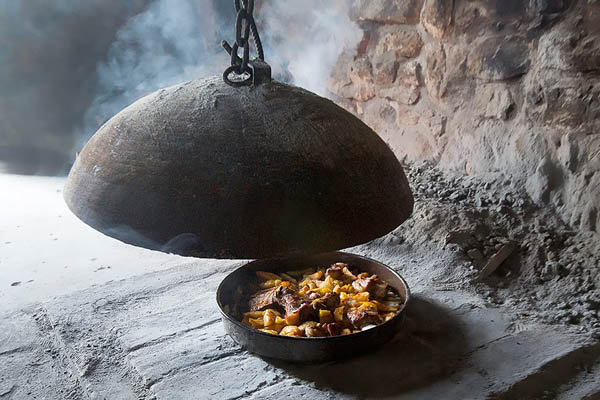
Check out why meat baked in cities all over the coast, but also in the Dalmatian hinterland, enjoys the true status of royalty!
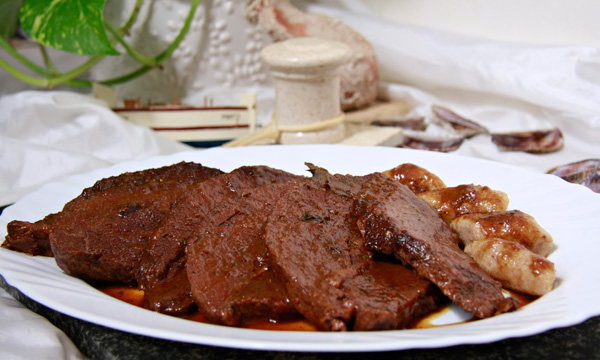
2. Pašticada comes a close second to the peka, the unadorned queen of all important events - for example, if you find yourself at a typical Split wedding, there is every chance that the meal sequence will involve this specialty of beef, veal or big game, with a portion of gnocchi sprinkled with sheep's cheese!
Sounds great, doesn't it? Don't miss out on this meal, and the traditional preparation of which that lasts for days!
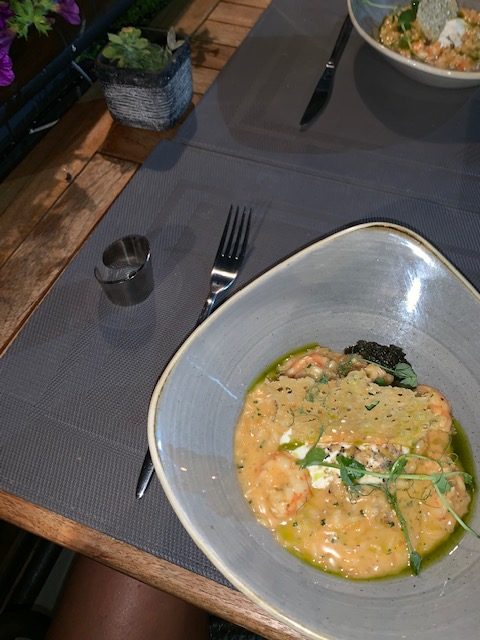
3. Creamy risotto is most often eaten in Dalmatian homes as a delicious appetizer, and culinary connoisseurs know this meal is nutritious and delicious enough to be the main star of an attractive Mediterranean lunch!

We especially like the variation of cuttlefish, which besides its excellent taste, also captures attention with its unusual black colour obtained by the addition of cuttlefish ink!
4. Island Pogača (bread pie) is a true example of an indigenous dish that has formed the basis of island nutrition throughout history. Look for Vis, Hvar (forska), or Komiža pogača and feel like a real islander.
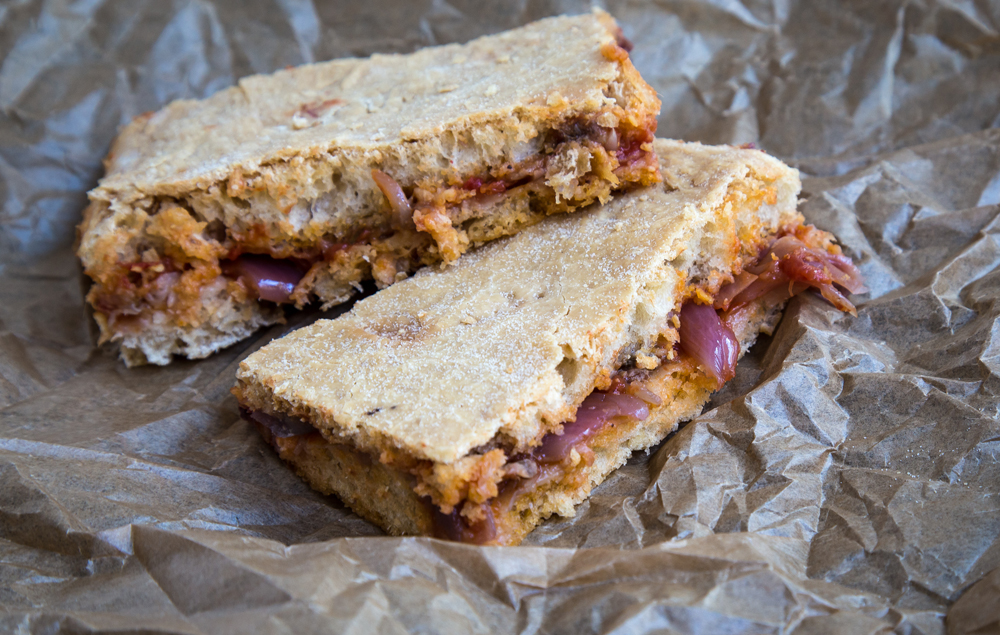
Komiža pogača is made up of a combination of sweet-sour tomatoes and salty pieces of fish, Vis pogača is made from a delicious dough topped with shredded anchovies or sardines, and the Hvar (forska) pogača will disarm any real foodie - namely, in addition to these ingredients, goat’s or sheep’s cheese is also hiding within it!

5. Sinj arambašići will always be served, in addition to delicious ingredients, with authentic local hospitality! These smaller scrolls of sauerkraut or fresh cabbage stuffed with a mixture of beef and pork, cooked for two days in a pot lined with pieces of dried meat or bacon, and they go great with a glass of bold homemade red wine!

6. The clean Cetina river is a real source of abundance and luxury on gourmet lovers’ tables - try some river crabs and trout with grilled or a real delicacy - roasted frogs wrapped in prosciutto, smelling of rosemary and drizzled with wine!
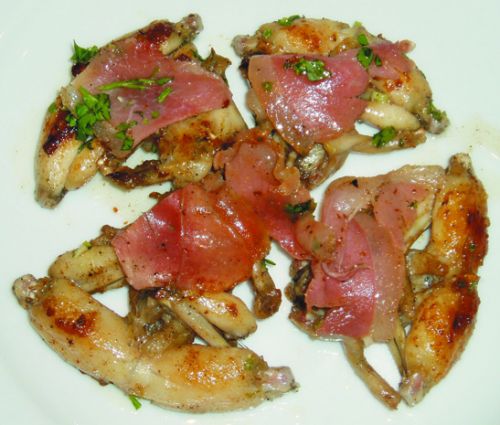
You will find specialties in the hinterland, especially in one small town - Trilj, which is a favourite destination for exhausted businessmen in search of sensations and refreshments for their palates!
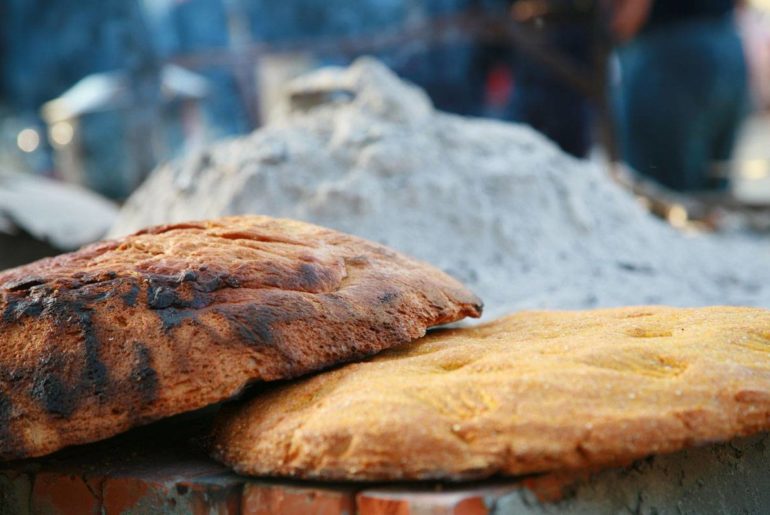
More: www.dalmatia.hr
Photo: www.dalmatia.hr, croatia.hr, archive of tourist boards of Split - Dalmatia County

Fall in love with Škrip - a living postcard of the essence of Brač
MJESTO ŠKRIP KULTURNA JE SENZACIJA NEDALEKO SUPETRA
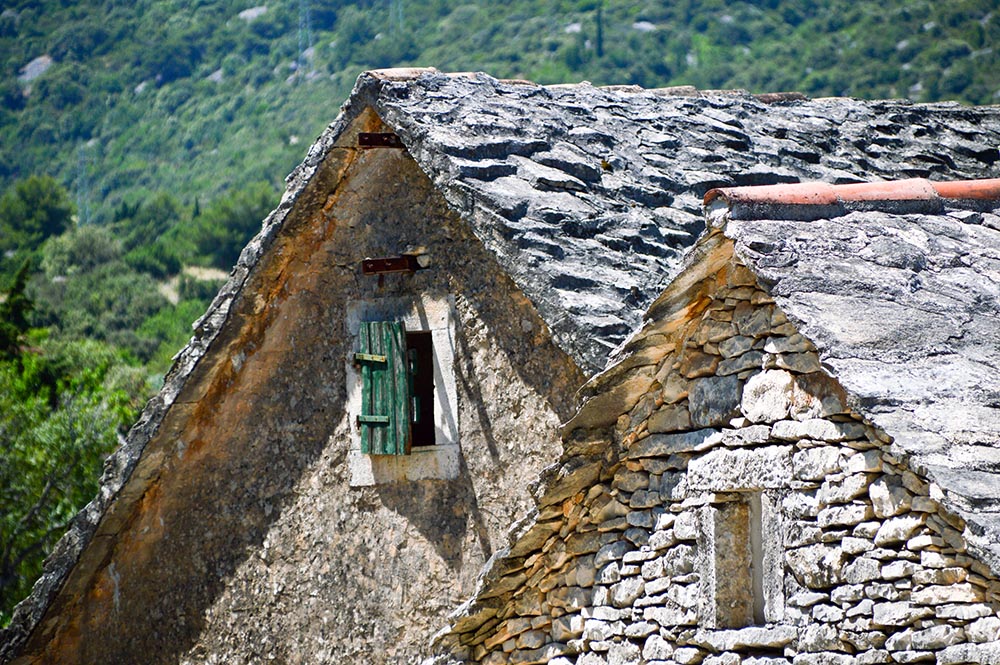
Brač is mystical, intriguing, stratified and interesting - as
craggy as the hrapoćuša cake from Dol, ancient and irresistible like a crunchy
vitalac (a popular dish from Brač).
While these dishes make
the mouths of experienced gastronomists water, only ten kilometres away from
Supetar, lie delicacies hidden for culture lovers! Get to know the most
authentic place on the island of Brač - the ancient Skrip!
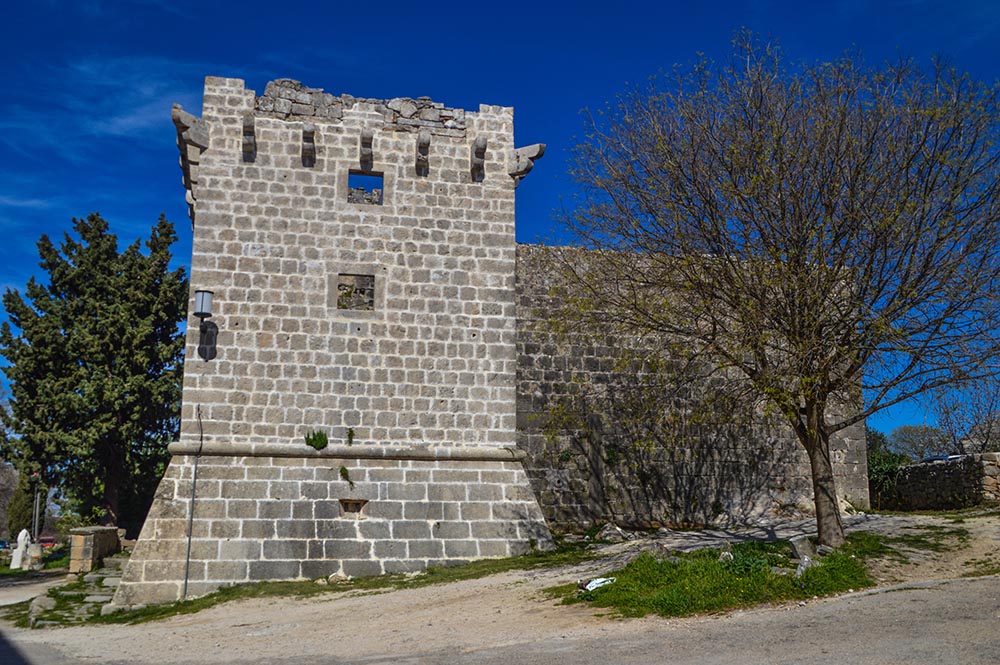
The Museum of the Island of Brač, located in the Radojković tower from the 16th century, is one of the most visited museums in all of Croatia. The foundations on which it is located date from about 1500 BC, and legend has it that in the lower part of the museum and the tower, which houses a Roman mausoleum, lie Valeria and Priska - the wife and daughter of Emperor Diocletian!
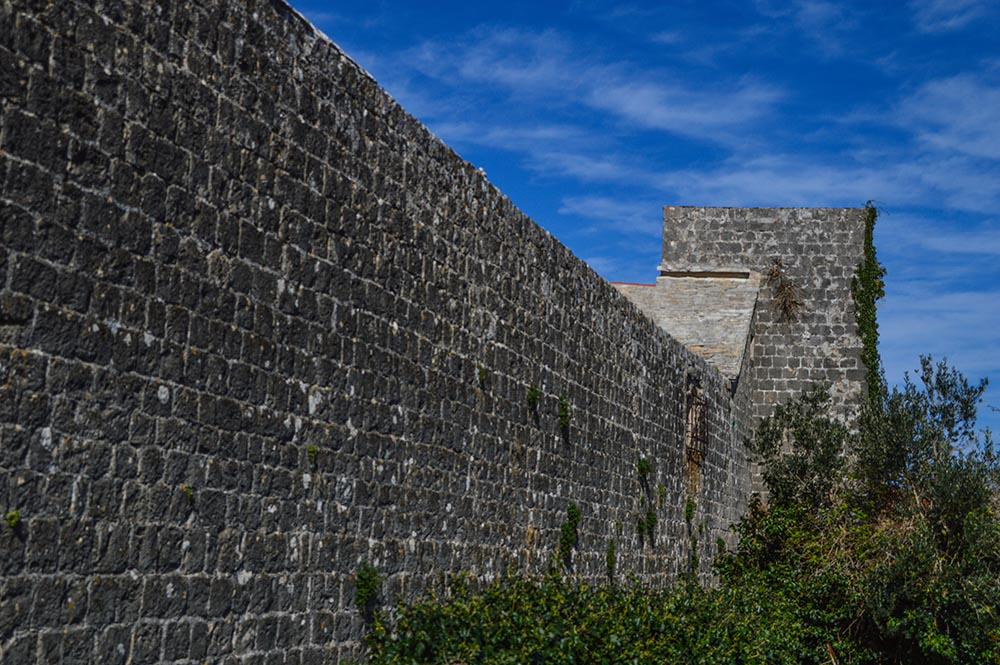
Enjoy viewing Roman reliefs and altars, as well as items from the more modern history of Brač - such as chests, paintings, newspaper clippings, antique furniture and antique farm tools.
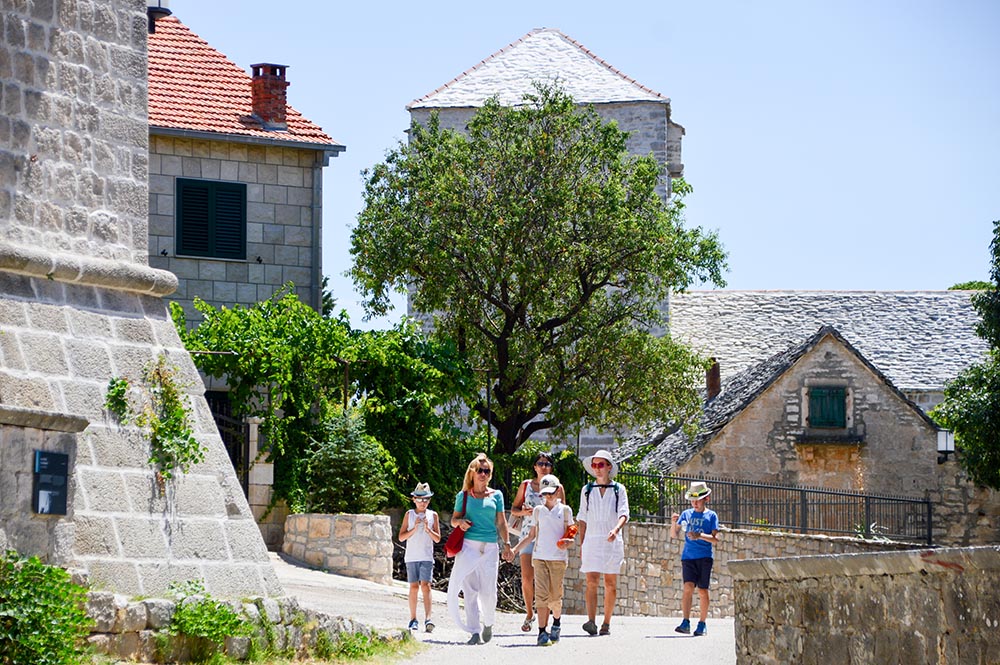
However, this is not the end of this island’s gems of historical heritage - visit the Cerinić family's castle on the main square with two Roman sarcophagi, and in the nearby cemetery, the picturesque little church of the Holy Spirit (Sveti Duh) from the 4th century!
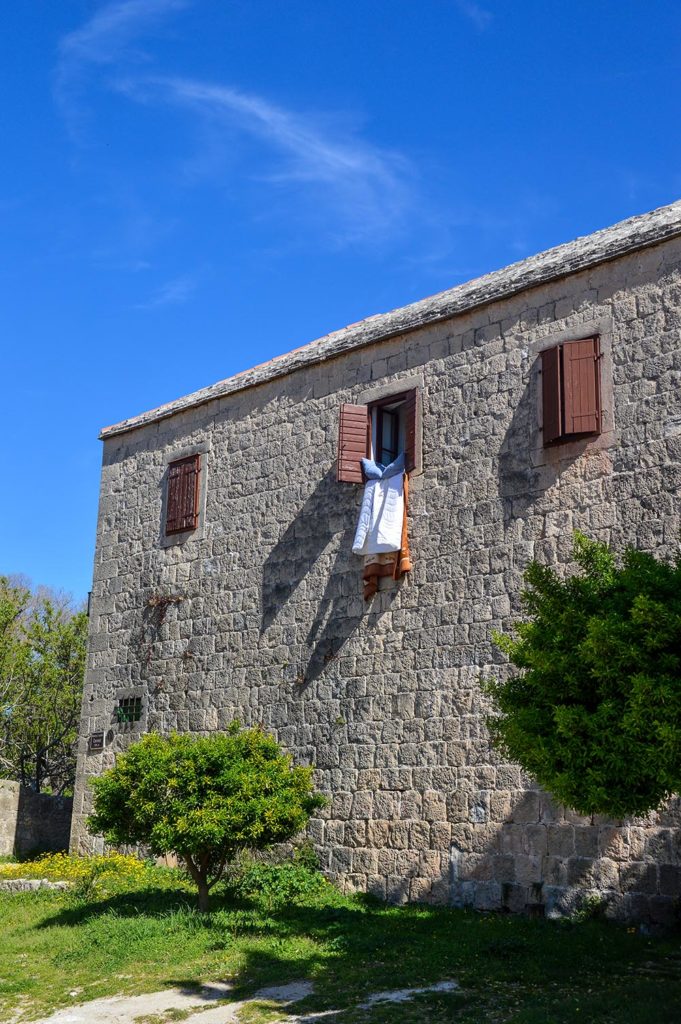
If you’re a lover of valuable sacral heritage, you will also be delighted by two paintings by the skillful Venetian mannerist-style painter Palma Giovane of the Baptism of Christ, carefully guarded in the 18th century Church of St. Helen. According to legend, St. Helen (Jelena), mother of Emperor Constantine, was actually born in Škrip, and in her honour, on August the 18th, there is a fair!

Enjoy the Chakavian dialect. Do you know that Škrip also gave a real poetic virtuoso to the Croatian literature scene? Visit the Chakavian word festival "Štefe Pulišelić" in honour of the Chakavian poet, born in Škrip, who has provided us with as many as 14 fantastic collections of Chakavian poems!

Discover the history of olive oil on Brač.
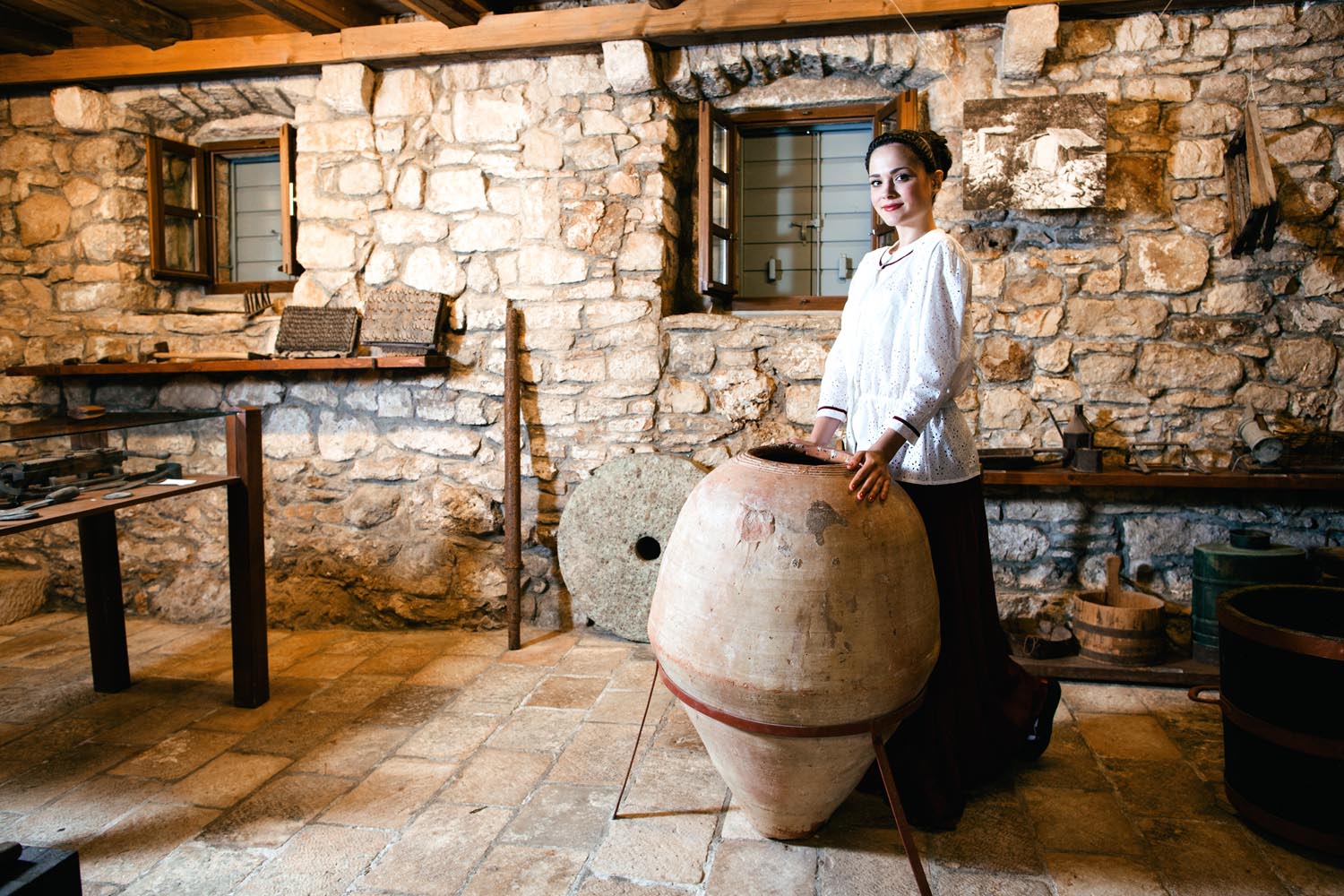
A must-visit station is the Uja Museum in Škrip, where you can get acquainted with the divine flavours and the process of making this liquid gold!
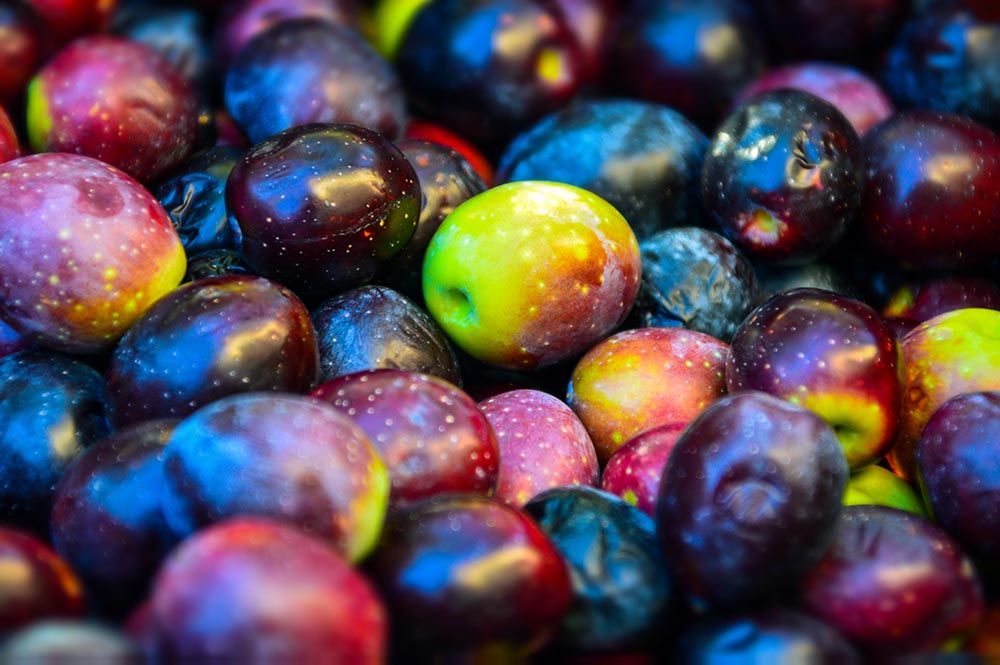

More: www.dalmatia.hr

Photo: www.supetar.hr , TB Supetar, author: Sanja Grgić Ćurić

